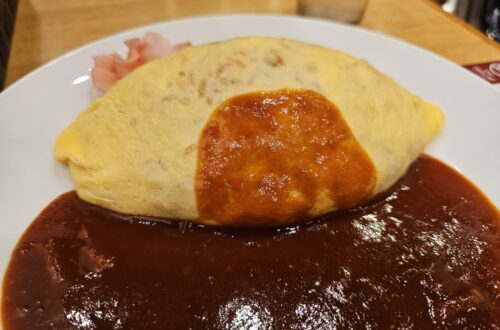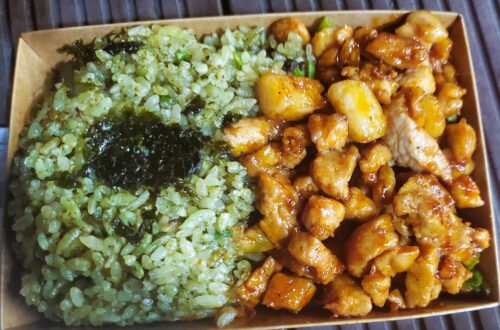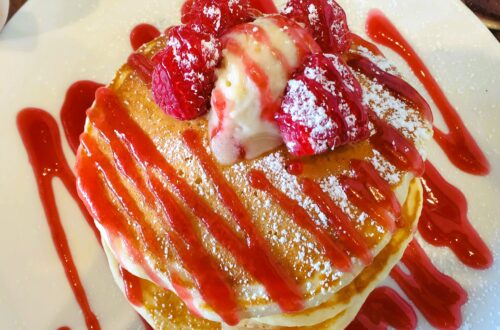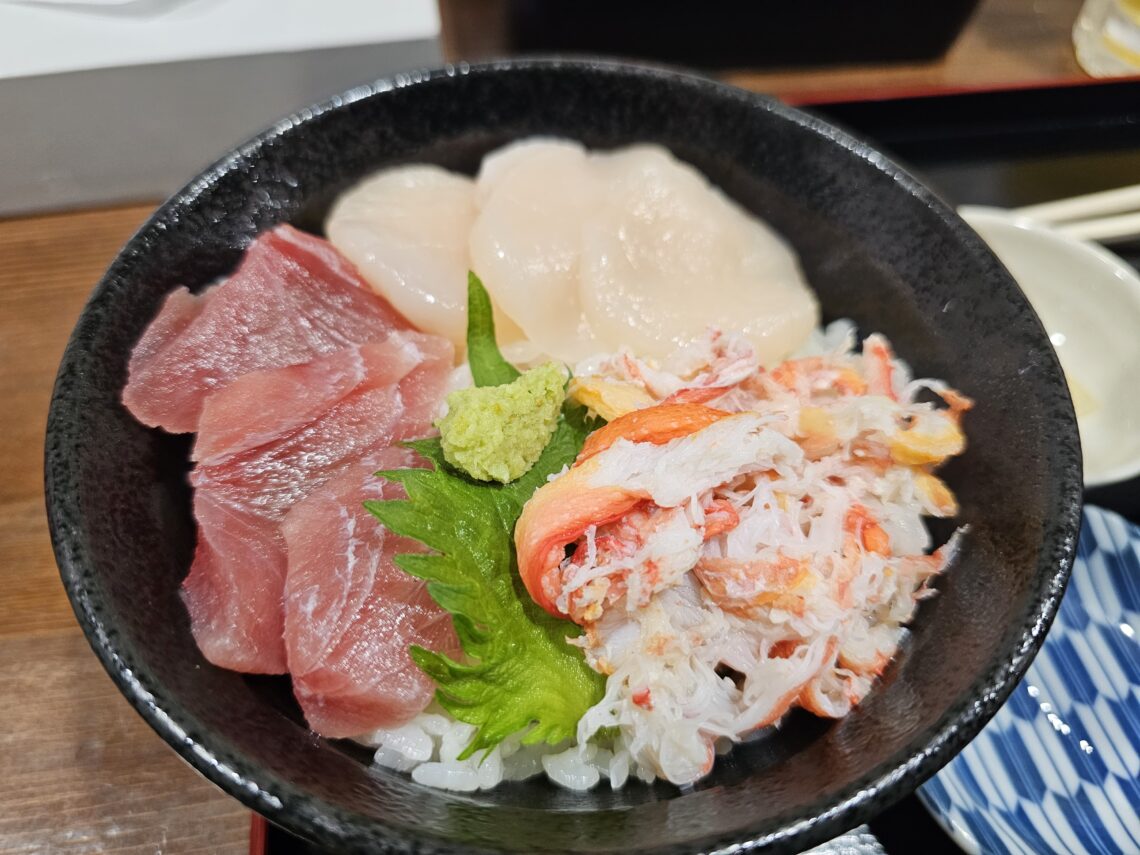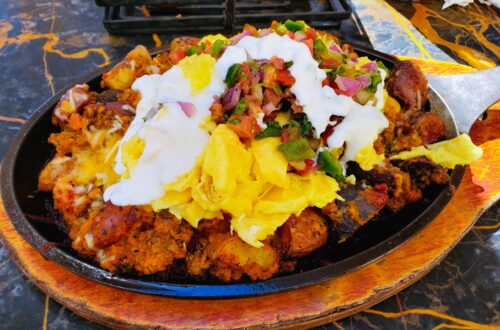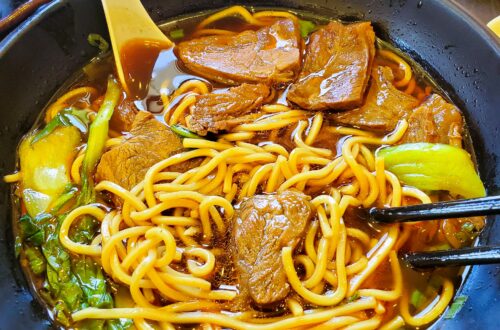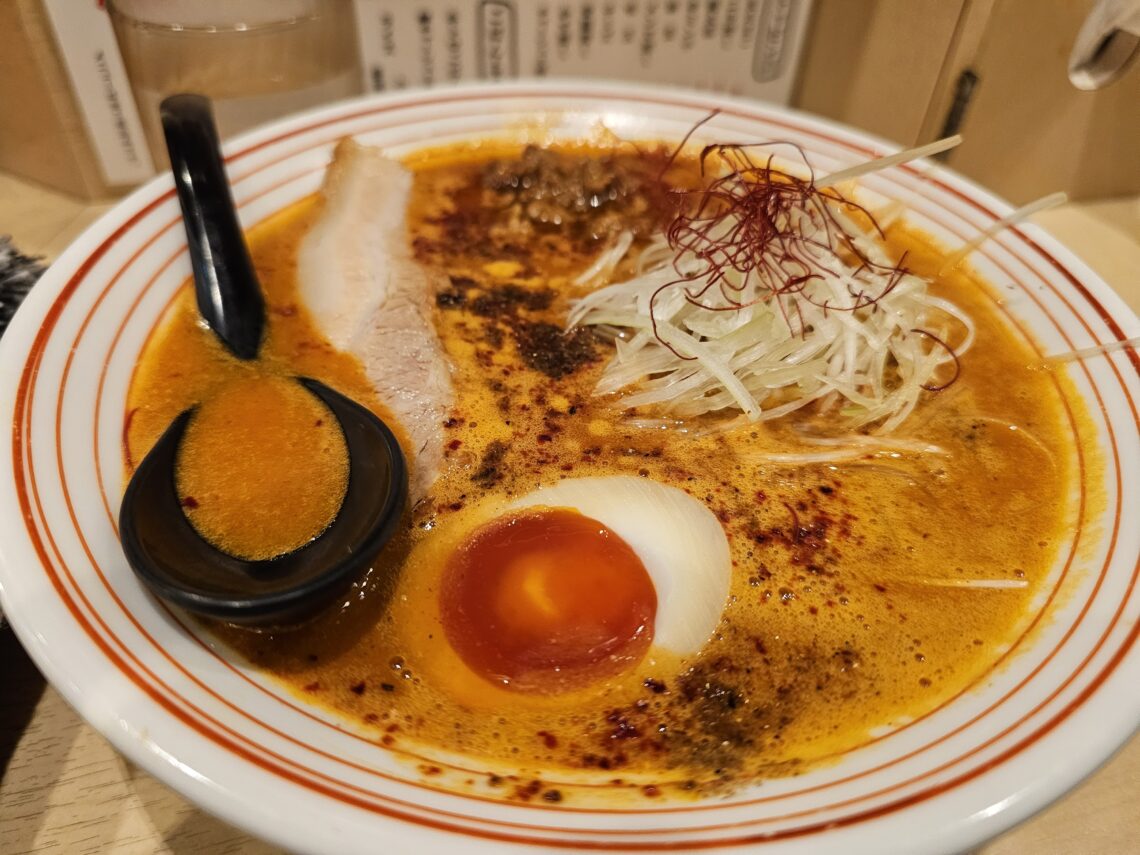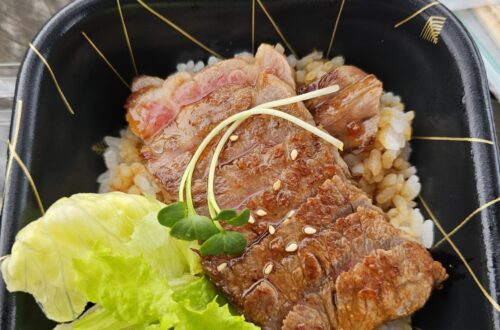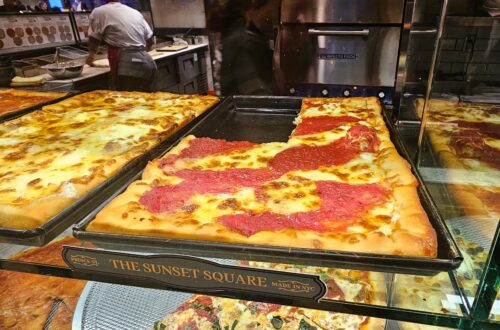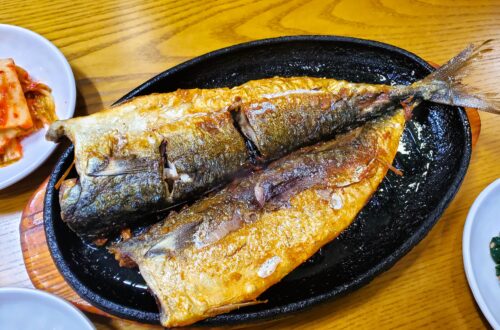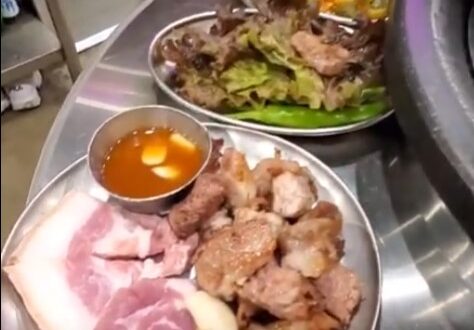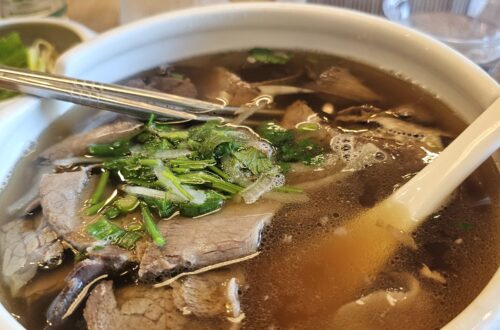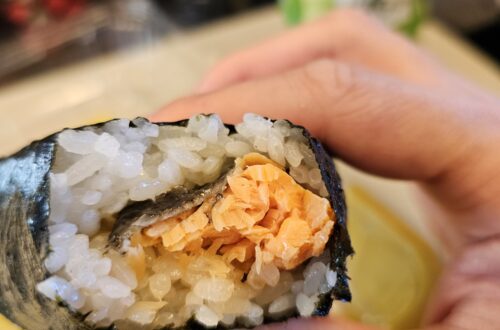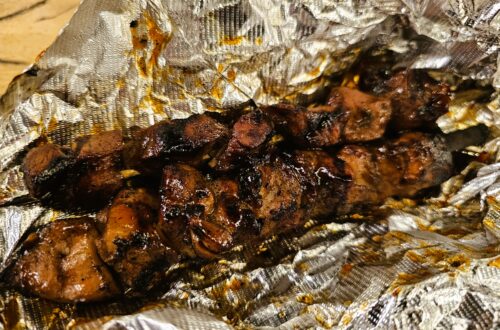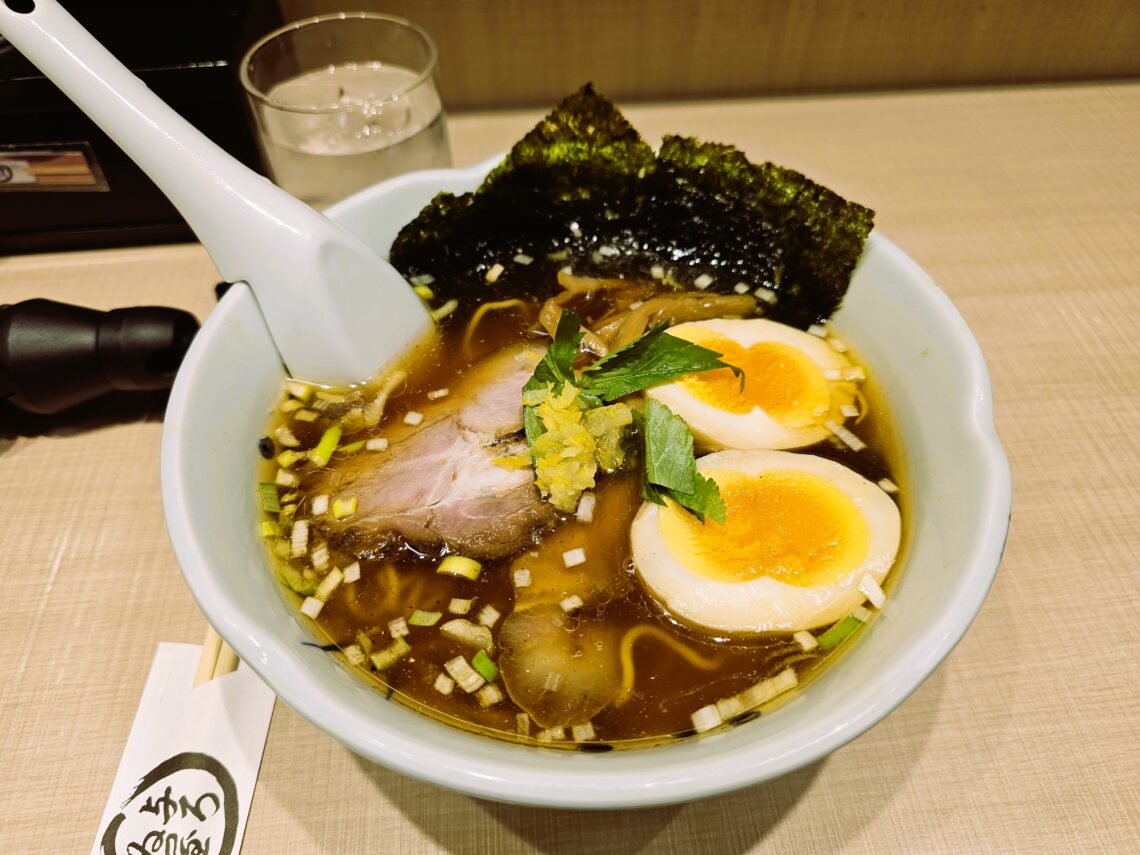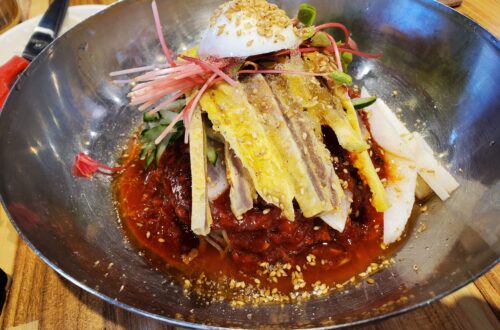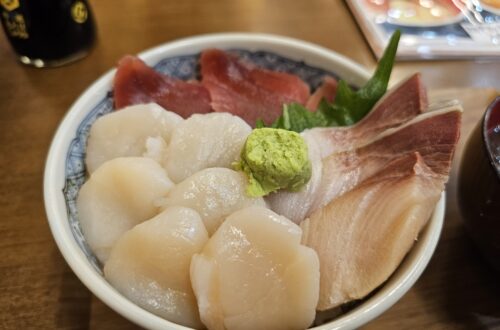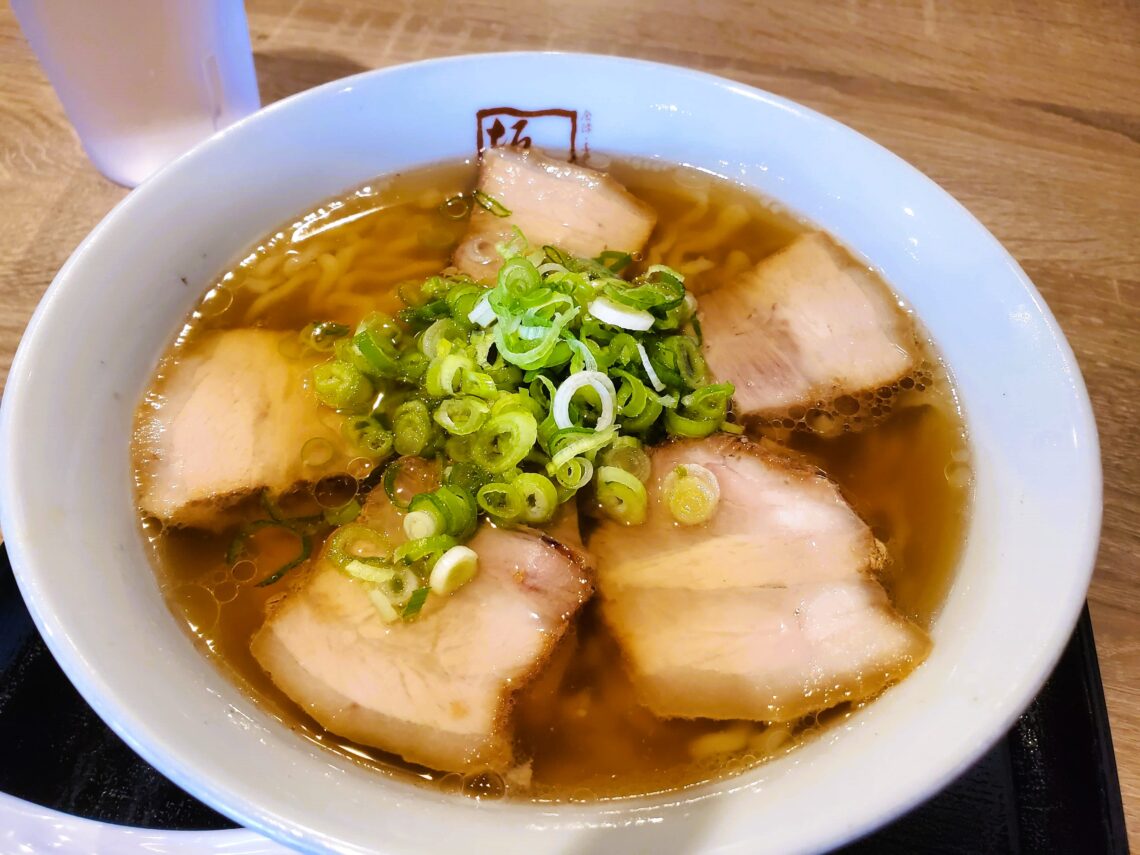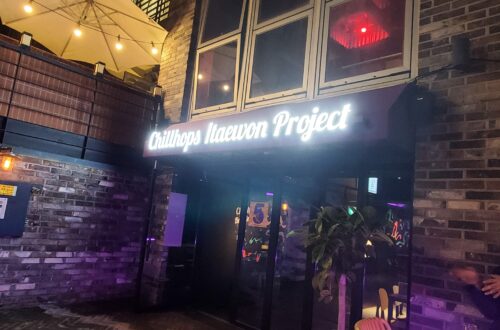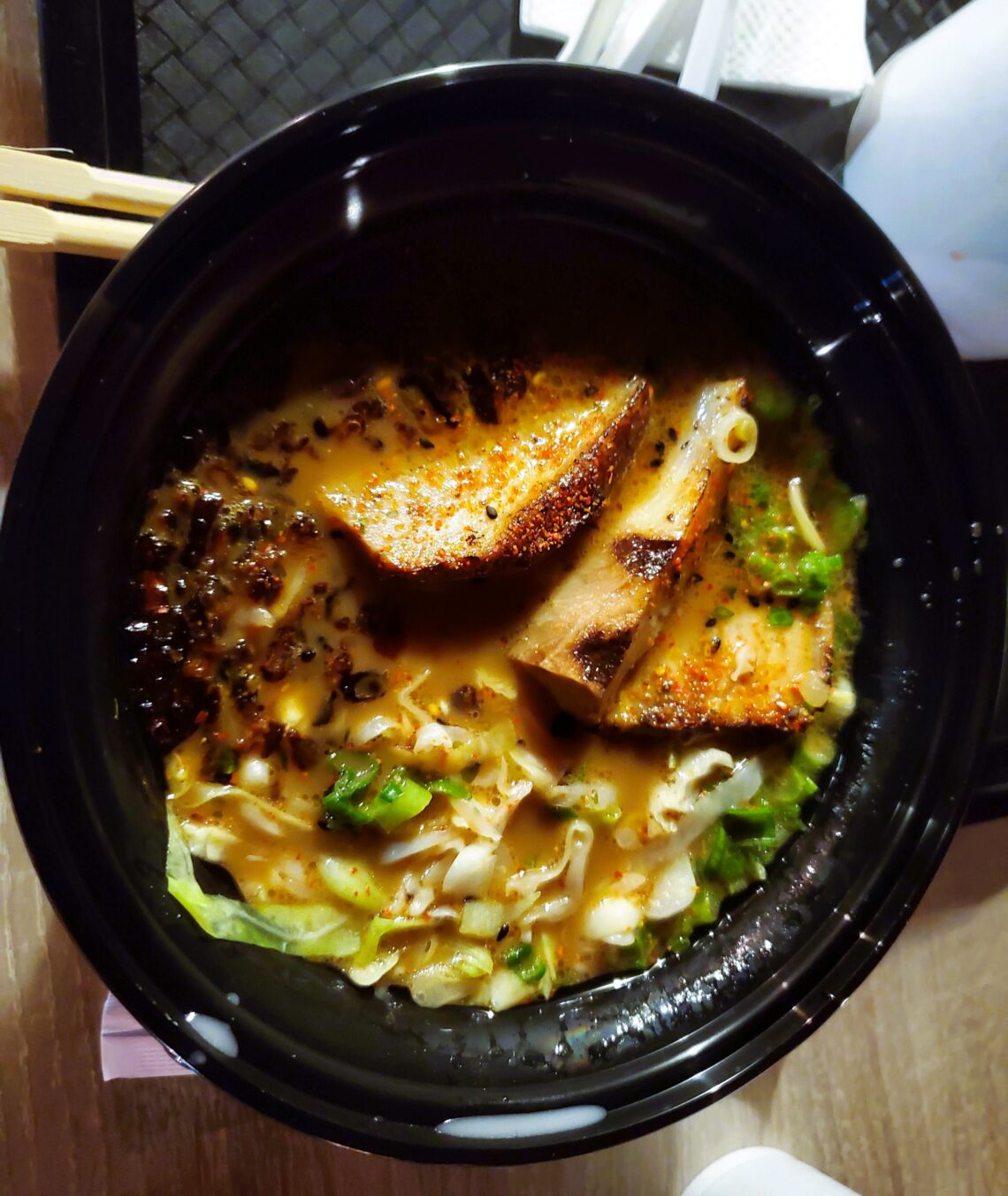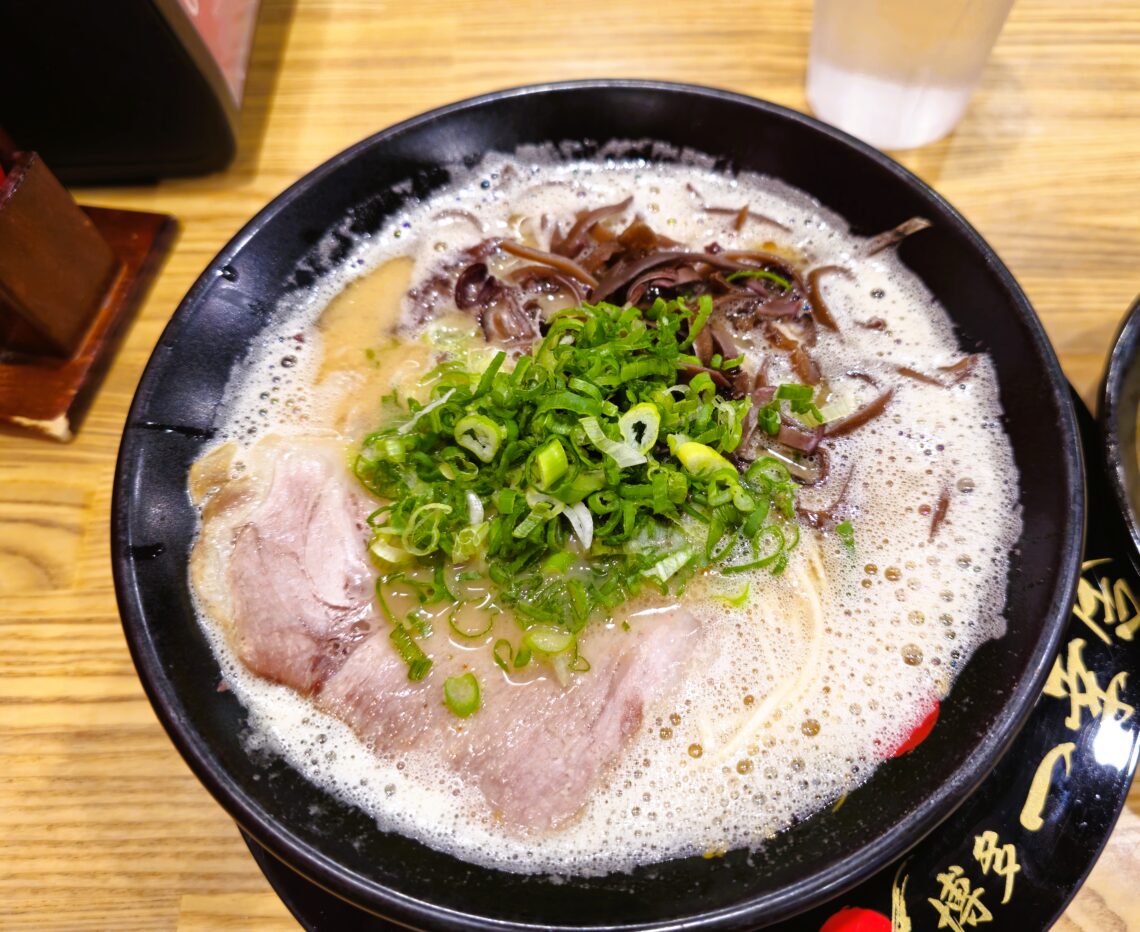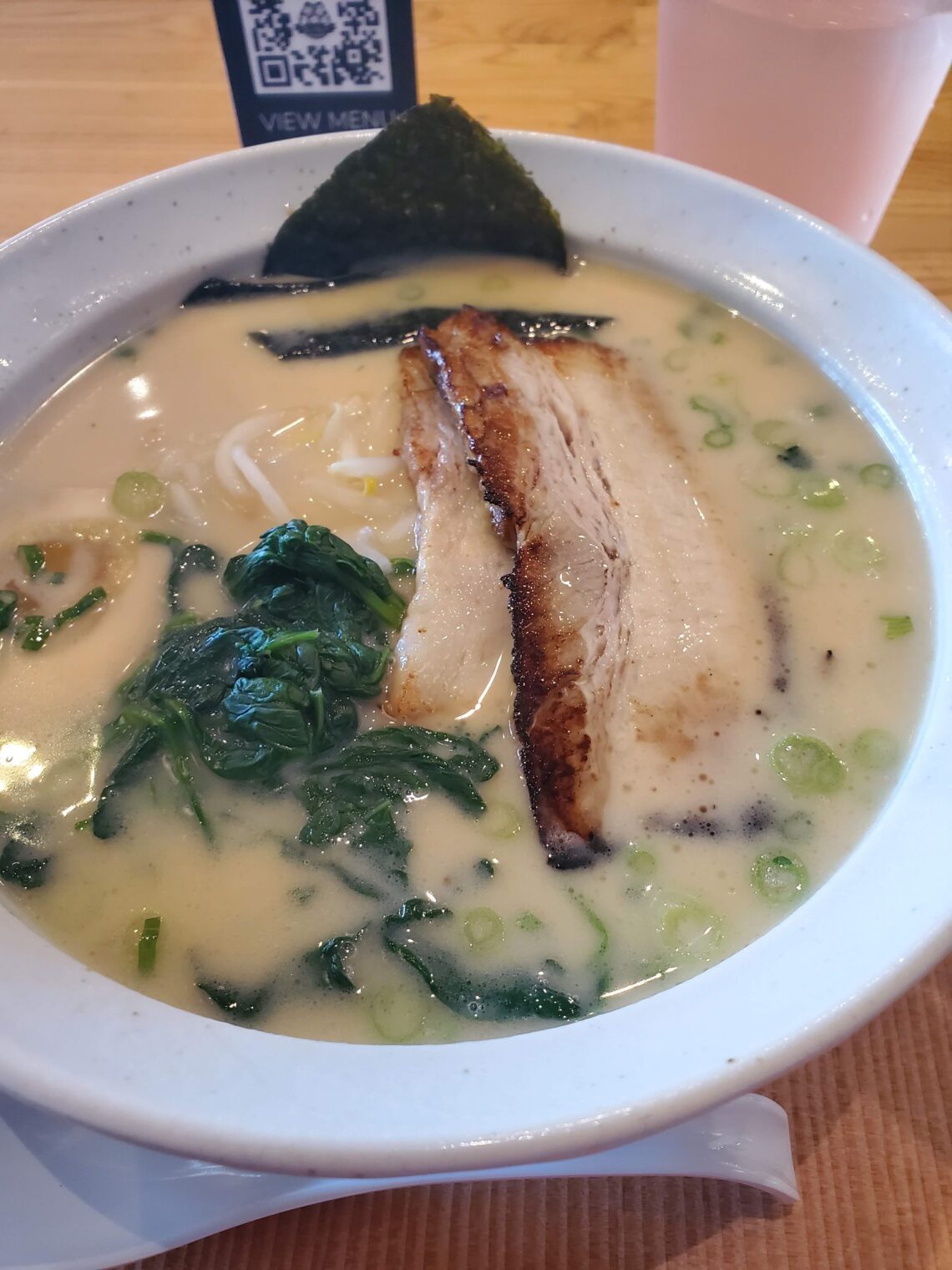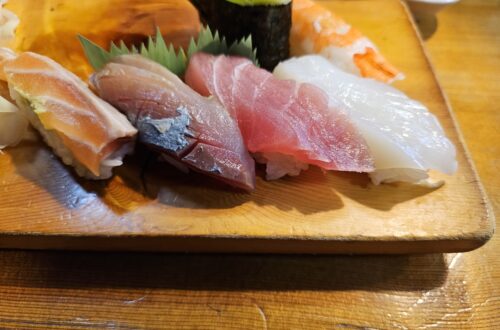-
Does Hokkaido Ramen Santouka Live Up To The Hype?
Table of Contents
Hokkaido Ramen Santouka – The Background
Hokkaido Ramen Santouka is a ramen chain from Japan that’s made its way over to the US. The chain originates from Japan’s northern most island, Hokkaido, and has restaurants all the way to one of it’s most southern islands, Okinawa. It’s truly a nationwide restaurant but doesn’t have a ton of restaurants in total.
The first Hokkaido Ramen Santouka opened its doors in 1988 in Asahikawa, Hokkaido with a single type of ramen: shio (salt). The base broth consists of boiled down pork bones. To produce a milder flavor the bones are boiled down over a long period of time. When the white colored broth is complete, it’s never re-boiled. This is to protect the overall flavor and smell.
The menu and selection of ramen has since expanded quite a bit. Miso, soy sauce, and spicy miso have joined the salt ramen as options on the menu.
Hokkaido Ramen Santouka has found success both domestically and abroad. Locations have expanded throughout Southeast Asia and also in the US and Canada.
I went and visited the location in Costa Mesa, CA, located in the Japanese grocery mart Mitsuwa’s food court.
The Experience
I’ve been to the Mitsuwa food court before and they’ve remodeled it. The space is much more open with a lot more seating. Seating had previoulsy been problematic at peak times here. Hokkaido Ramen Santouka has been a staple in the food court for quite a while. It had been YEARS since I’d eaten it so I was certainly looking forward to grabbing a bowl here.

There’s a lot of selections to choose from. Much like in Japan, there’s a large array of plastic food in the display case showing what they offer. It’s a lot to sort through, so choosing while waiting in line can certainly be difficult!
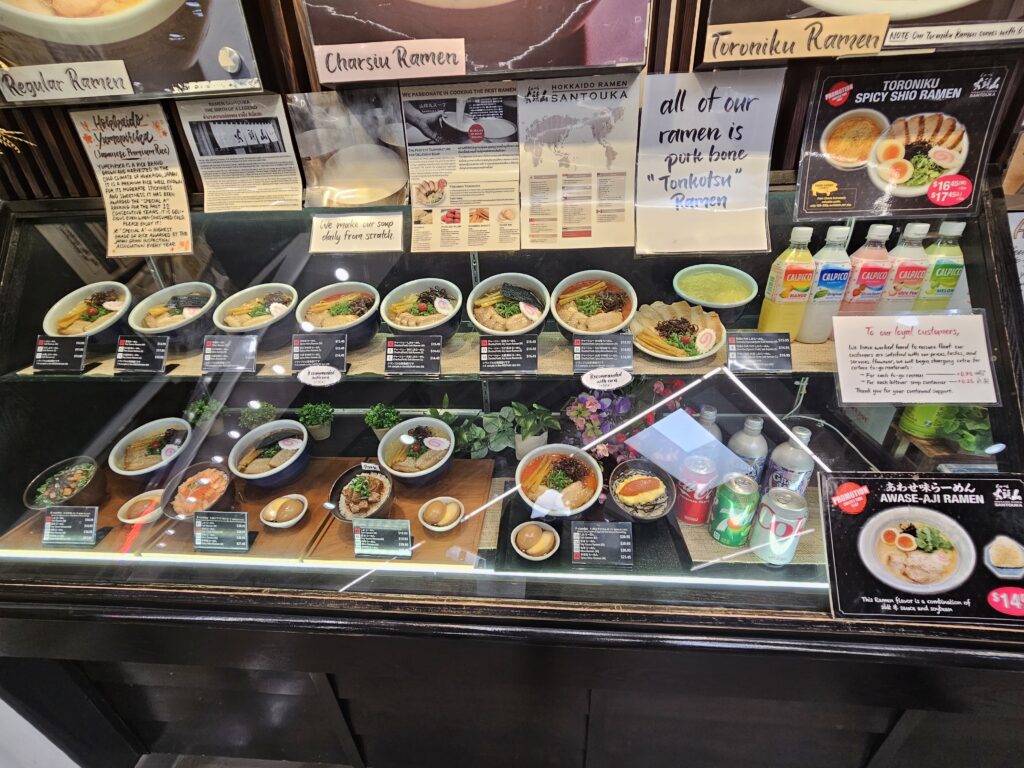
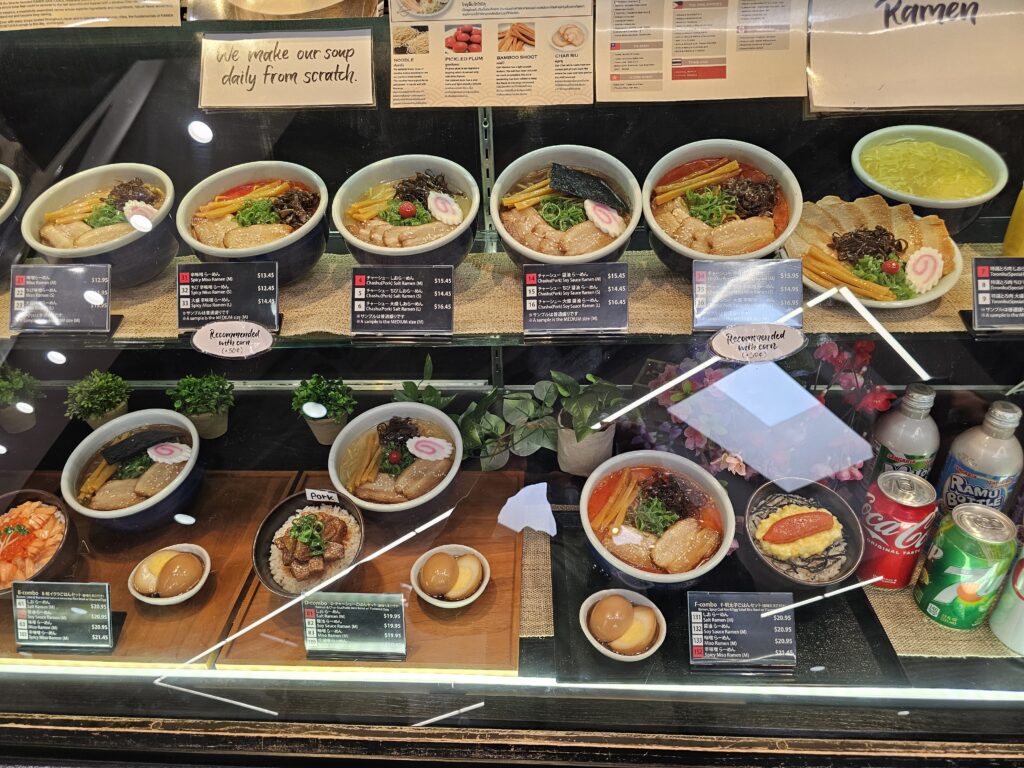
I opted for the Chashu Pork Soy Sauce Ramen (L) ($16.45). It doesn’t take too long for the food to come out, about 10 minutes or so. You get handed a ticket with a number and they’ll call it out over a microphone when it’s ready to pick it up.
The Ramen
The large is a pretty massive bowl. You get a lot of food with this. There were about 5 pieces of thick chashu in it along with bamboo shoots, green onion, a piece of nori, and the famous Santouka red pickled plum.
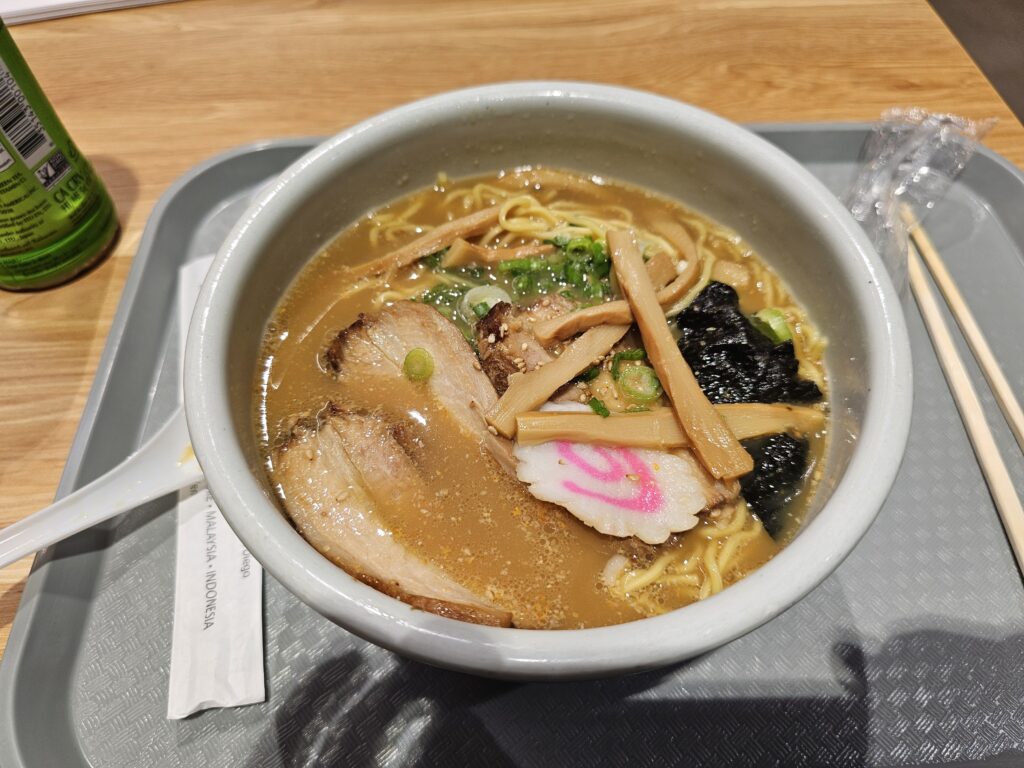
The broth offers a blend of both savory and a hint of fish, enriched with the addition of the soy sauce. It’s not an incredibly rich or deep flavored broth, which is a nice change of pace if you’ve had a lot of tonkatsu broth of late. That doesn’t mean the broth isn’t satisfying. It’s a well-balanced, almost comforting, kind of broth, which is always enjoyable.
The noodles are fairly firm. A little thick for ramen noodles but have a nice bounce to them and a good overall texture. Quite delicious!
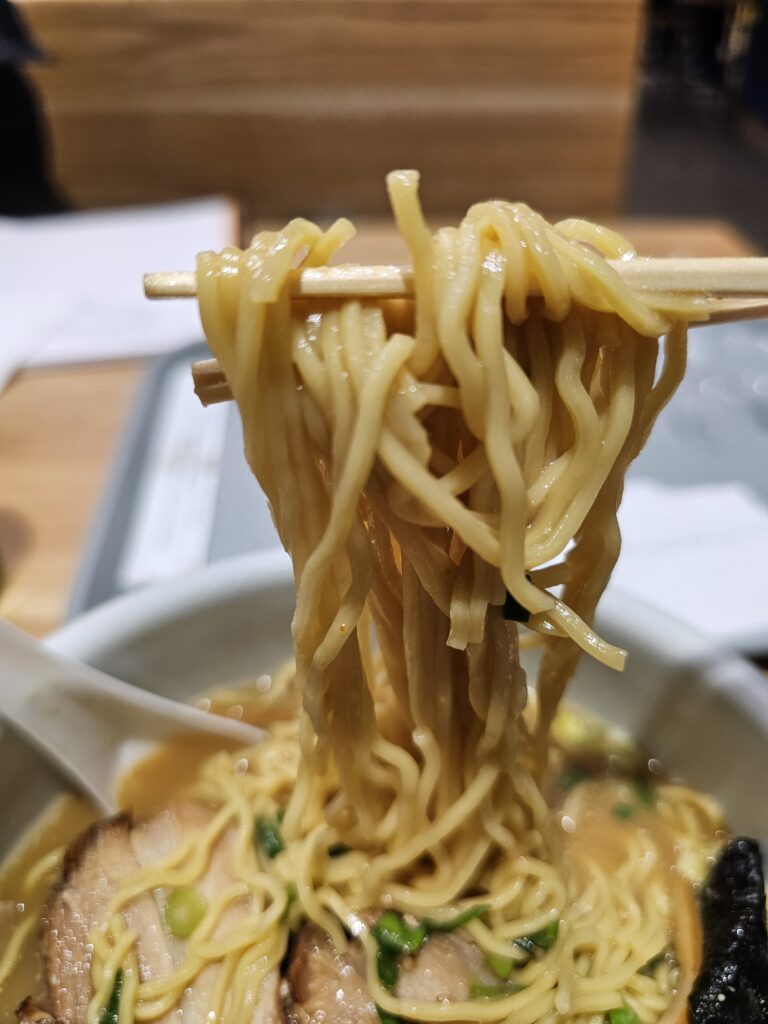
The chashu pieces were meaty, fairly thick, and well seasoned. The chashu is very flavorful, with minimal fat. With the large bowl you get a lot of pieces which was awesome.
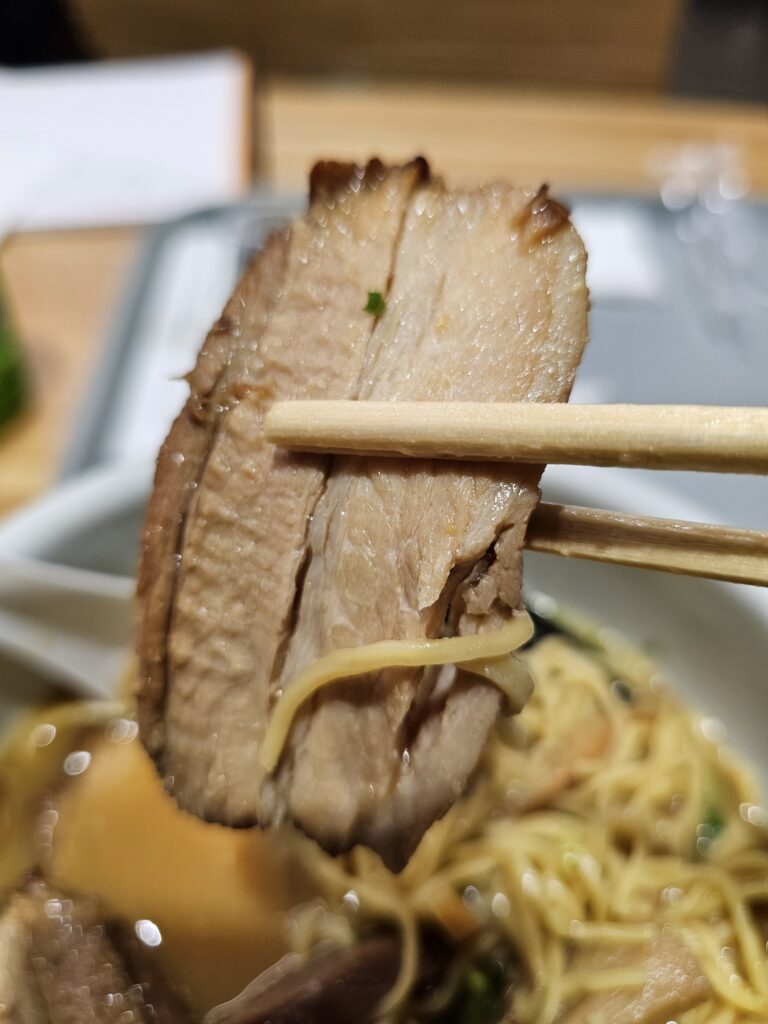
The Verdict
Hokkaido Ramen Santouka is an excellent choice for ramen in the Costa Mesa area (which has a TON of ramen places). What’s most enjoyable about it is that they specialize in shio and soy sauce ramen, which you can find at other ramen locations, but it’s not their specialty like it is here.
The soy sauce ramen is definitely a different tasting experience than the usual tonkatsu and I’d highly recommend giving a try if you’re a ramen lover wanting to try something newish.
Afterwards you can also walk around Mitsuwa and do some shopping and grab some Japanese snacks to boot. Not too shabby!
-
10 Amazing Foods In Japan That Are A Must Try
There’s no question there’s a ton of unique attractions and sights to see while visiting Japan. It’s a truly beautiful, bustling country which never ceases to amaze me. One of the biggest draws of the country for myself is the food. To say the food in Japan is delicious would be an understatement. It’s absolutely amazing.
Here are some of the standouts that anyone visiting Japan must try!
Table of Contents
Mochi
Mochi is certainly one of the most 10 amazing foods in Japan. A traditional rice cake, mochi is chewy and has a chewy texture and can be either savory or sweet. It’s a versatile rice cake which can be filled with various fillings like red bean paste and have different types of toppings like fruit on top. The freshness, and how soft and chewy the mochi is in Japan really stands out. While mochi can be found worldwide, the mochi in Japan is on a different level!
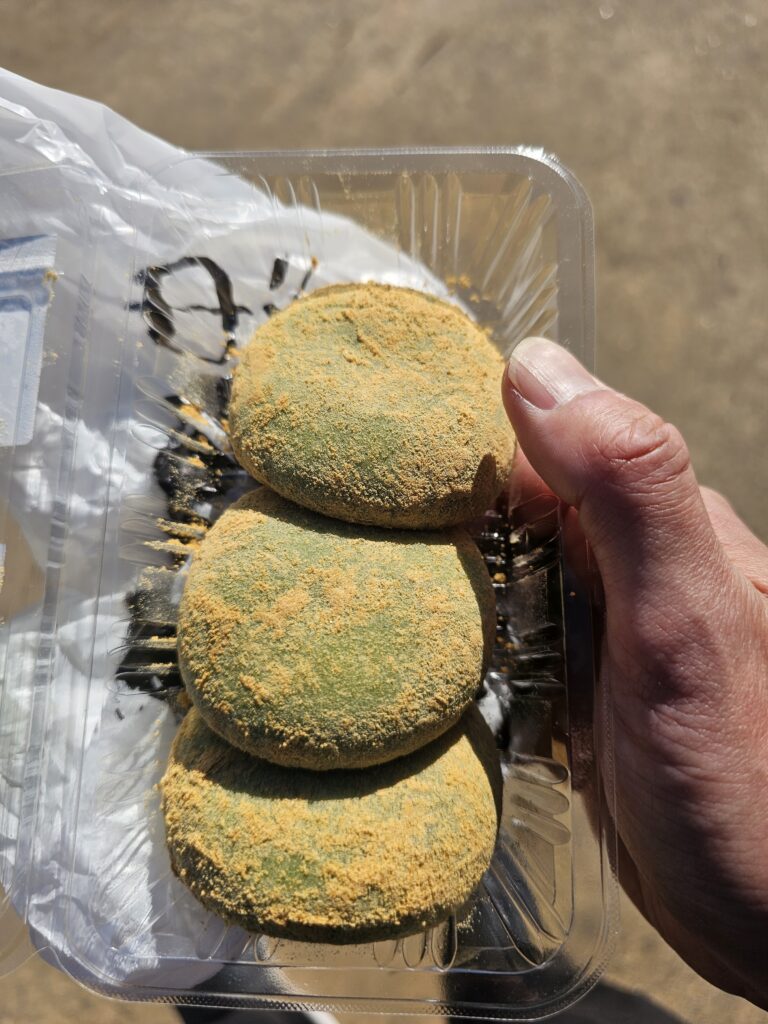
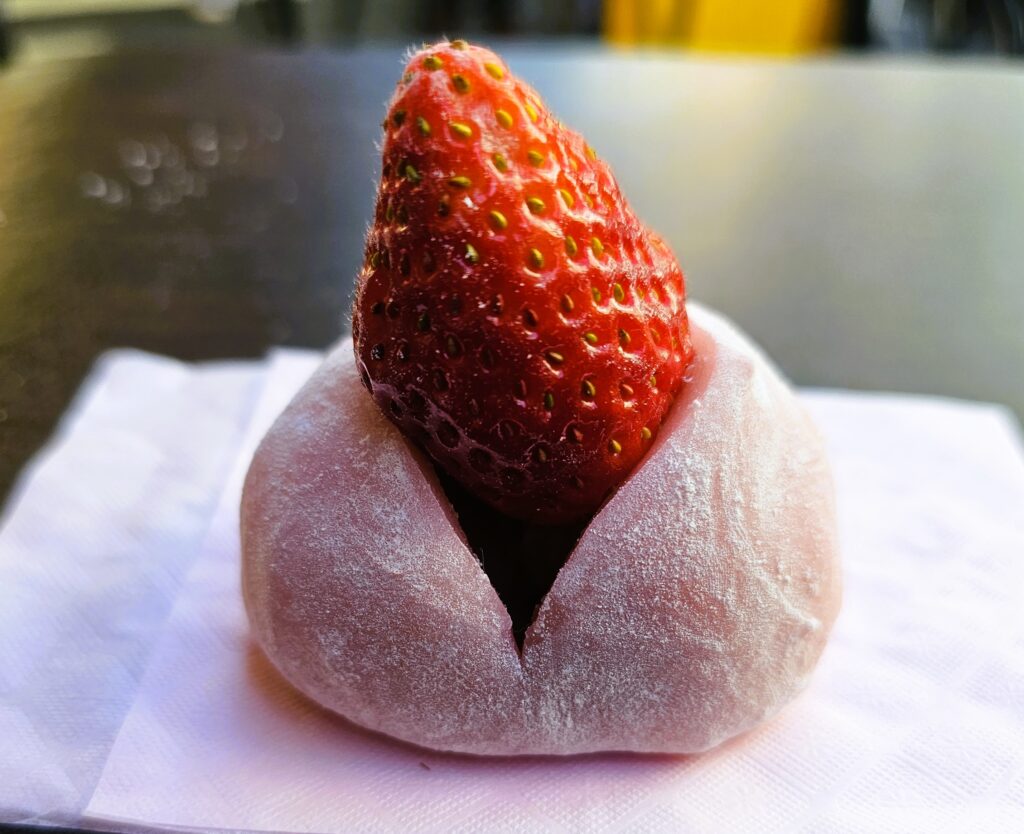
Ramen
Ramen is easily one of the top 10 amazing foods in Japan. Everyone knows ramen, let’s be honest. Ramen is everywhere in the world but it’s something that absolutely must be tried in Japan. The number of ramen places and different types of ramen are insane. The atmosphere itself, with many ramen shops just being a counter that seats 15 or less is a pretty cool experience. The ordering process, with the ordering machines in the front of some ramen restaurants is certainly an experience as well.

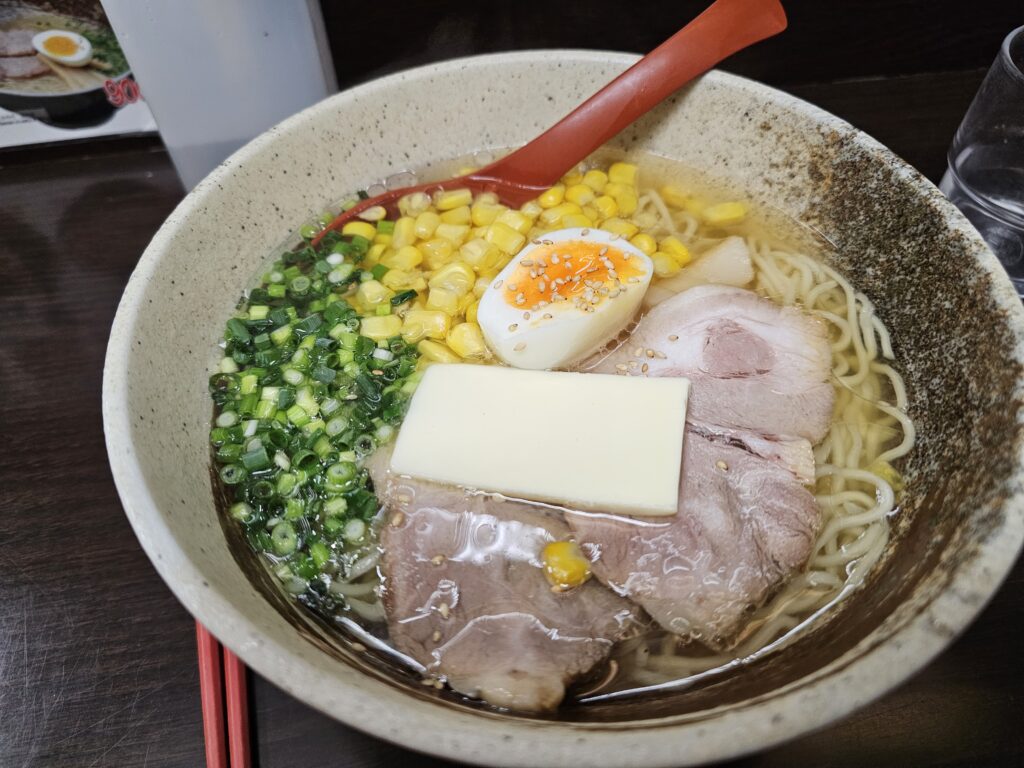
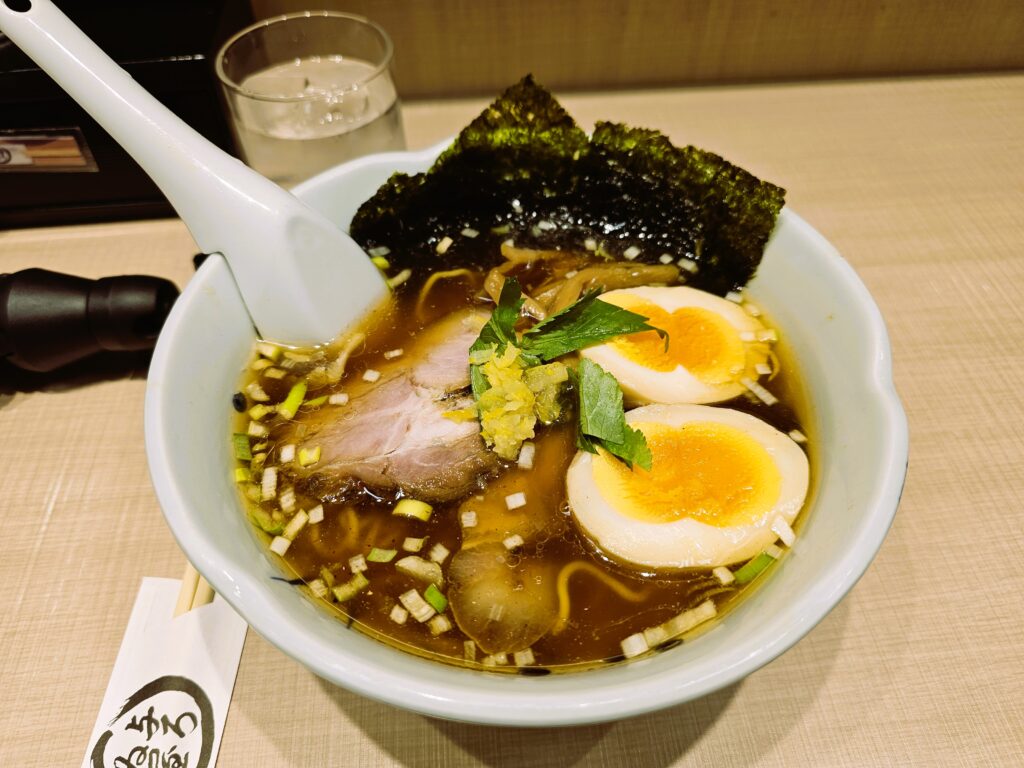
Sushi / Sashimi / Chirashi
Without a doubt, sushi in all it’s variations is one of the 10 amazing foods in Japan that you must have. Japan has some of the best quaility seafood in the world and the quality of the sushi / sashimi / chirashi certainly reflects this. Whenever I go to Japan I eat as much tuna as I possibly can. It’s the best tuna I’ve ever had. The crab, scallop, uni, it’s all outstanding. Whatever your fish of choice is, you will not be disappointed by the quality.
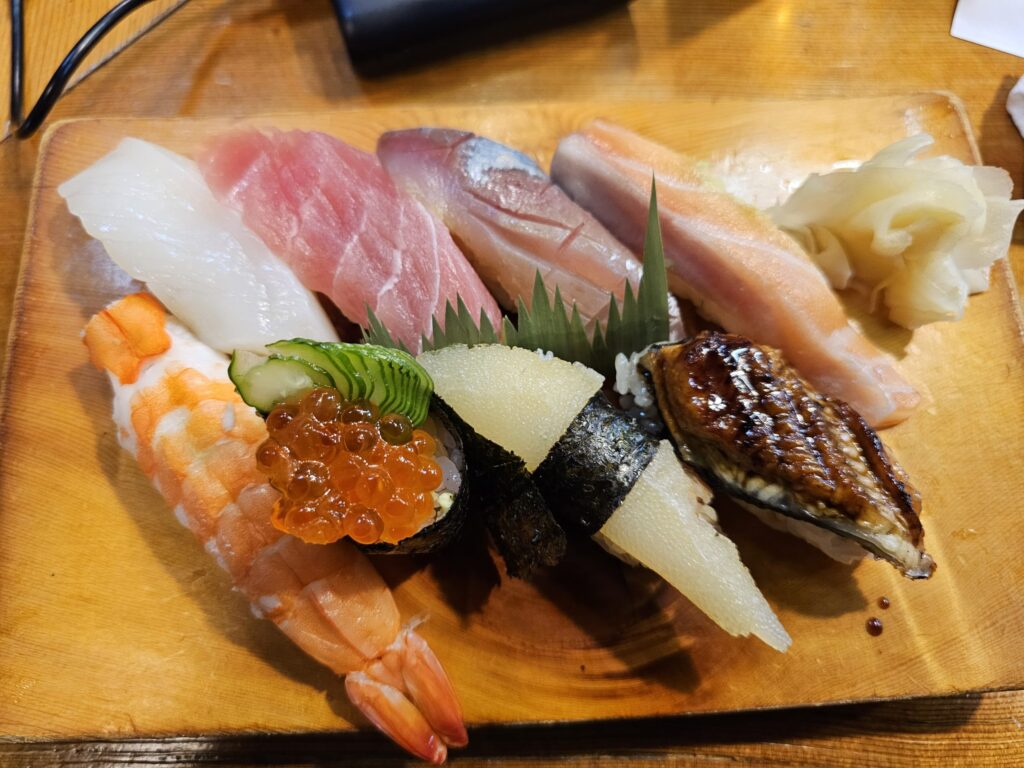

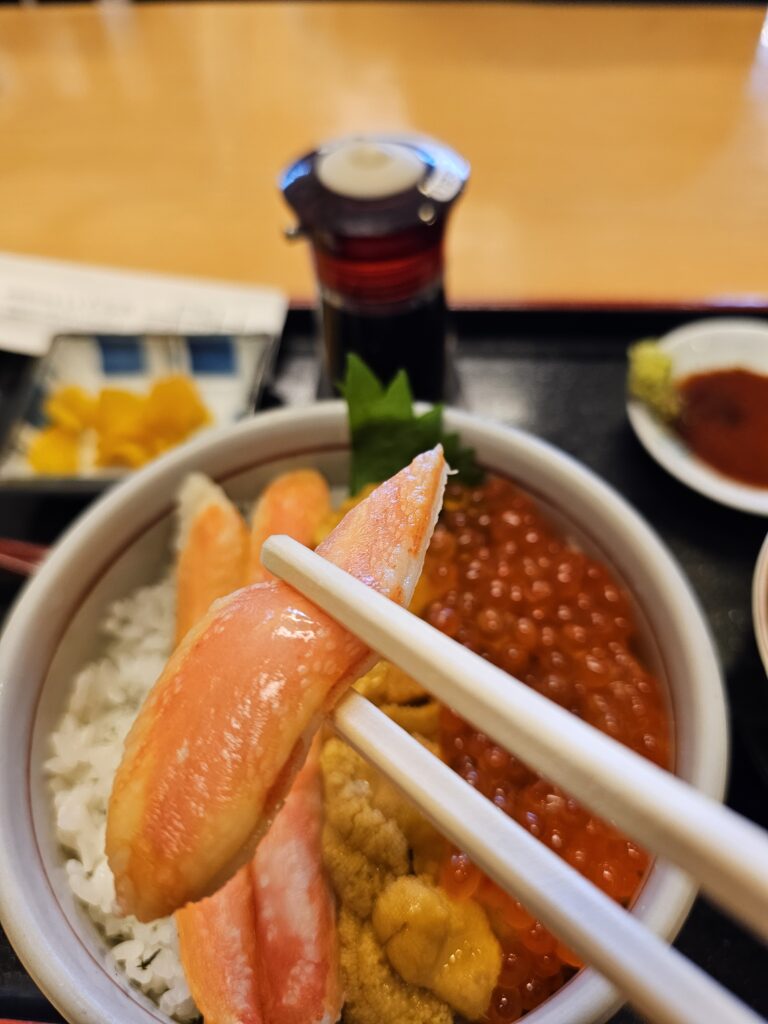
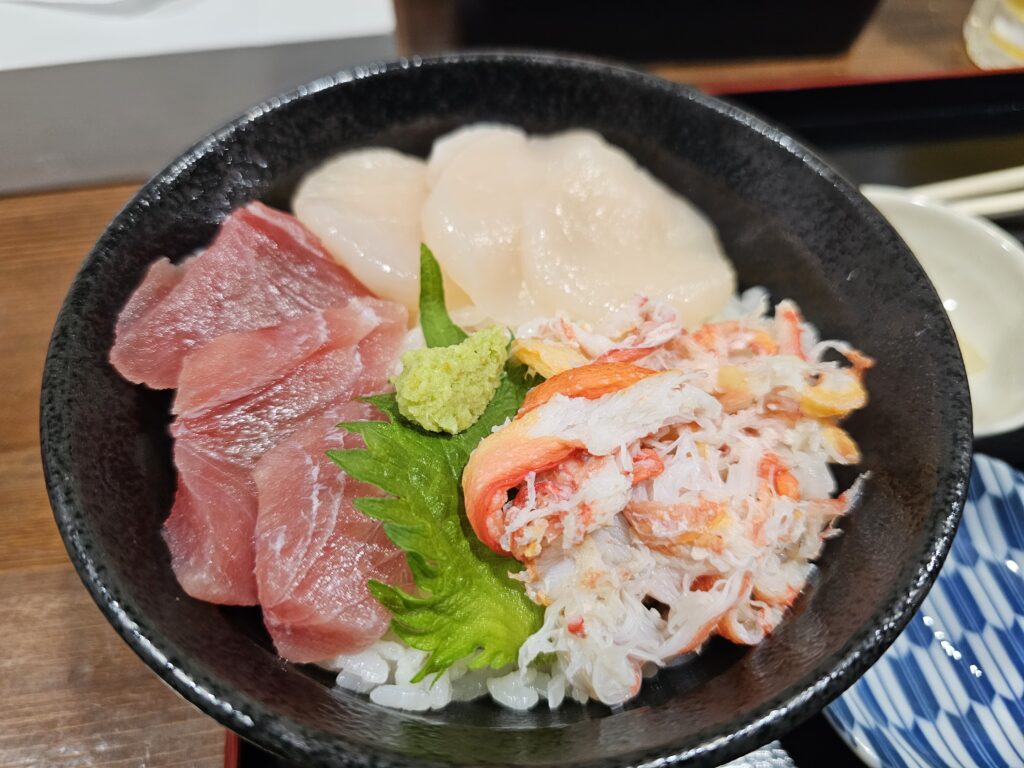
Fruit
Speaking of high quality, the fruit in Japan is on another level from what I’ve ever had in the United States. Quality takes precedence over quanity when it comes to Japanese fruit. Farmers are very attentive and closely monitor their crops to insure their fruit meets lofty standards in association with the fruit texture, sweetness, size, and shape.
These high standards, along with the country being smaller, which leads to less time for the fruit to make it from the farm to the store, leads to some exceptionally high quality fruit.
The melons and strawberries I had were the juiciest and sweetest I’ve ever experienced. With quality comes higher prices though. The fruit is definitely more expensive, but it’s well worth it. Fruit may not be on the radar as one the 10 amazing foods in Japan, but it certainly deserves to be!
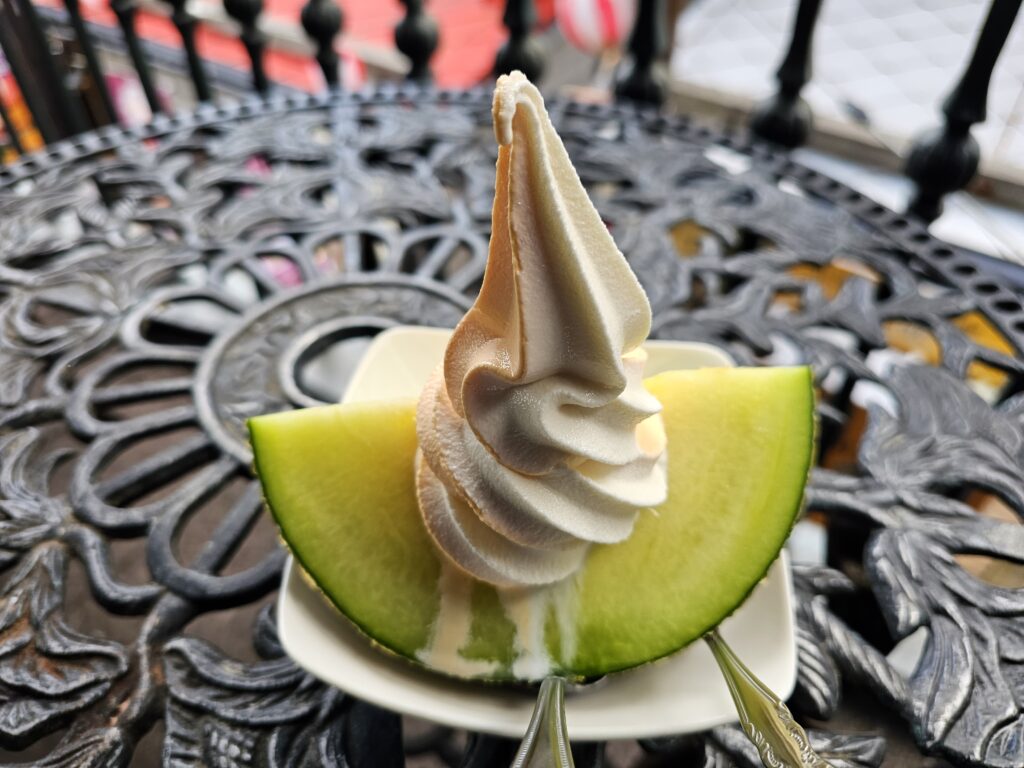
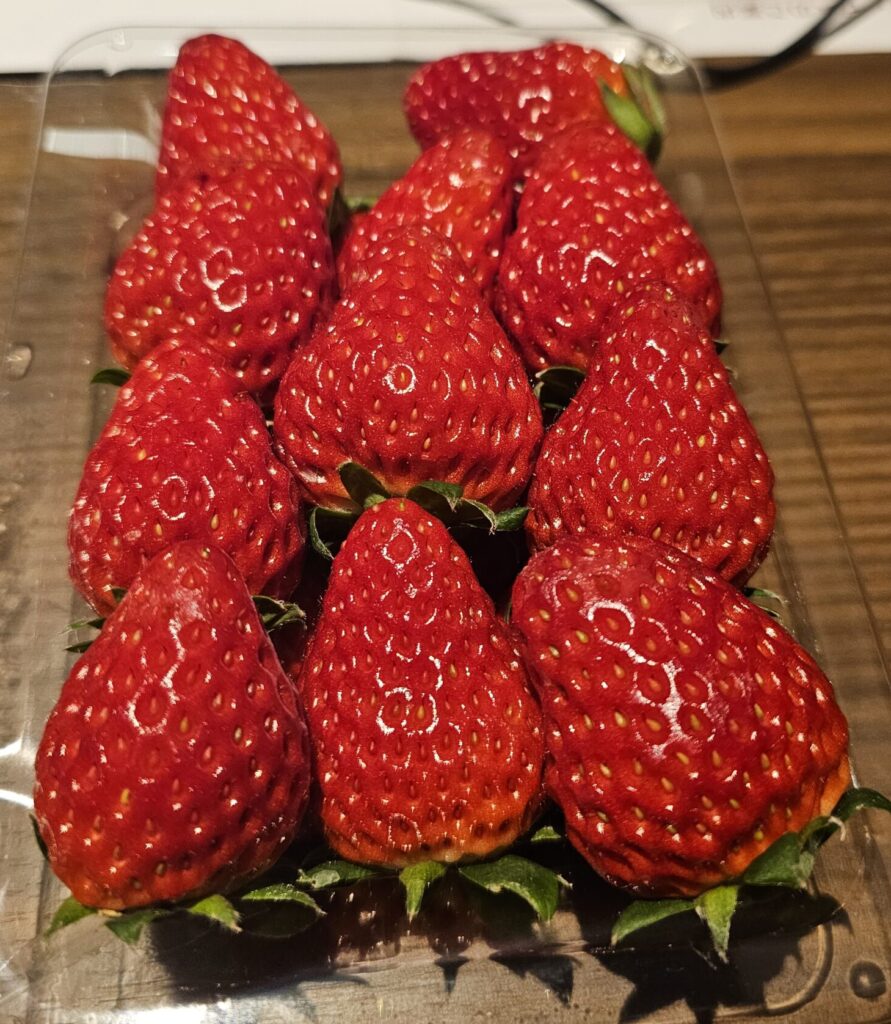
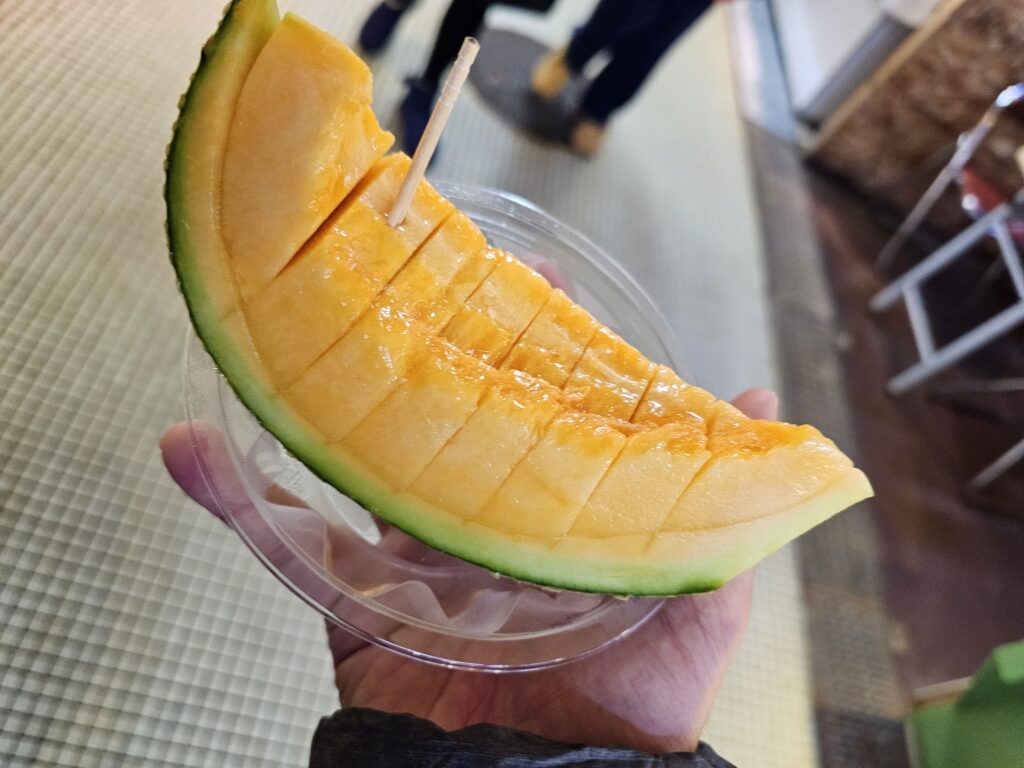
Japanese Curry
Japanese curry is a very popular food in the country and is considered a comfort food and is one of the 10 amazing foods in Japan. Japanese curry is its own unique curry and different from other types of curry found in the world. It’s a little bit thicker and is more sweet and savory. Commonly made with both a protein (beef, chicken, or with tonkatsu) and vegtables, it’s more in the vein of curry stew. Served with Japanese short grain rice which is stickier than basmati rice, the rice also really soaks up the curry.
Outside of rice curry, there’s other ways to enjoy Japanese curry as well. One of those “other” dishes is curry soup. A staple in Hokkaido, this is Japanese curry in soup form. While I’ve had curry rice many times, I’d never heard of curry soup before. If you’re a curry fan than this is a must try while traveling through Japan. I actually enjoyed it more than the curry rice. Very tasty with different vegetables and fall- off-the-bone chicken, this was one delicious dish!
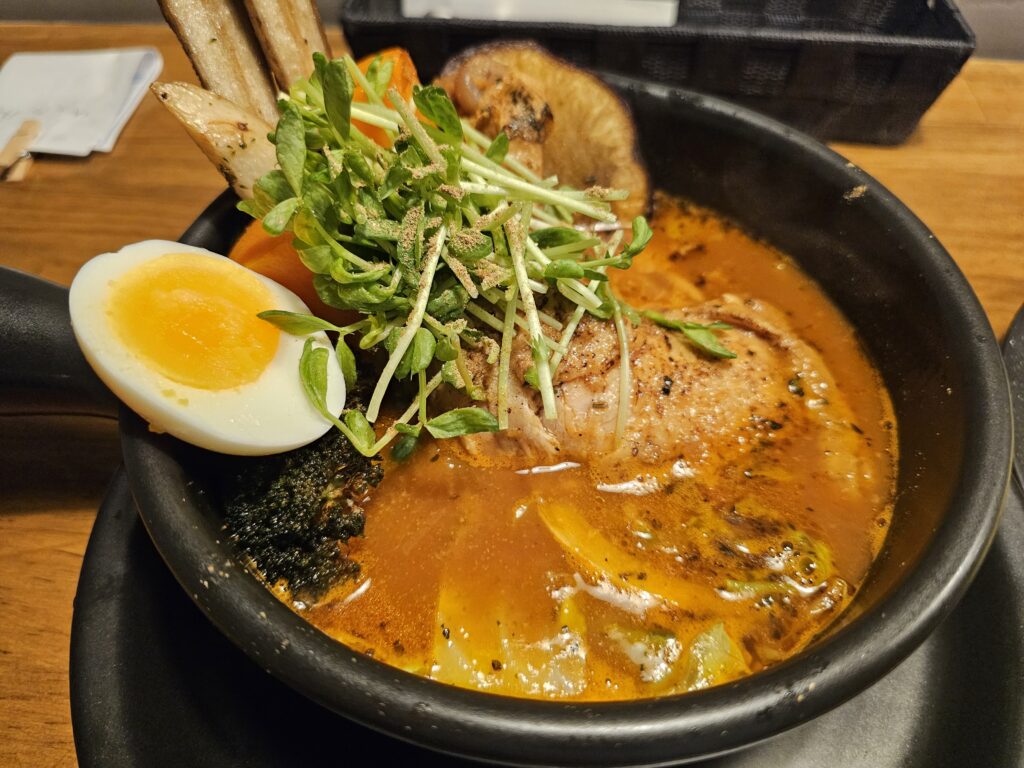
Kobe Beef / Wagyu
Kobe beef is a worldwide delicacy renowned for its flavor, tenderness, and fatty, well-marbled texture which easily places it amongst 10 amazing foods in Japan. As the name implies, Kobe beef is cultivated from Japanese Black cattle which is raised in the Hyogo Prefecture region of Japan, near Kobe. It’s considered the highest quality beef that Japanese cattle can produce and is a must try! There’s various cuts of this and obviously the higher the price the better the cut and quality. So the experience can certainly vary upon how much you’re willing to spend.
But it’s an experience that must be tried!
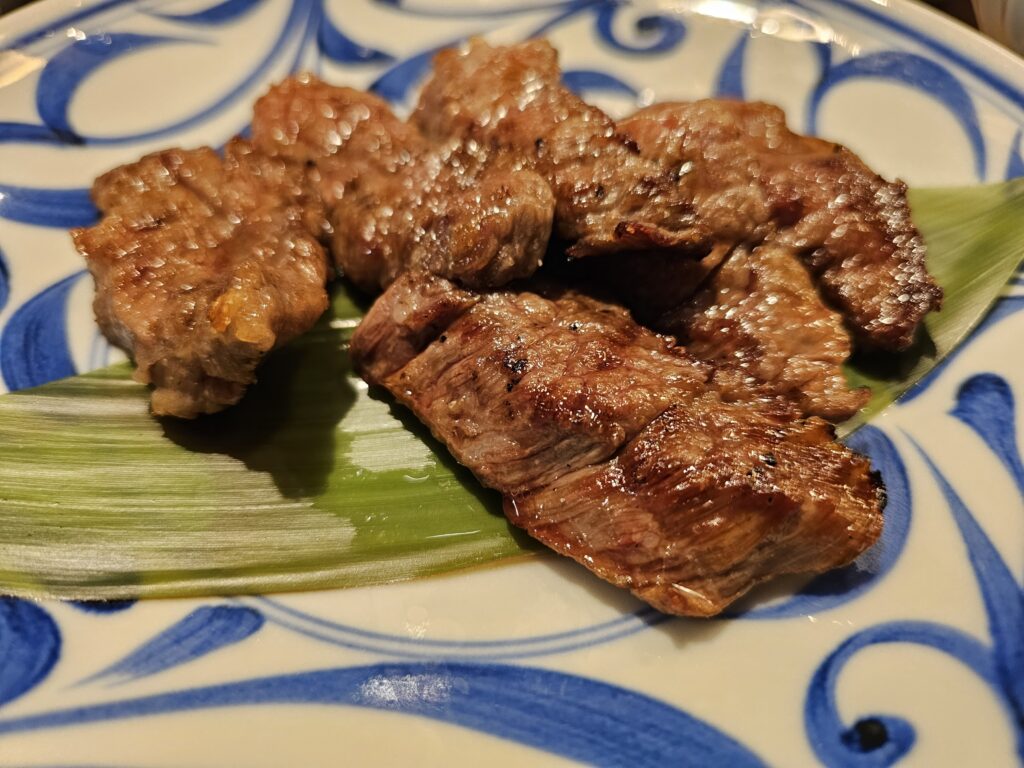
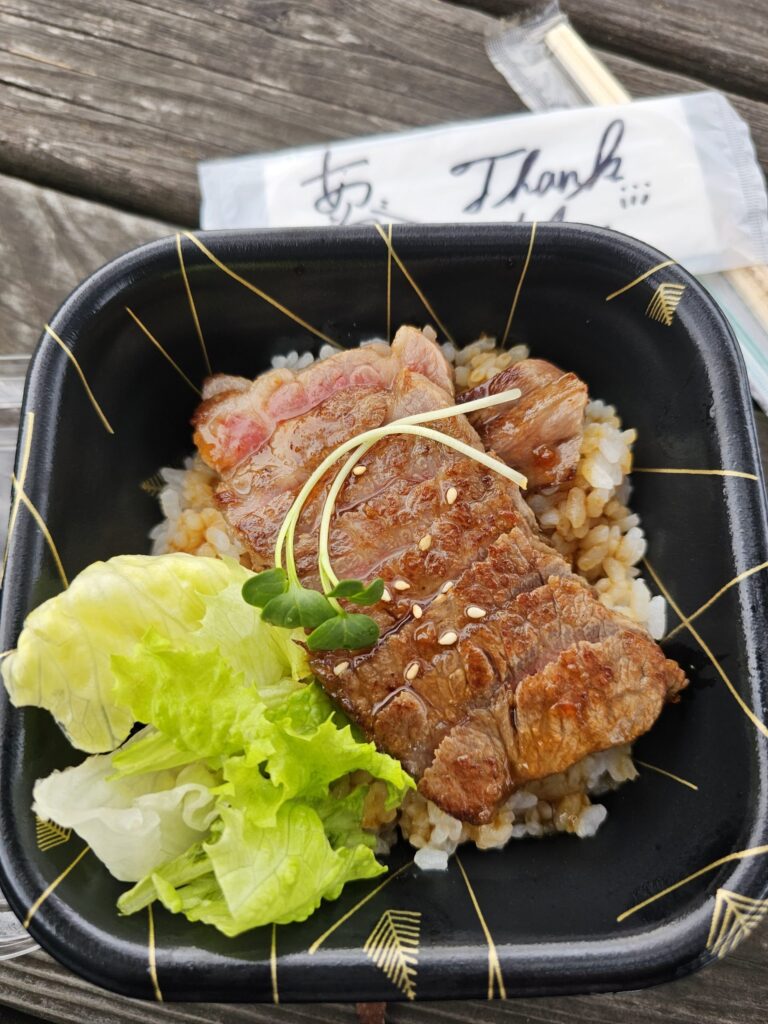
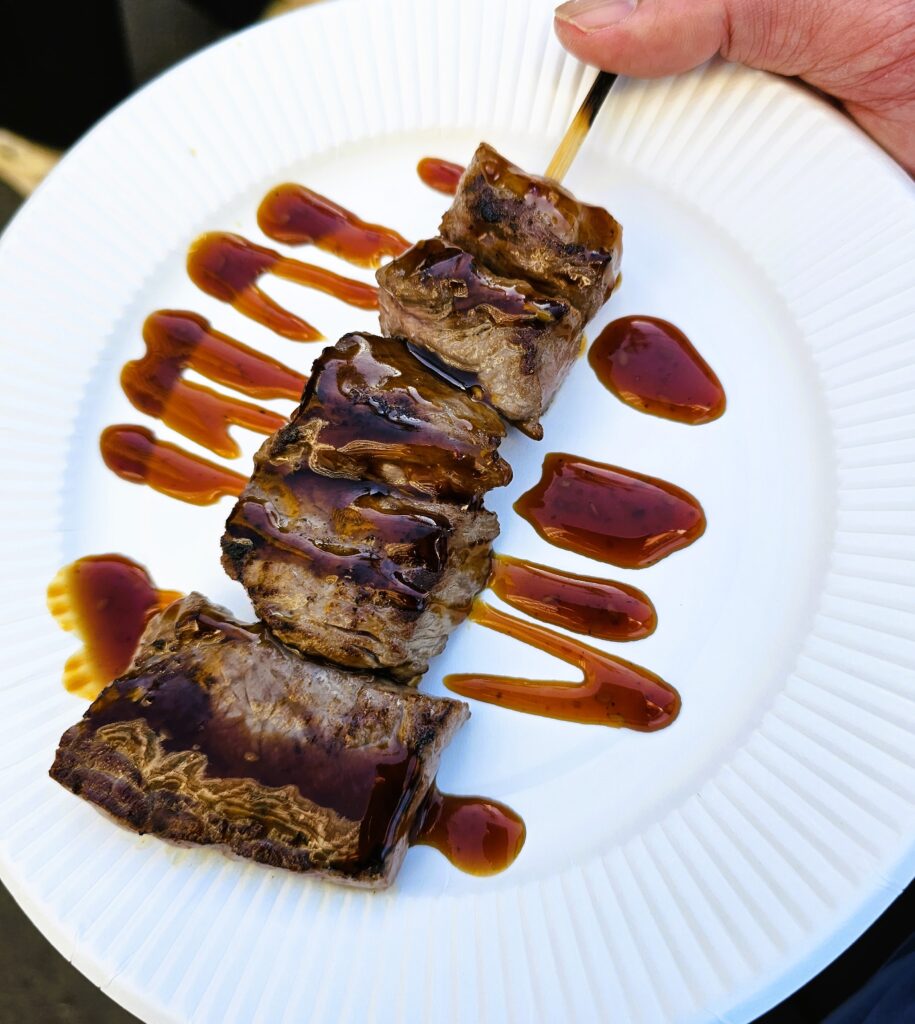
Omurice
Omurice includes ketchup fried rice, yes ketchup fried rice, wrapped in a very thin omlette with ketchup drizzled over the egg. The egg is very crepe like, it’s a very thin layer. The ketchup fried rice is generally mixed with chicken and vegetables. It’s an all-around unique looking and tasty dish that must be tried while in Japan! It’s a very common and popular breakfast item which is why I’m including it on the list of 10 amazing foods in Japan.
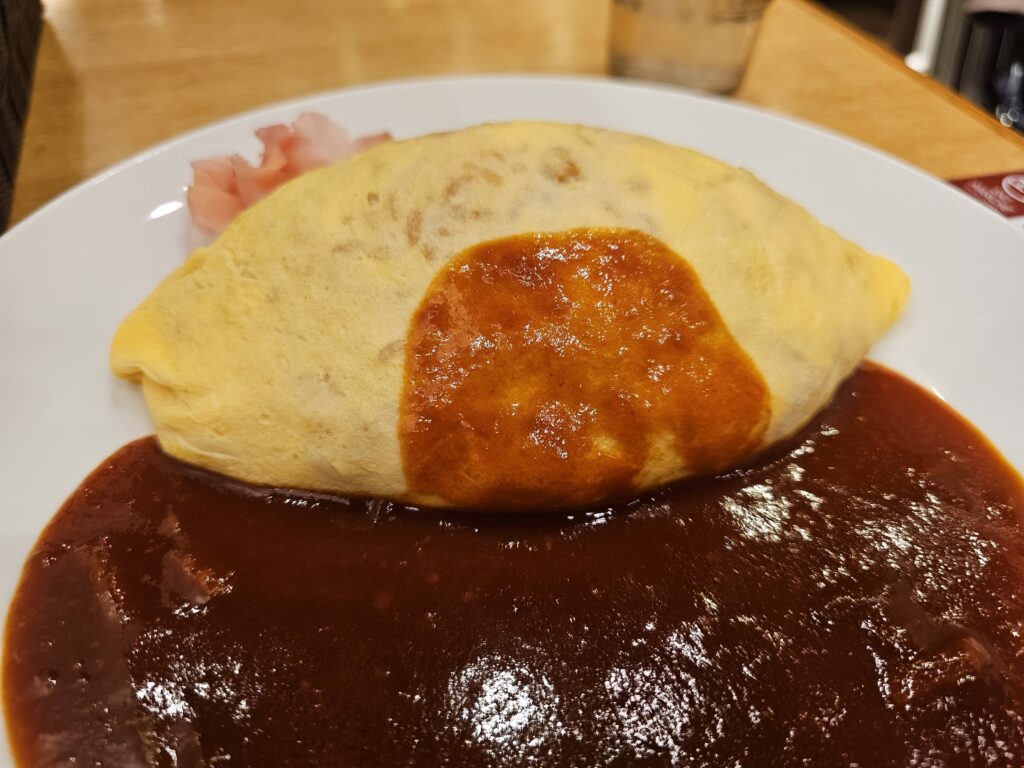
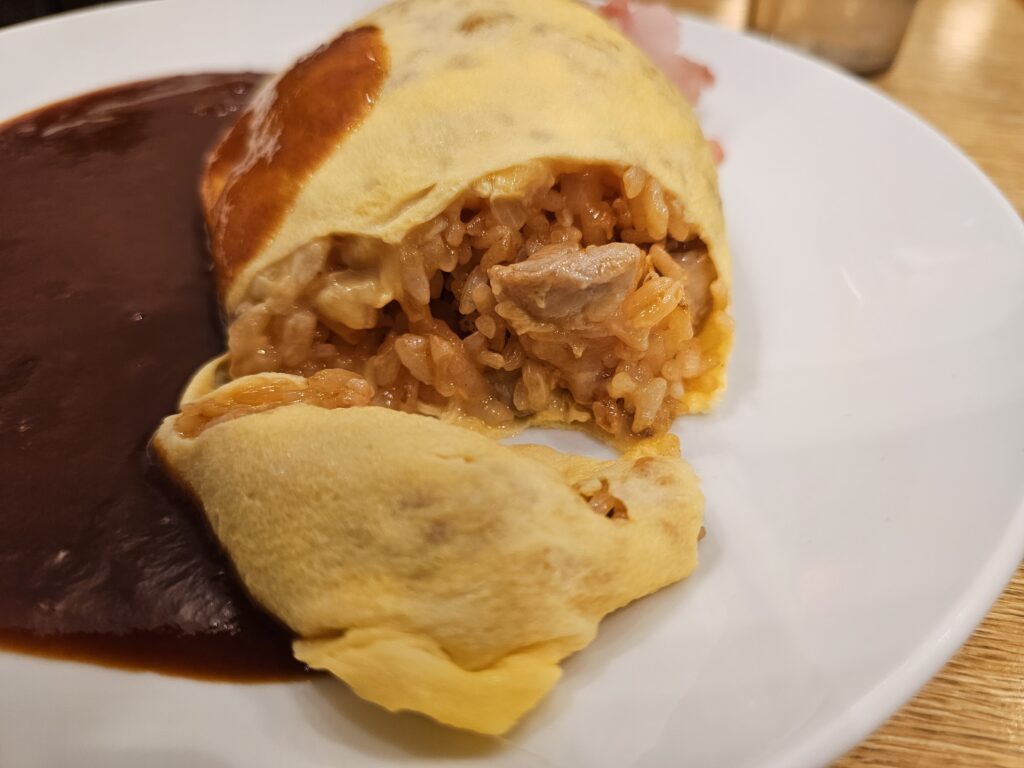
Tempura
Another food on the 10 amazing foods in Japan is tempura. Tempura is very famous in Japan and you’ll be able to find it thorughout the country. Tempura, for those who haven’t had it before, consists of seafood (shrimp is a staple) and vegetables coated in a thin batter and deep fried. The quality can differ, but the outer batter should be light and crispy and not saturated in oil. It definitely makes a big difference while enjoying this classic meal.
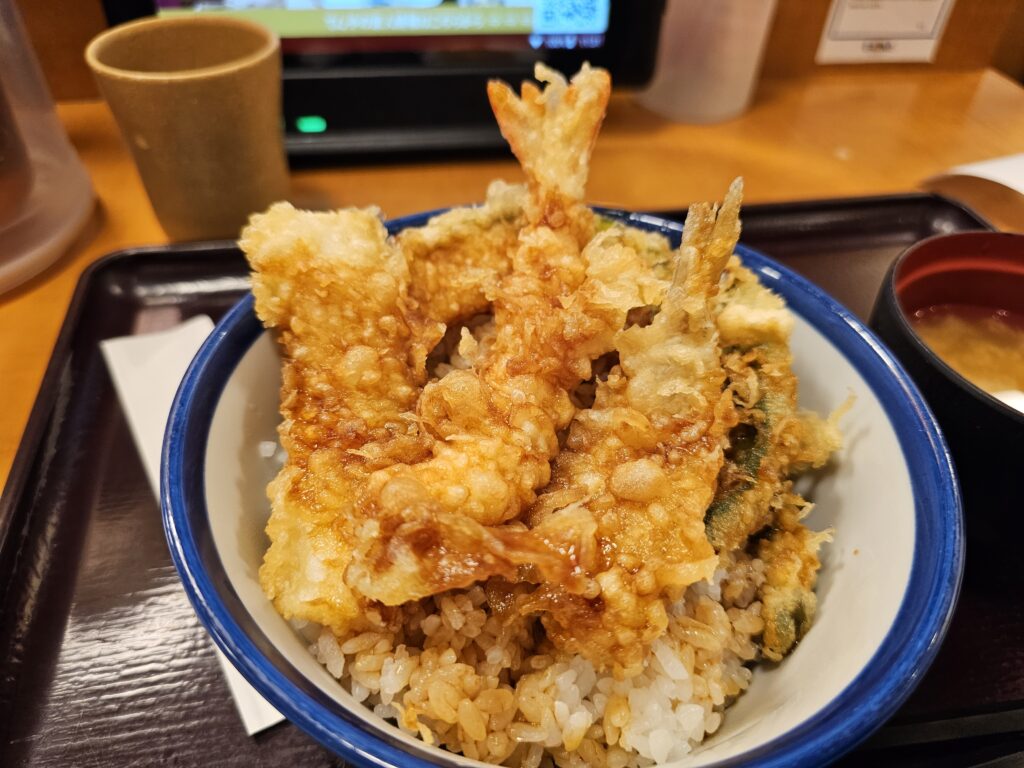
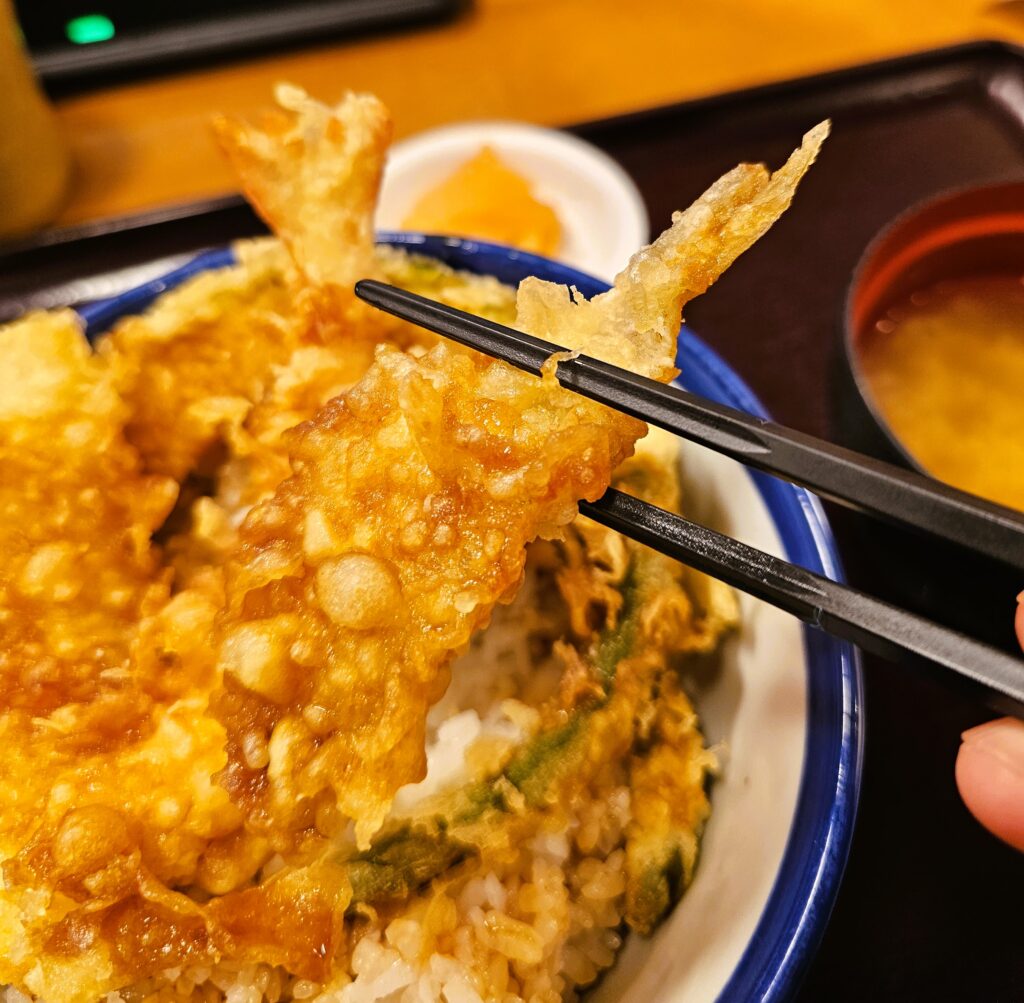
Tonkatsu
A classic food in Japan, tonkatsu, is certainly on the list for 10 amazing foods in Japan. Tonkatsu is a breaded pork cutlet that’s deep fried in oil. The breaded exterior is nice and crunchy, while the pork, which is generally a pork fillet or tenderloin, is juicy and tender. Served with a side of cabbage and a thick Worcestershire-style sauce, this is a must have while in Japan. Certainly do your research and find a quality spot to enjoy this Japanese comfort food.

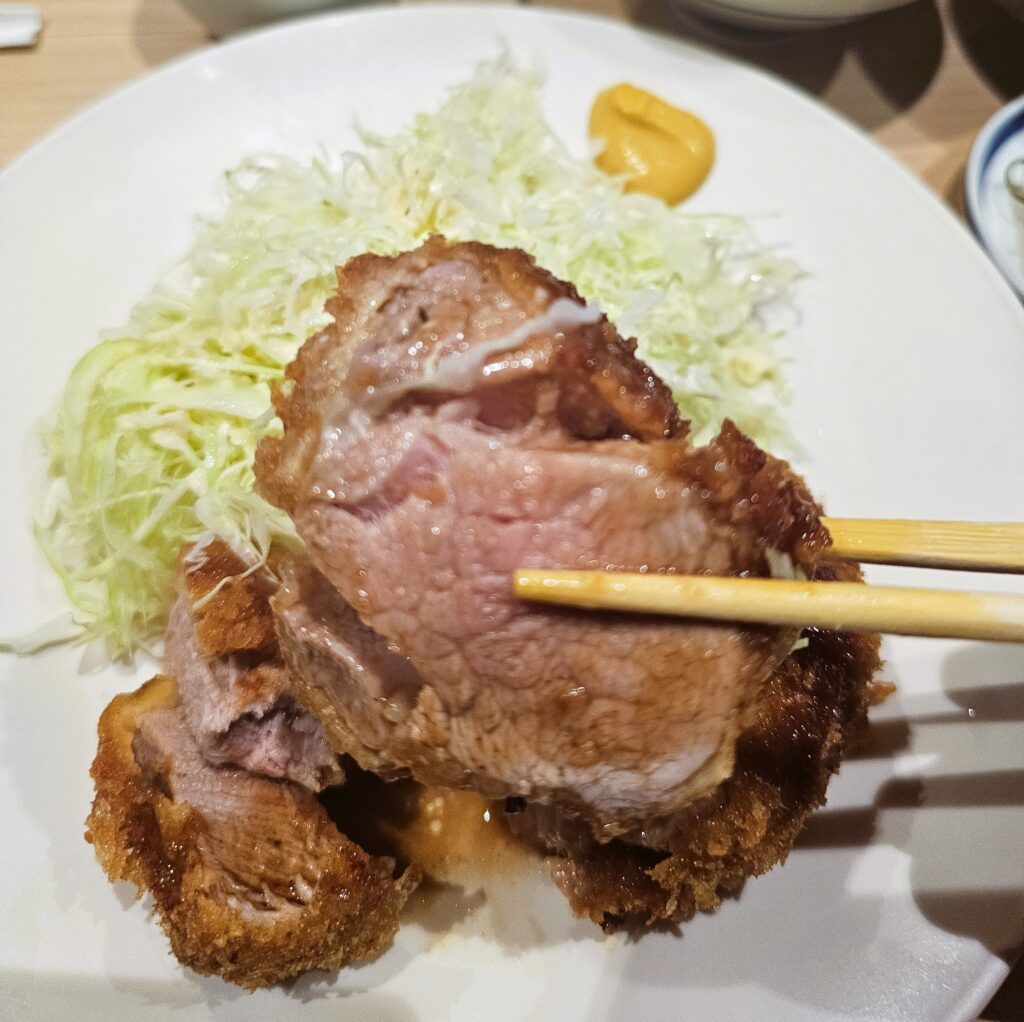
Okonomiyaki
Okonomiyaki is a popular, savory pancake dish that is found throughout Japan. Consisting of a flour batter and cooked on a teppan, common ingredients include cabbage, meat, and seafood, with toppings including a thicker worcestershire type sauce, dried seaweed flakes (aonori), bonito flakes, Japanese mayonnaise, and ginger. There’s two distinct types, one hailing from Osaka and one from Hiroshima. The Hiroshima version is layered instead of mixed and uses 3-4x more cabbage.
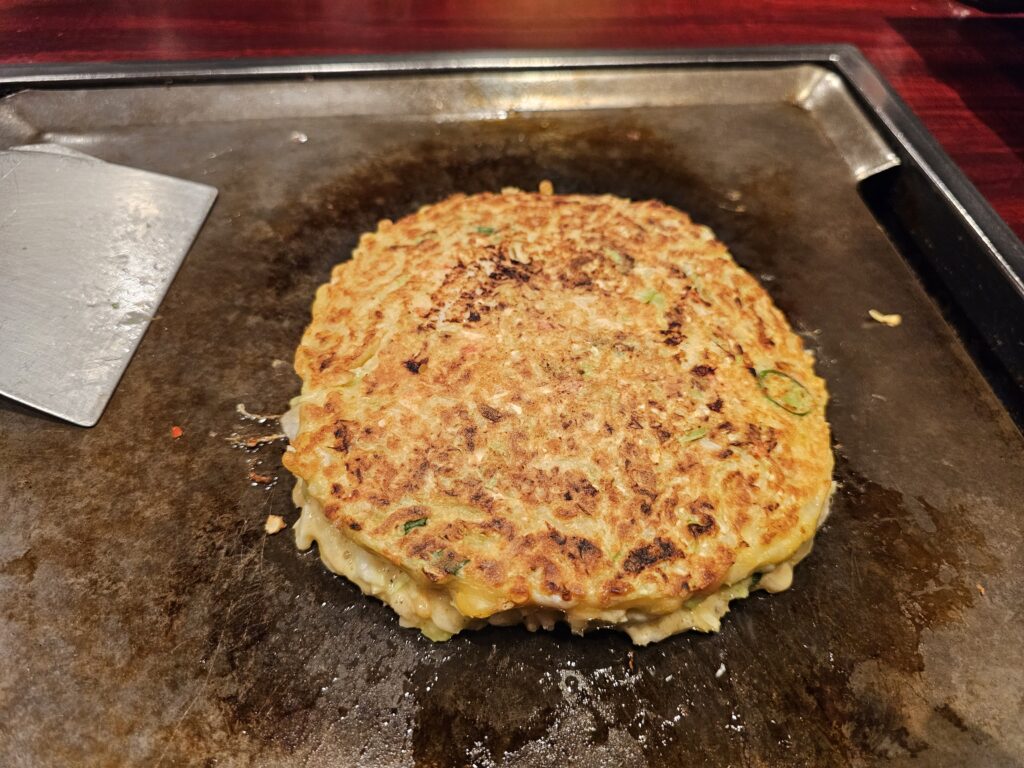
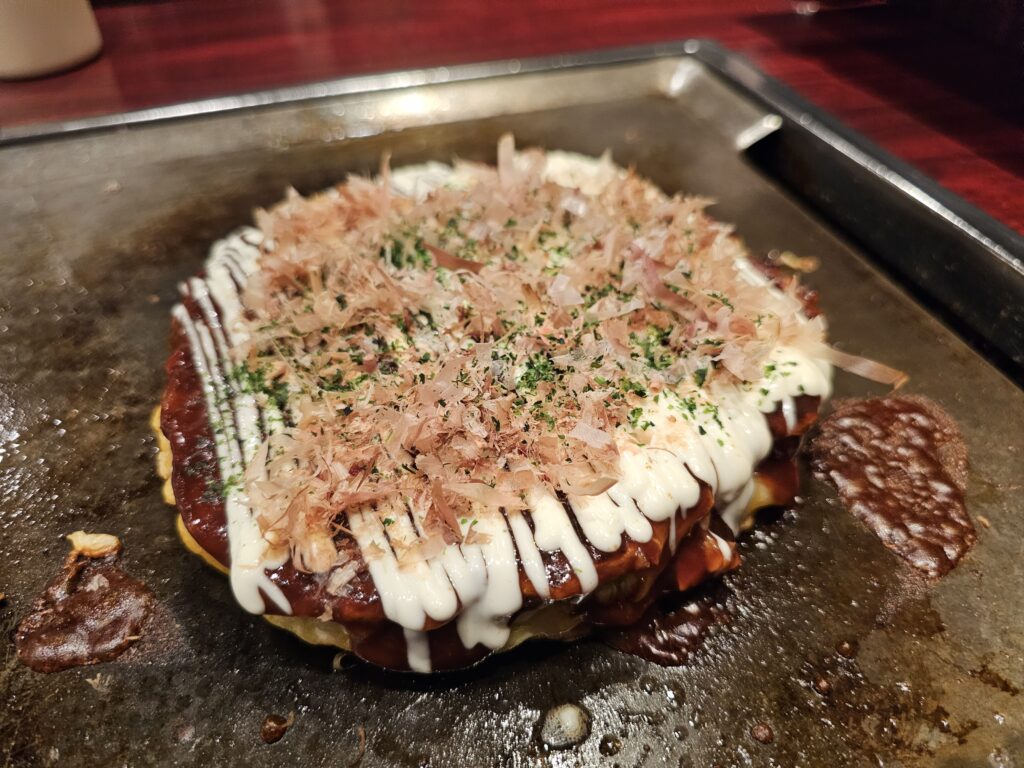
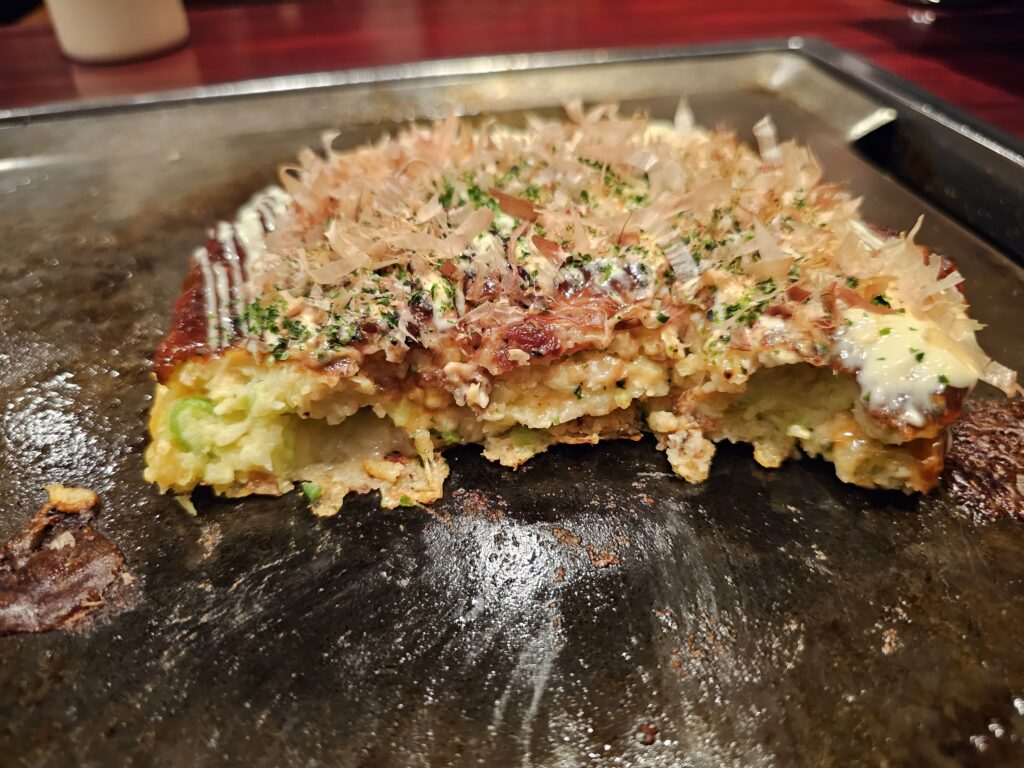
-
Things Get SPICY At This Miso Ramen Joint in Sapporo
Miso ramen can be found throughout Japan but the birthplace of this style of ramen is Sapporo. The specific nature of how miso ramen came to be has long been rumored that it occurred at a restaurant called Aji no Sanpei in Sapporo in the 1950s when a drunken customer asked that noodles be placed in their miso soup. How accurate the story is may be debatable, but a “strange” concoction born from the hunger pains of a drunken patron are surely believable.
Fast forward decades later and, as mentioned above, miso ramen has evolved and can be found throughout the country. Each area and restuarant will have their own unique spin on this unique tasting ramen BUT there’s only one place that can claim to be the creator of miso ramen and that’s Sapporo. It was a must try for me while I visited.
Karaiichi Sapporo Ramen Susukino
I stumbled upon Karaiichi Sapporo Ramen Susukino after coming back from my day trip to Otaru. It was a cold day ( I went in December) so a nice steaming hot bowl of ramen sounded like the perfect meal to have to cap the day off. I thought it was the perfect time to get some authentic miso ramen in Sapporo!

It’s a typical ramen restaurant that’s very tiny and seating consisting of countertop space. They did have an English menu here which was certainly helpful. Something that was very interesting here was the spice level.
If you take a look at the below (sorry the print is tiny) you can see that spice levels range from 1-30 with appropriate increases in price, then there’s TWO additional levels called “demon” and “Hell”. I mean….what does this ENTAIL? What does this even look like or taste like?? I certainly wasn’t brave enough to give either one of those a taste. I like spice but I draw the line when spice levels hit “demon” and “Hell” levels, haha.
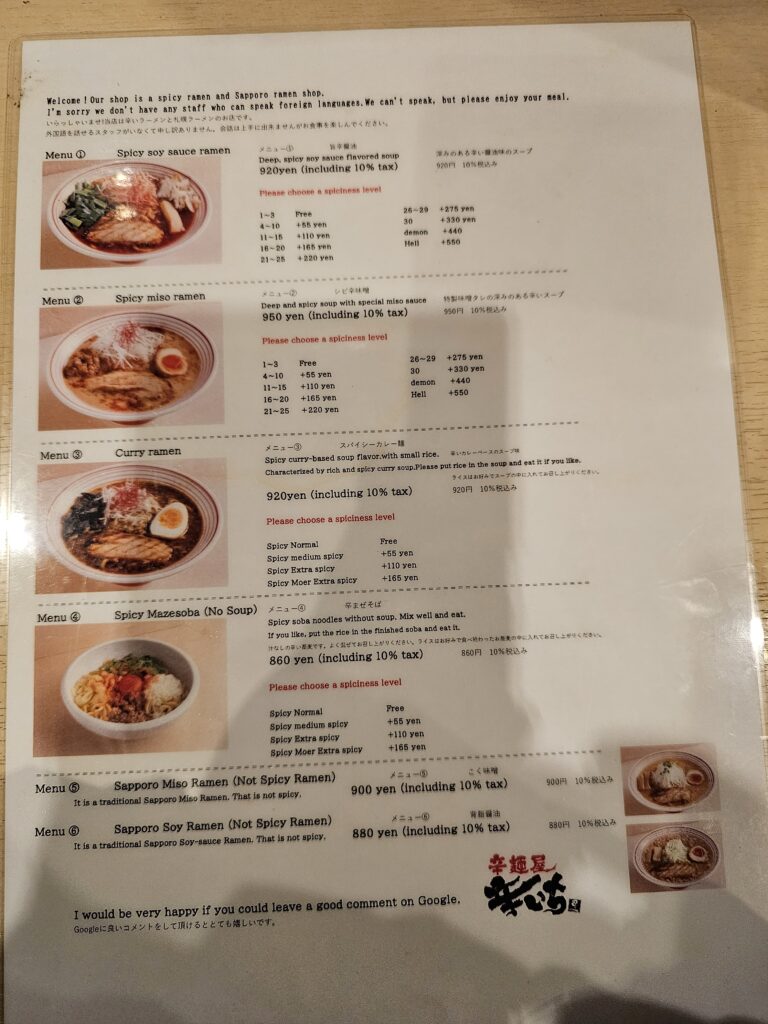
The Food
I ended up getting the Spicy Miso Ramen, level 10 (1005 yen, $6.47).
Miso broth is thicker, made primarily with miso paste and can also include many other ingredient combinations of dashi, garlic, ginger,onions, scallions, tare, and other ingredients. There’s a lot of variation that can be found here.
This particular broth was definitely rich with a deep flavor. The spice was quite good at level 10. Definitely quite spicy, not overly so, with a great kick to it. It was just right. I can’t imagine what level 20 would be, let alone the last two levels!
The bowl of miso ramen comes with finely shredded bean sprouts, half an egg, a piece of chashu pork, and some ground pork as well. The chashu was fantastic. It was exremely tender and was falling apart as I attempted to pick it up.
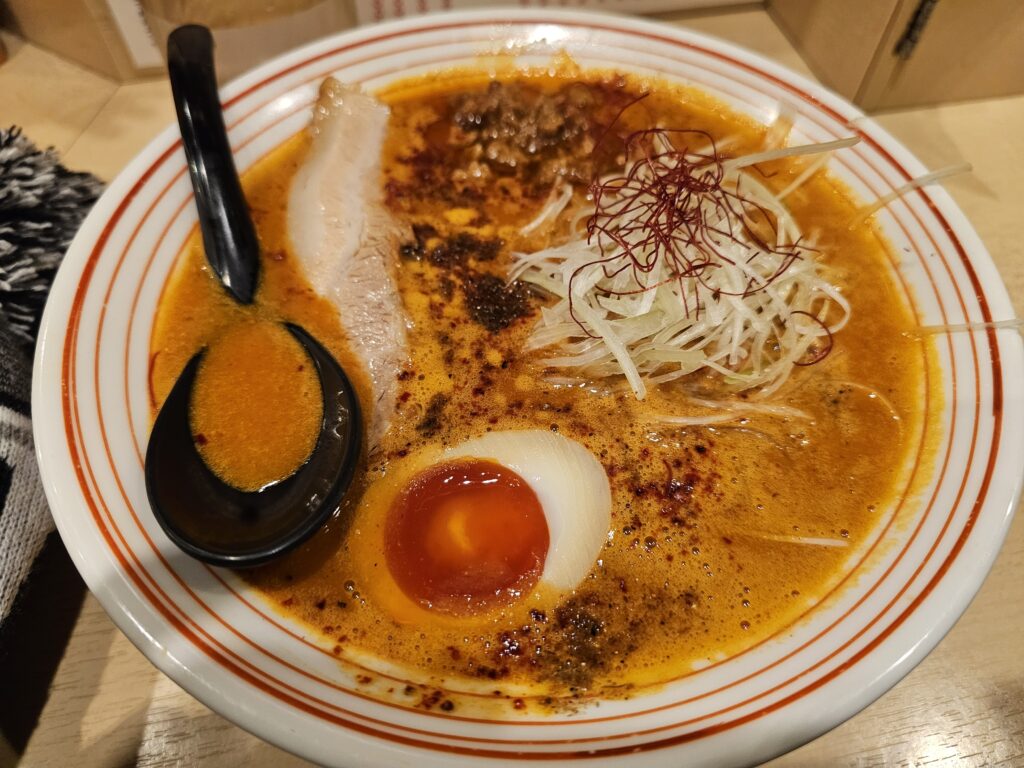
The noodles were thicker and firmer and tasted extremely fresh. The egg was nice and creamy. I enjoyed the addition of the ground pork, it was a little different than what I was used to. The bean sprouts added a different texture to the bowl. Everything in the bowl really played well together, when combined with the spicy broth made quite a comforting bowl of ramen on a cold December night.
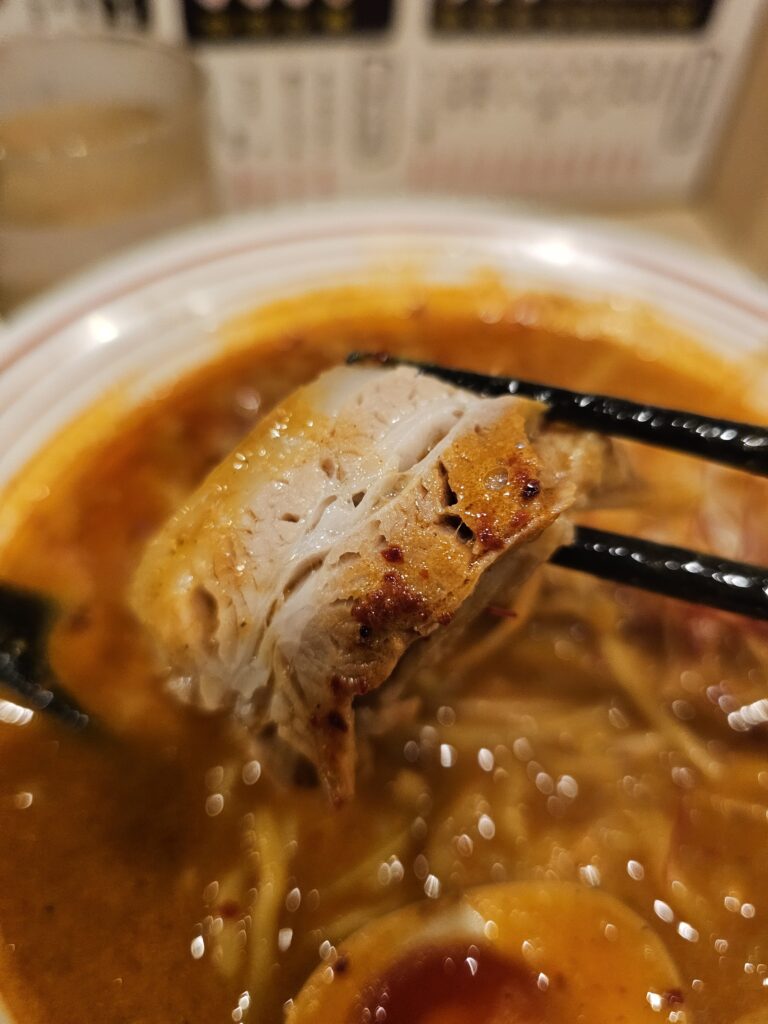
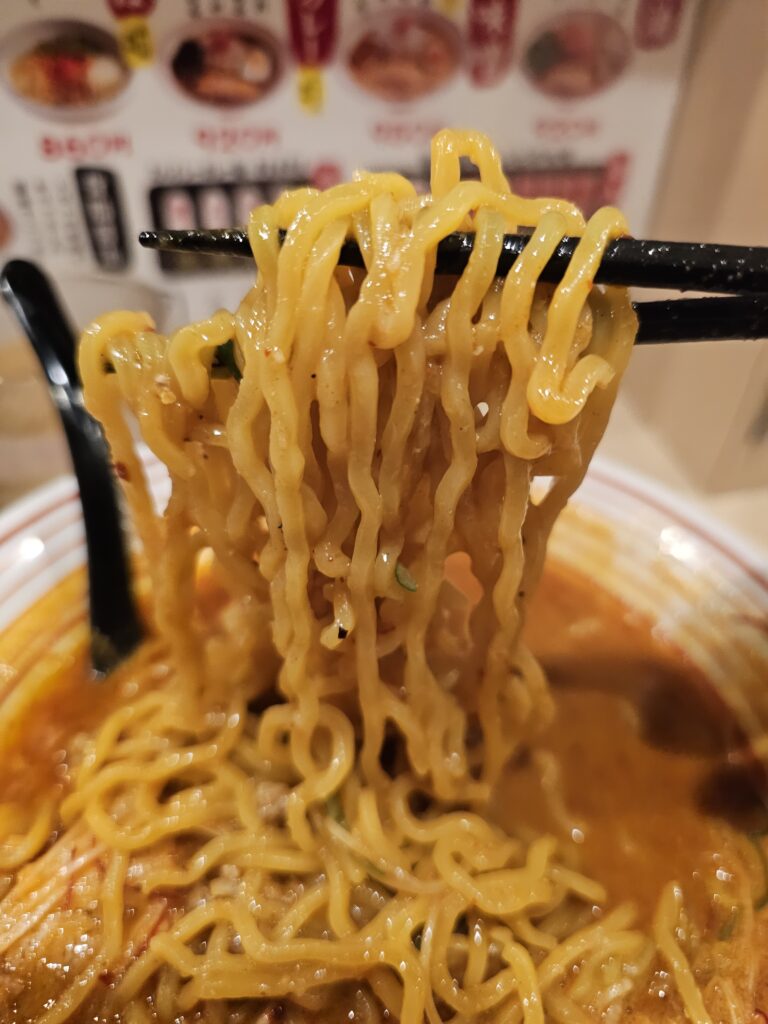
Miso Ramen in Sapporo
As mentioned above, miso ramen was CREATED in Sapporo, so if you’re a foodie it’s a must try. You could certainly go to the original ramen shop that created miso ramen – Aji no Sanpei – it’s still there (!) or you could find any number of ramen restuarants dispersed about the city serving miso ramen.
I was lucky enough to stumble up on Karaiichi Sapporo Ramen Susukino and was not disappointed. If you have a hankering for spicy miso or are looking to give it a try, this is a great option if you’re in the area. The Spicy Miso Ramen was fantastic here. I just love how many different spice levels they offer, as someone that loves spicy food it was great to see!
Karaiichi Sapporo Ramen Susukino
Address: Japan, 〒064-0805 Hokkaido, Sapporo, Chuo Ward, Minami 5 Jonishi, 4 Chome−7−3 ソシアルビル 1F
-
The Ramen Alley in Sapporo Hits The Spot For Ramen Lovers
What is the Ramen Alley in Sapporo?
The Ramen Alley in Sapporo is located in the lively Susukino district. This narrow alley has been around since 1948. Shockingly, there’s nothing but ramen shops found in this delightful alleyway, who thought with a name like that? Lol. The original Ramen Alley opened up with eight total ramen shops. There are now 17 that line the famous alley. Miso Ramen was also created here, adding to the lore.
These shops are all quite tiny, most likely seating no more than 7-15 people from what I could gather walking by. Since this is a tourist spot expect crowds, especially at peak lunch / dinner times for the most popular spots. All the shops have varying hours as well so if you know the specific place you want to go to make sure to check their hours.
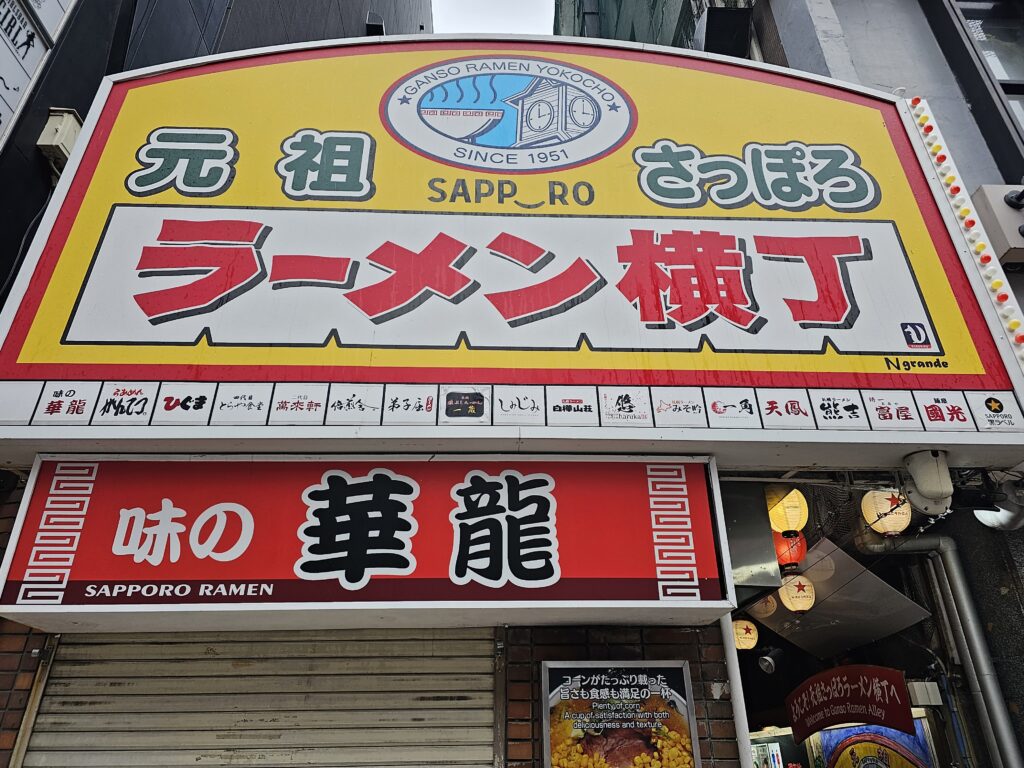

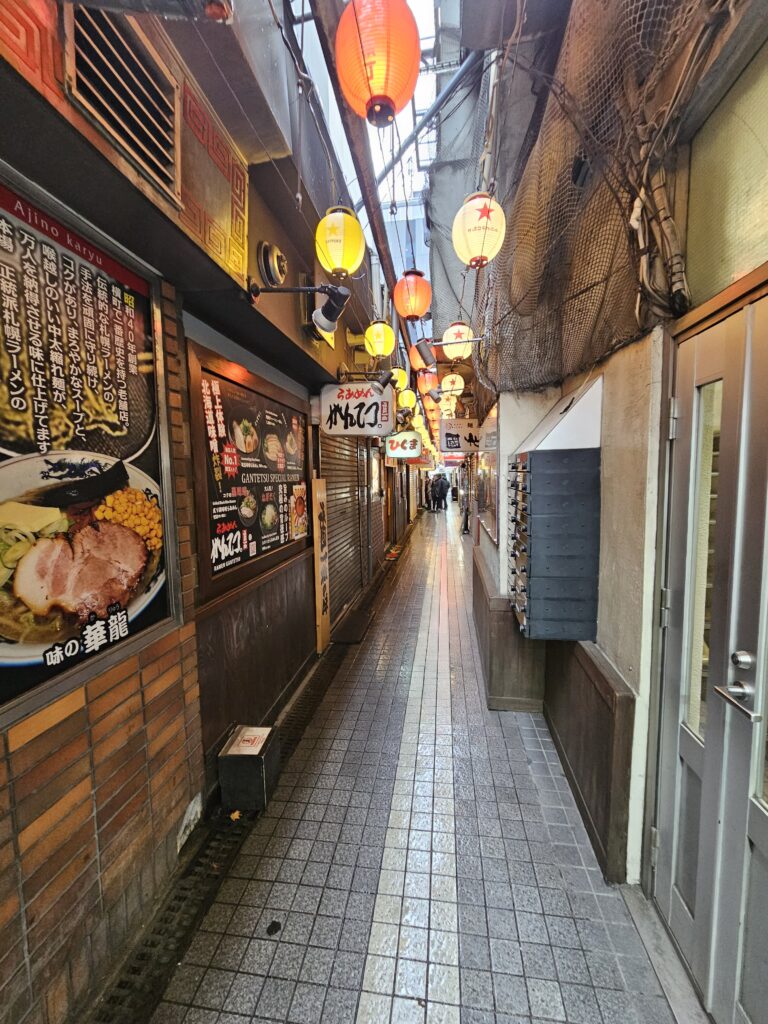
I got here at an odd time when some shops weren’t open yet but was able to find a seat at Ichi Kura.
Ichi Kura
Ichi Kura was one of the places that were open and had available seats. I hadn’t done any research on the individual shops themselves, so I wasn’t sure what the most popular or well-know shops were. The ramen pictured in front of the shop looked great though so I decided to give it a try.

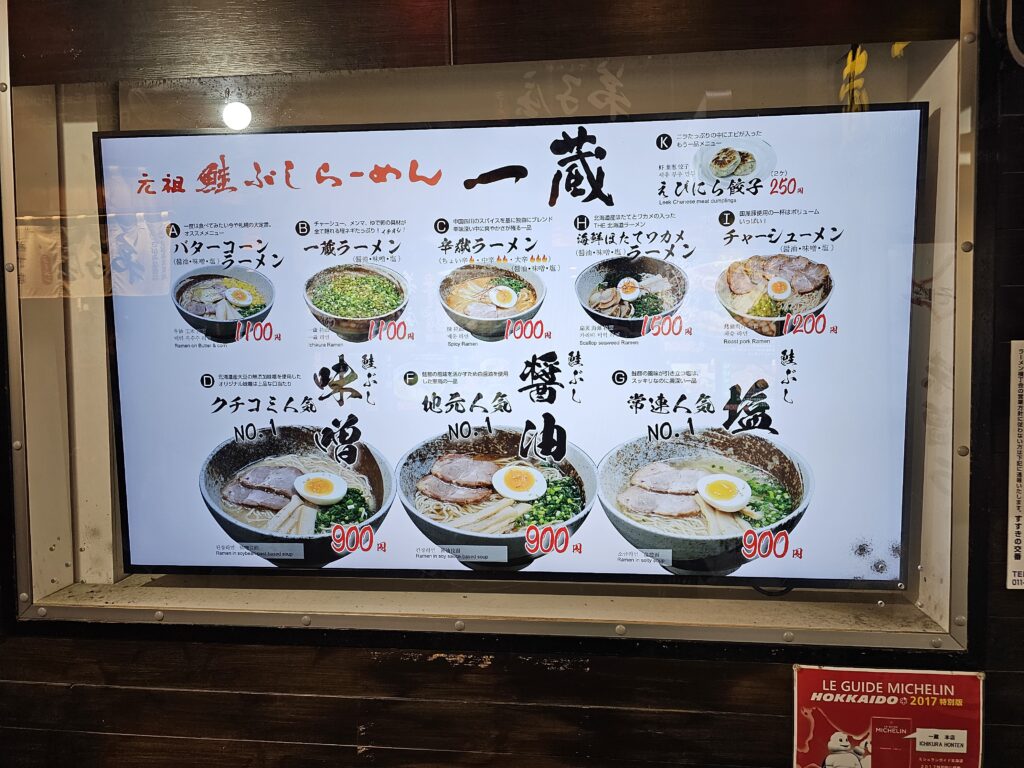
Toppings that are more uniquely associated with Hokkaido include corn and butter. Hokkaido is known for their dairy and produce so this would be the place to get those toppings in your ramen!
The Ramen
Like I mentioned above, the main driving force behing getting this particular bowl was for the butter and corn. I’m not entirely sure what the broth was, possibly shoyu, but it was very light. The butter once, melted really adds a richness and creaminess to it which was a welcome addition to the overall flavor. In addition to the butter and corn the ramen was topped with bamboo shoots, green onion, half an egg, and chashu.
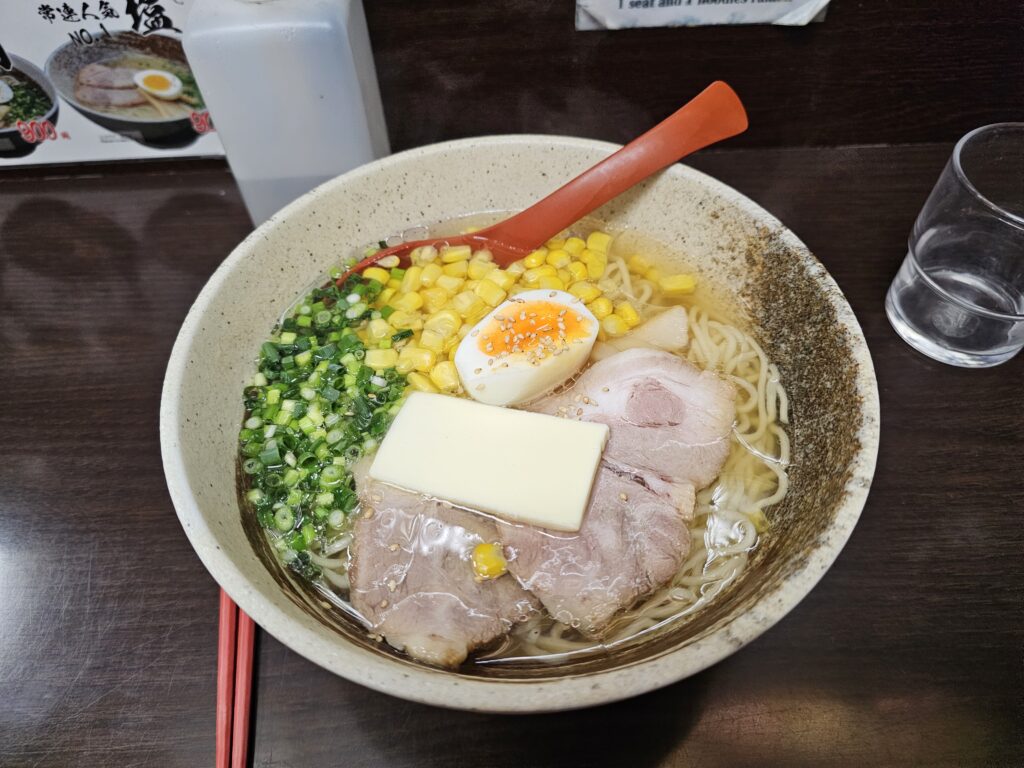
The semi-firm noodles were light, springy, and fresh. The egg was nice and runny, and the corn was definitely sweet. All solid additions to go along with the bamboo and green onion. The chashu was good, but nothing to really write home about. Definitely tender but was lacking in flavor to a certain extent. Overall the bowl of ramen was really good. I did enjoy the butter and the corn so I was glad I got the chance to give it a try.
Is the Ramen Alley in Sapporo worth a visit?
If you’re a ramen lover like myself, without a doubt you’ll want to visit the Ramen Alley in Sapporo. Can you imagine an alley lined with nothing but ramen shops? It’s a ramen lover’s dream! It’s just a cool experience as well since the alley is quite narrow and the shops are all quite small. It’s fun walking by and checking out the different types of ramen that each shop offers. Next time I go I’ll have to do a better job of researching the restaurants to know which ones I should target!
-
Bustling Ameyoko Shopping Street Has A Little Bit Of Everything
What is the Ameyoko Shopping Street?
Ameyoko Shopping Street in the Ueno district includes more than 400 stores selling all manner of goods. You can find seafood, clothing, bags, cosmetics, dried food, sweets. You name it, you can probably find it on this bustling street. There’s A LOT of stores, shops, and restaurants crammed into this area. Prices are fairly cheap as well.
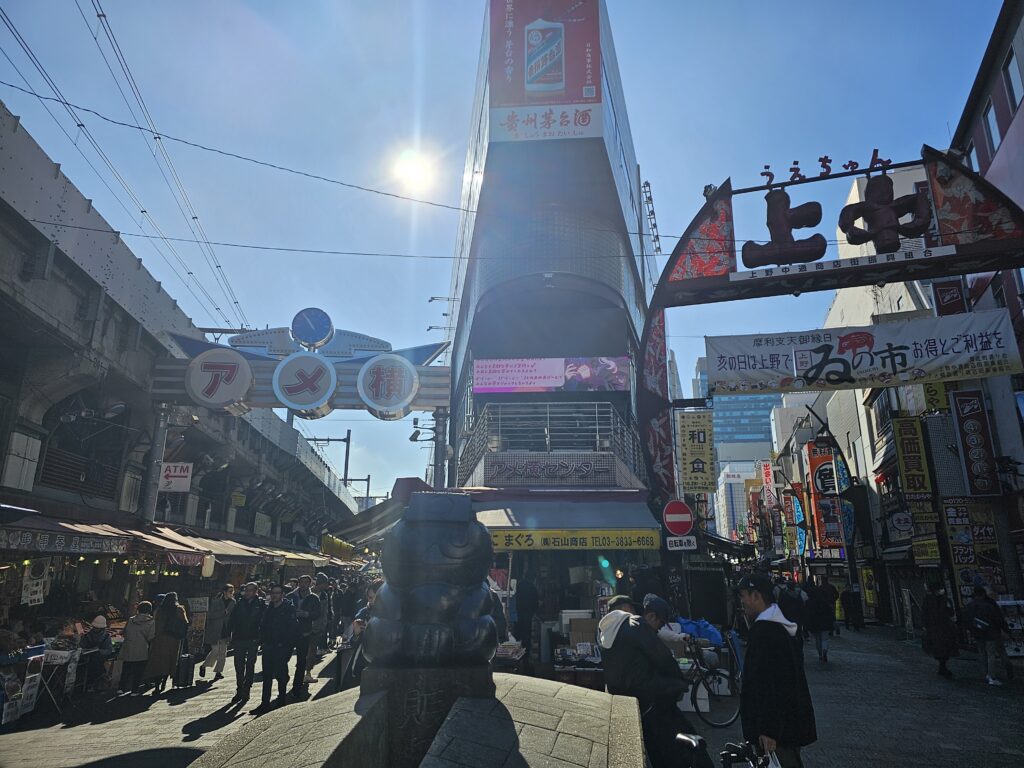
Ameyoko is located right next to Ueno Park and Ueno Station which makes for a great place to stop by before or after a day in the park to grab some food. There’s a TON of places to eat around the area, so you’ll definitely be able to find something to munch on!
Himuro Ueno Ramen
I didn’t even know Ameyoko existed. I went to Ueno with the intent on going to the park and hitting up the museums. I did want to grab some food prior to heading over though and quickly saw throngs of people located near the entrance to Ameyoko and decided to walk around a bit.
One of the restaurants that caught my eye in the area was Himuro Ueno Ramen. It’s not on one of the main streets, it’s located on one of the many side streets. Having a hankering for some ramen on this particular day I decided to give it a try.
It’s one of those ramen restaurants where you order at a machine and receive a ticket to give to the chef. They can be a little intimidating if there’s no English and a line behind you. Fortunately, although there was no English, they did do something else to help us Non-Japanese speaking folk.
There were taped numbers on the machine that correlated with the numbers of the ramen photos in the front of the restaurant. So I just had to match the number. I didn’t know what anything else on the menu was but was happy to be able to get what looked like a delicious bowl of ramen.
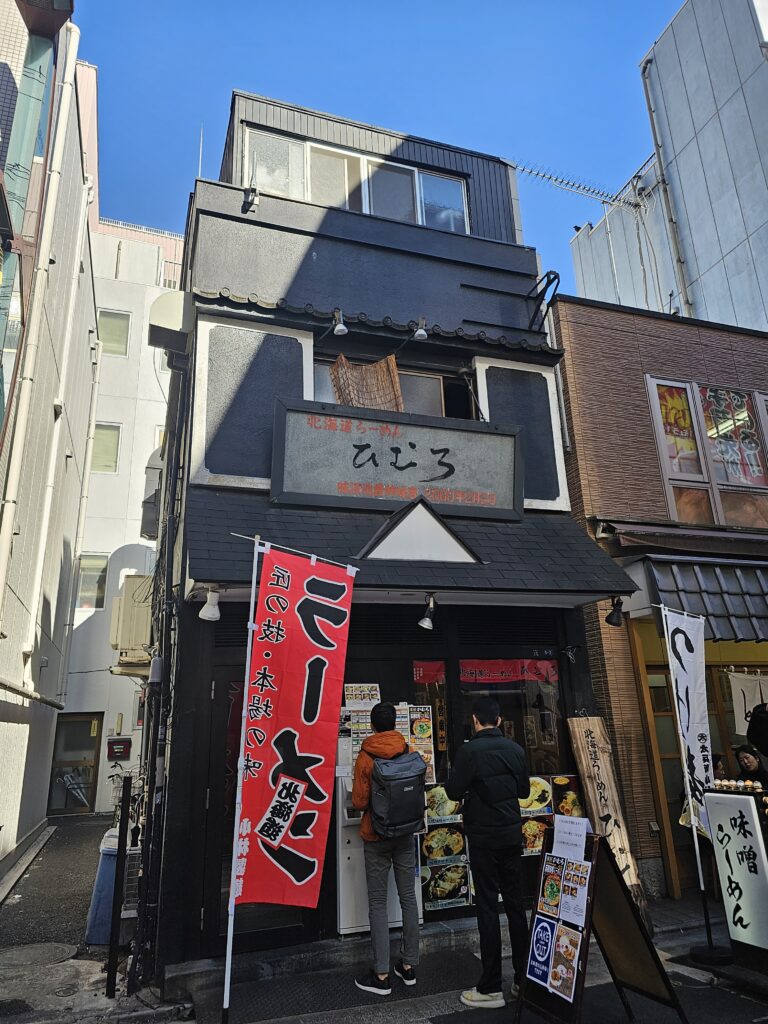
Himuro Uno Ramen storefront 
Himuro Uno Ramen with the ordering machine It’s a small restaurant with limited seating, much like many of the ramen places I visited. I really enjoy these types of places. Very homely with great ambience. You get a good look at how the ramen is made which is great.
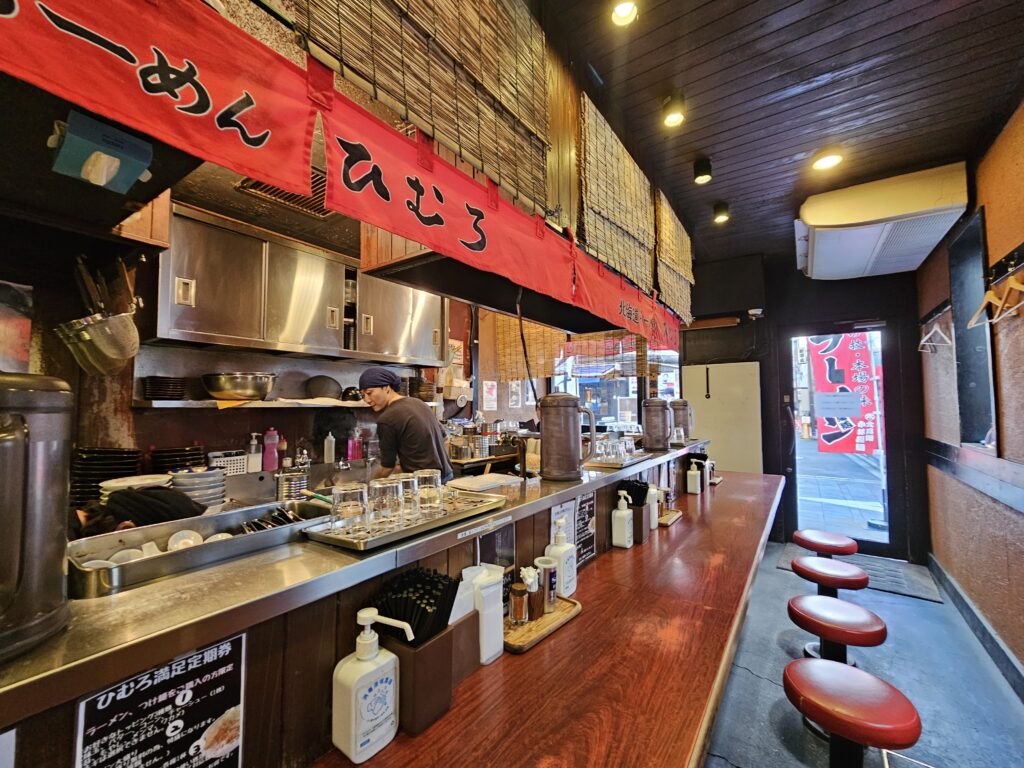
The Kimuchi Ramen Medium Spicy
I ended up getting the Kimuchi Ramen Medium Spicy (980 yen, $6.68). The ramen came out piping hot about ten minutes or so after I handed them the ticket.

It came with 1 piece of pork chashu, bamboo shoots, kimchi, seaweed, bean sprouts, and green onion. Lots of goodies were in it! The broth had a nice rich flavor to it and was fairly spicy. Not sure what the base was but it was quite tasty.
The chashu was very thin and lean. It wasn’t heavily salted or seasoned but tasted great.
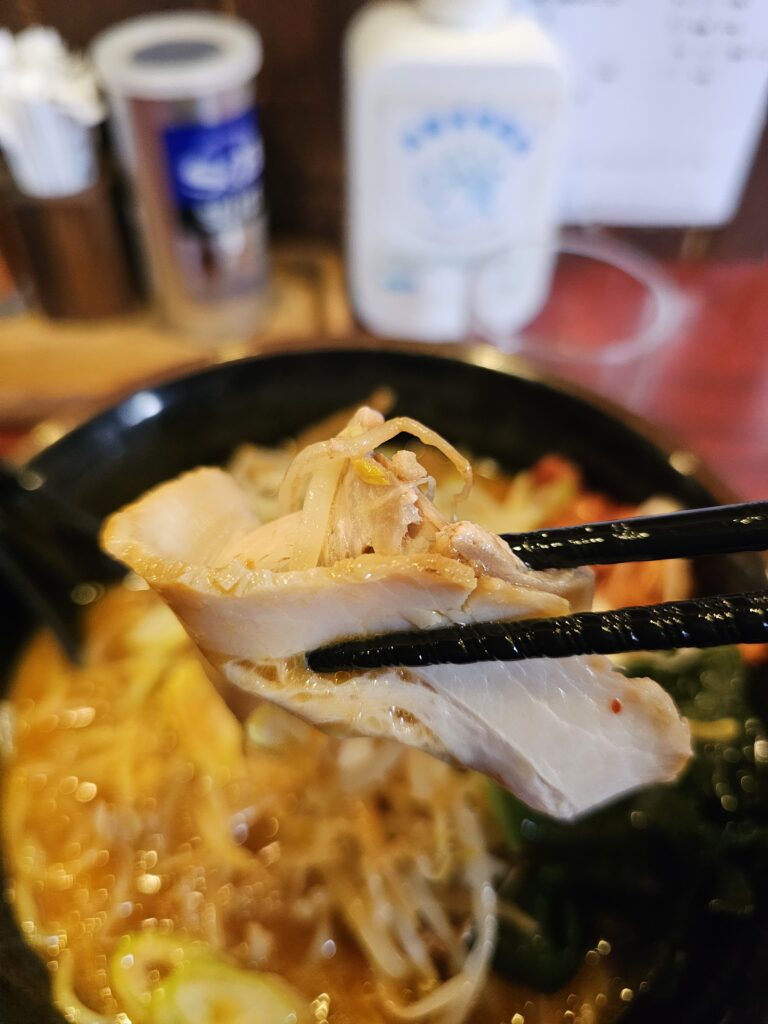
The noodles were thicker and curly. Defintely al dente with a nice bounce to them and they tasted very fresh as well.
There’s a good number of textures within this bowl of ramen. From the chewiness of the noodles to the crunch from the bean sprouts, bamboo shoots, kimchi and seaweed. They all delivered a different type of crunch with each bite, which is always a nice!
Overall this was a hearty bowl of ramen with a lot of goodies in it. I love kimchi so having that included in it was really nice and added to the overall flavor of the ramen broth.
Himuro Ramen
Address: 4 Chome-5-2 Ueno, Taito City, Tokyo 110-0005, Japan
Hours:
Wednesday 11 AM–3:30 AM Thursday 11 AM–3:30 AM Friday(The Emperor’s Birthday) 11 AM–3:30 AMHours might differ Saturday 11 AM–3:30 AM Sunday 11 AM–2 AM Monday 11 AM–3:30 AM Tuesday 11 AM–3:30 AM Oedo-Sho Sushi
After spending the entire day in Ueno Park I decided to cap the day off with some sushi near Ameyoko Street. I stumbled upon Oedo-Sho which is a conveyer belt sushi restaurant. It’s a cheap, affordable place to enjoy some sushi. Conveyer belt sushi is defintely an experience that should be tried while in Japan. There’s conveyer belt sushi places throughout the world, but this sushi quality and selection is likely to be far superior. There’s just a ton of different cuts of fish here.


The menu is quite large with a ton of different types of sushi. The options on the actual conveyer belt seemed to be fairly minimal though. You can order directly from the chefs to get sushi from the menu that isn’t going around the conveyer belt it seemed. I just wasn’t sure how to do that exactly. With minimal English speakers working on this particular night I just stuck with what was going around.
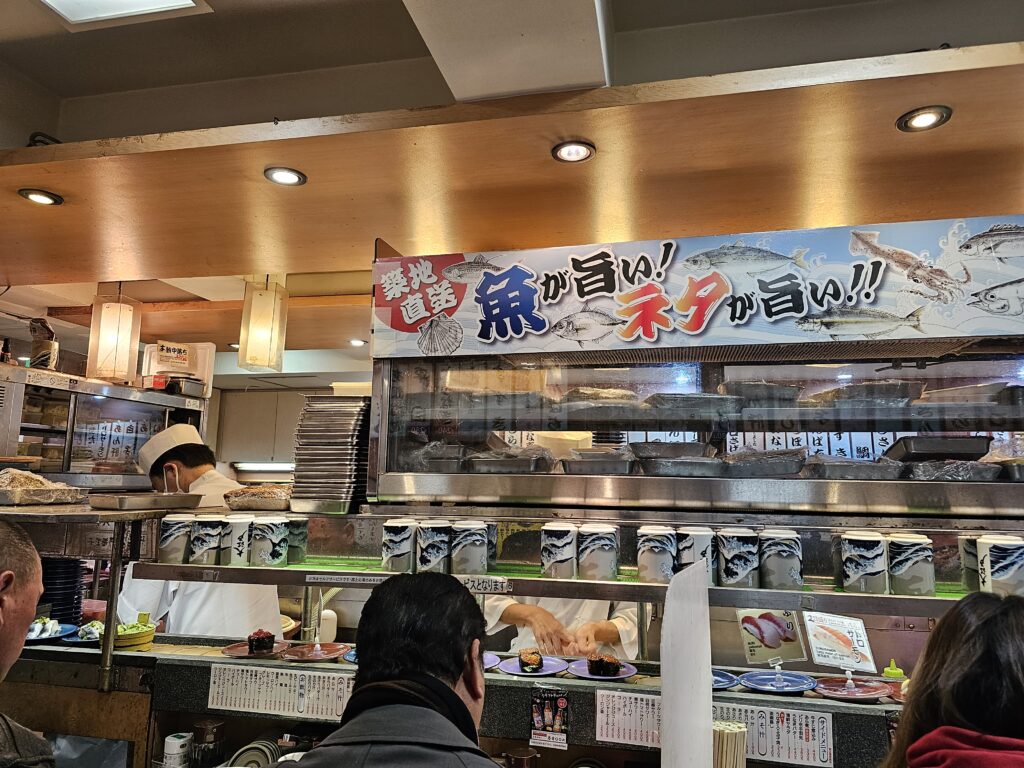
The Sushi
The sushi that I did know and recognize included were pretty much salmon, fatty salmon, shrimp. I ate a few others as well, what kind of fish they were, I have no idea.
Overall, the sushi was pretty decent. For my whole meal it was only (2070 yen, $14.10 USD) It wasn’t top tier but you get what you pay for and it was pretty good to boot.
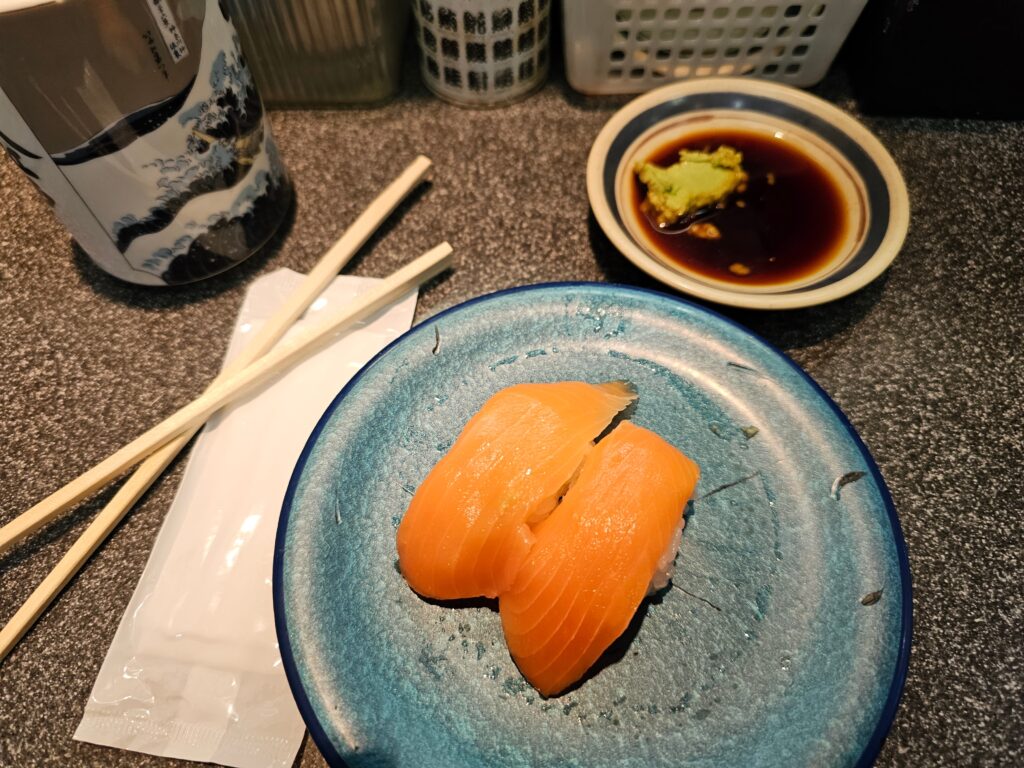
Salmon 
Shrimp 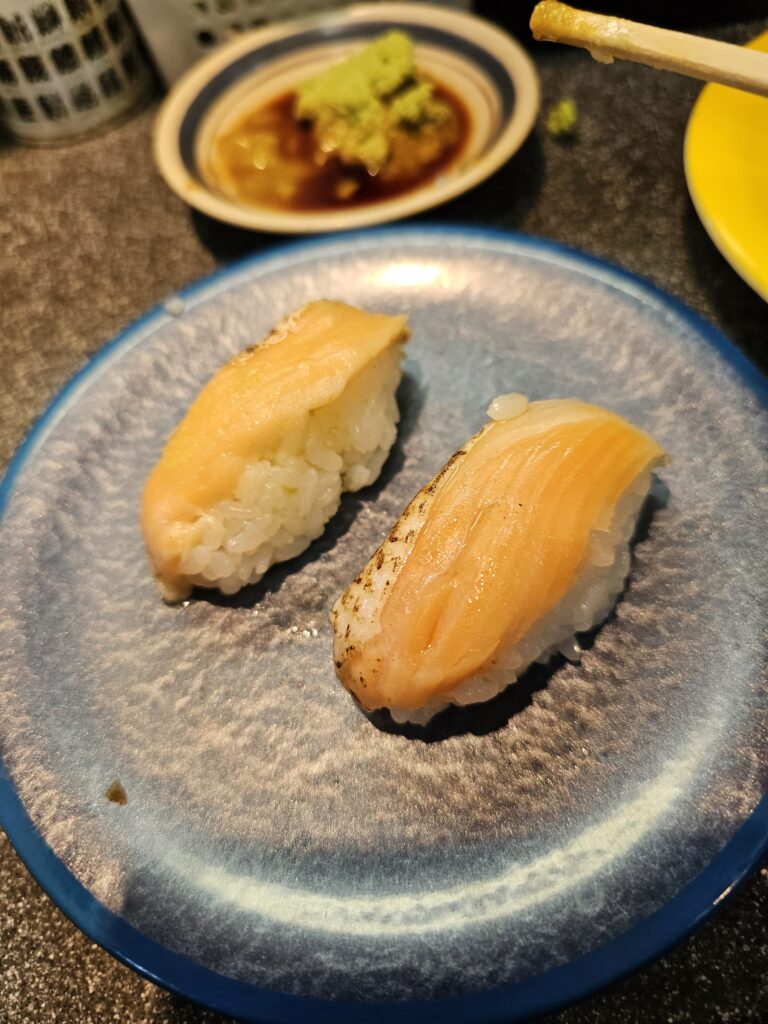
Fatty salmon 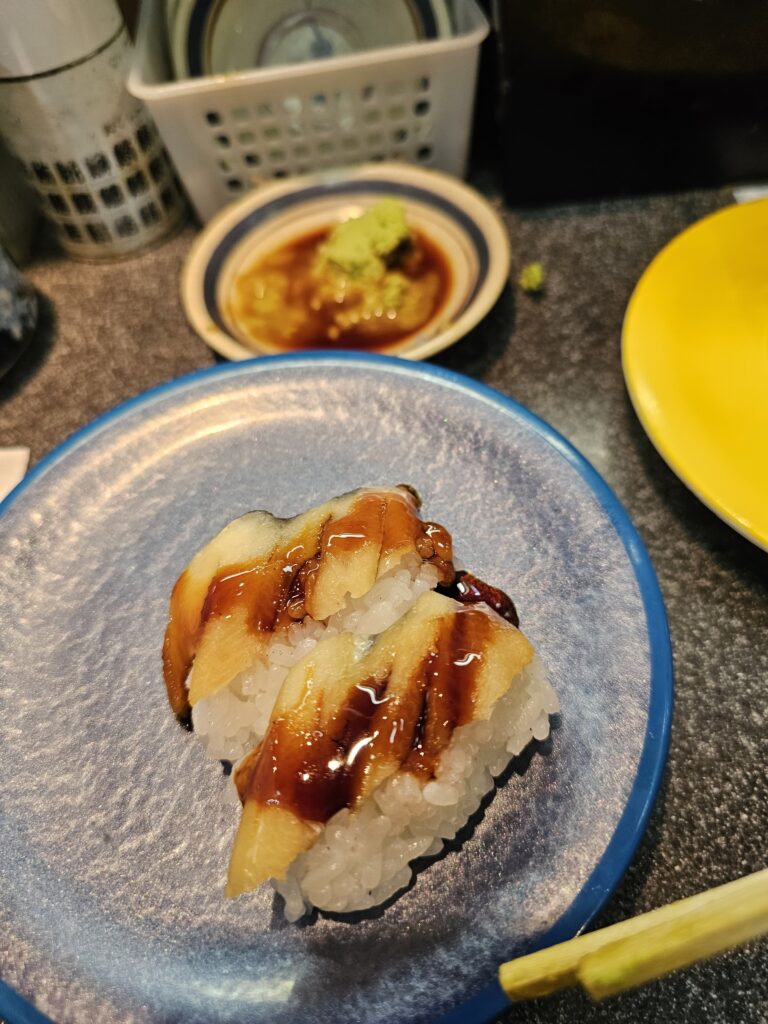
No idea lol Service options: Cash-only · Doesn’t accept reservations
Address: 6 Chome-12-14 Ueno, Taito City, Tokyo 110-0005, Japan
Hours:
Friday(The Emperor’s Birthday) 11:30 AM–10 PMHours might differ Saturday 11:30 AM–10 PM Sunday 11:30 AM–10 PM Monday 11:30 AM–10 PM Tuesday 11:30 AM–10 PM Wednesday 11:30 AM–10 PM Thursday 11:30 AM–10 PM -
Yoroyiya Ramen in Asakusa Tokyo Is Worth A Visit
Asakusa Tokyo is one of the most popular districts in Tokyo. The main attraction is Sensoji, the famous Buddhist temple. The bustling Nakamise Street, lined with shops selling souvenirs, snacks, and other wares will take you directly to the temple. Right next to Nakamise Street there’s the Shin-Nakamise Shopping Street which offers restaurants and more shopping. This is where I found the excellent Yoroyiya Ramen in Asakusa, Tokyo.
It’s easy to navigate the menu here since it caters to tourists and has an English menu. Like most ramen places, it’s smaller place with limited seating at the counter. There’s a few options to choose from.
I had to go with the Deluxe Ramen (1300 yen, $8.81 USD) which included roast pork, twin york egg, and bamboo shoots. It just looked too good! I was also starving since I had just landed and a nice bowl of ramen sounded like the perfect meal.
The ramen had a shoyu (soy sauce) broth base. The broth was light but had a deep flavor to it due to the inclusion of dashi. This added a bit of fishy aftertaste with every slurp of the broth. It wasn’t overwhelming at all, but really added to the shoyu base flavor.
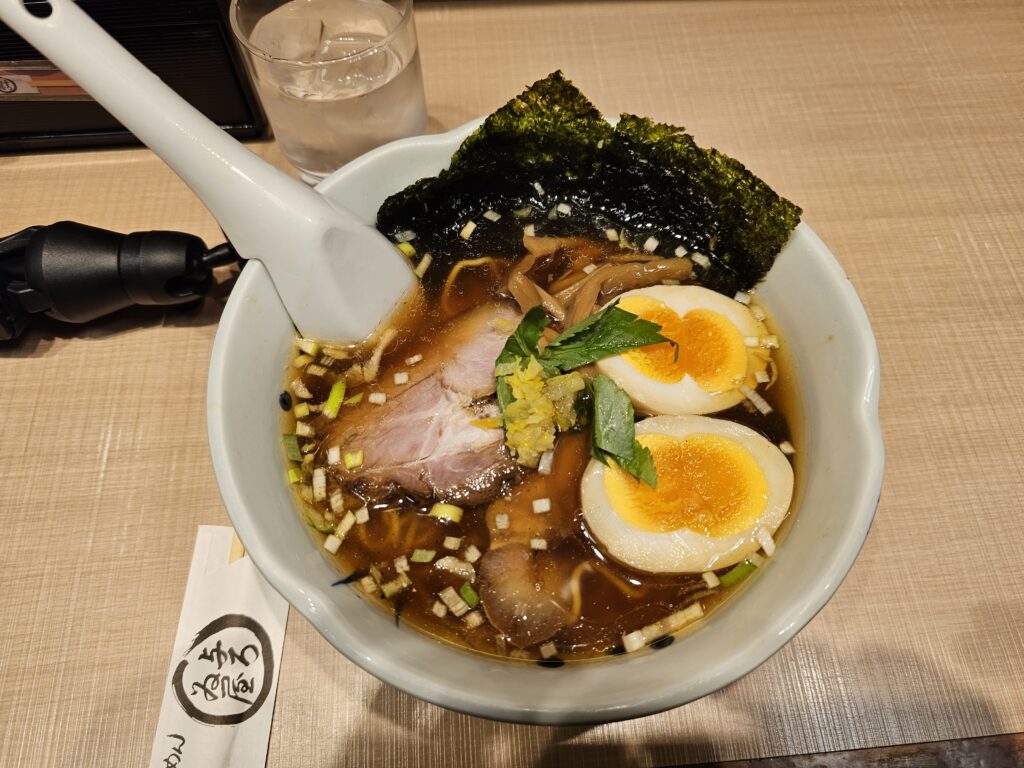
The noodles were very fresh and al dente. They were thinner and curlier ramen noodles. These were quite good.
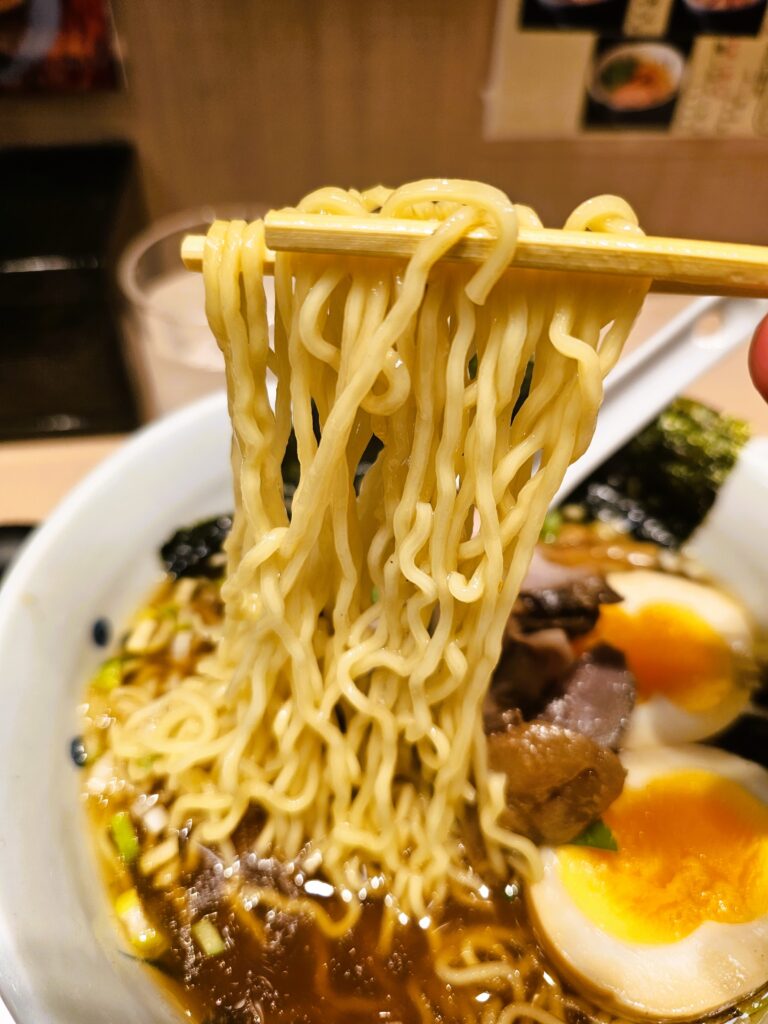
The pork was seasoned perfectly and was some of the most tender pork chashu I’ve ever had. It literally was falling apart as I picked it up. It was THAT tender. Even the egg was good. It wasn’t quite hard boiled all the way through. There was still a little yolky parts to it which added even more depth and flavor to the ramen.
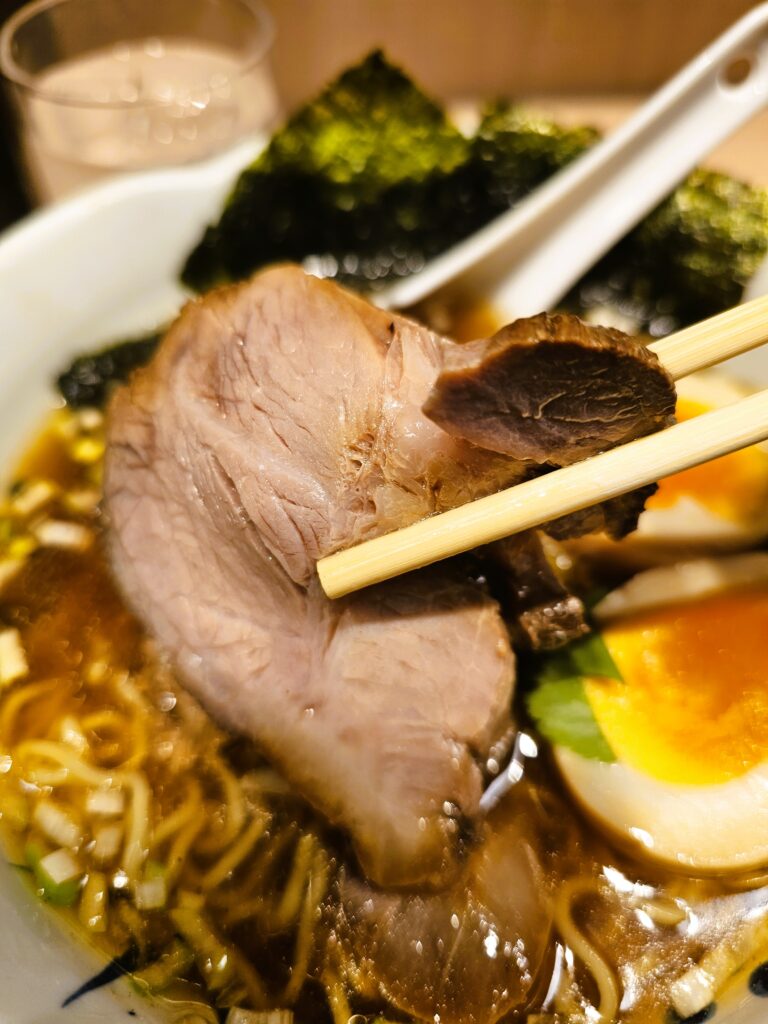
This Yoroyiya was also famous for their chicken gyoza’s, so I had to try those as well. You get three pieces for 400 yen ($2.71 USD), a good deal! Pan fried, the outside of the gyozas had a nice browned exterior. They came with a shoyu dipping sauce. The skins on these dumplings along with the filling tasted quite fresh. There’s ground chicken, green onion, and bits of glass noodle mixed into the filling. There’s some seasoning in there that gave it a hint of sweetness.
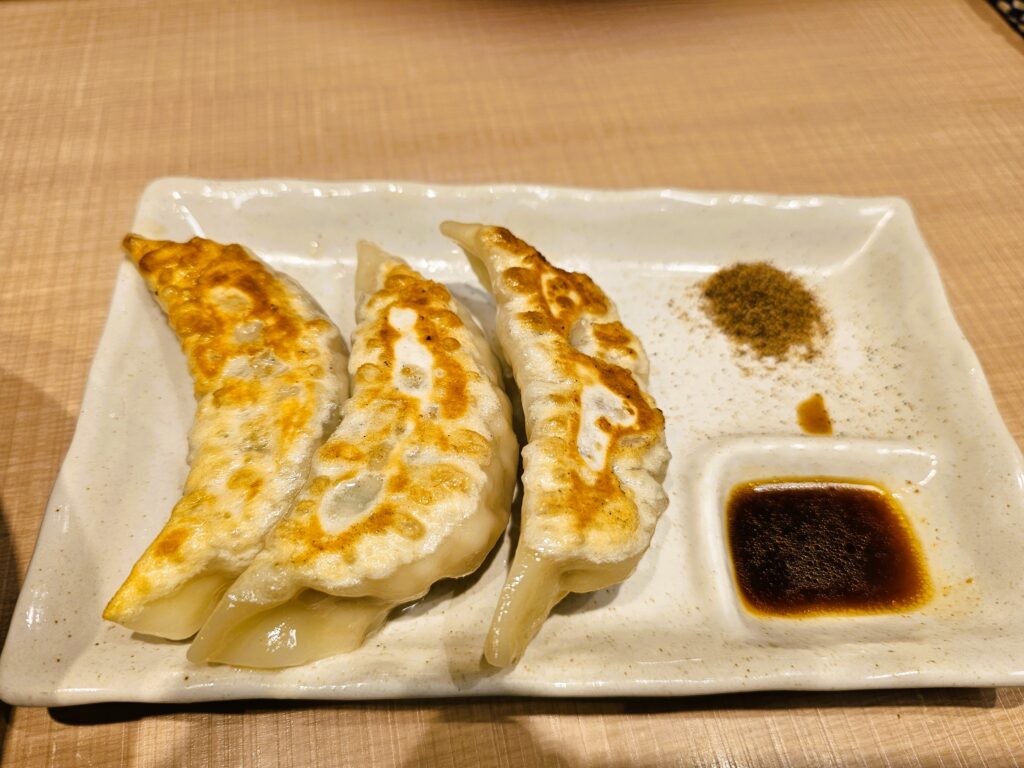
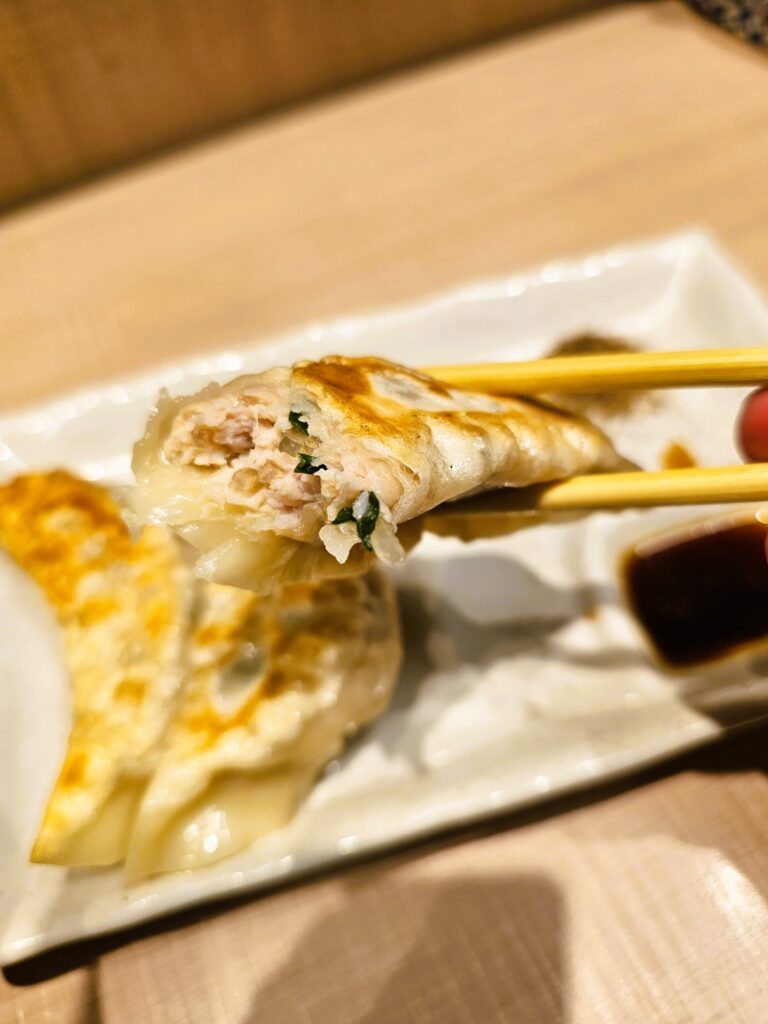
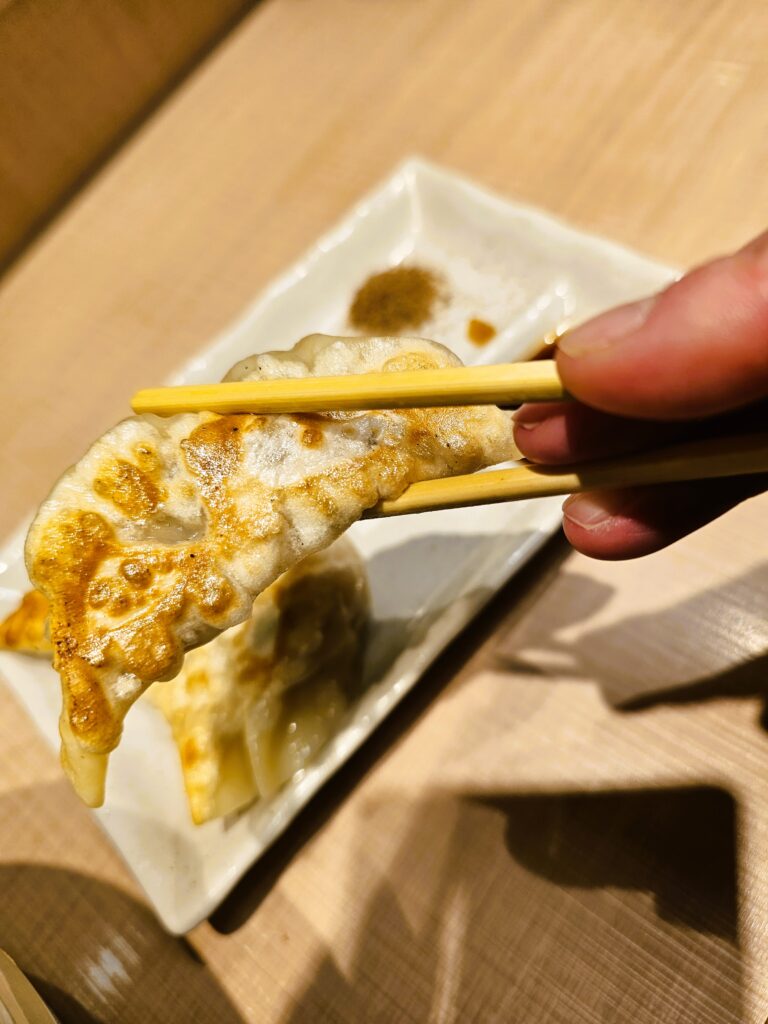
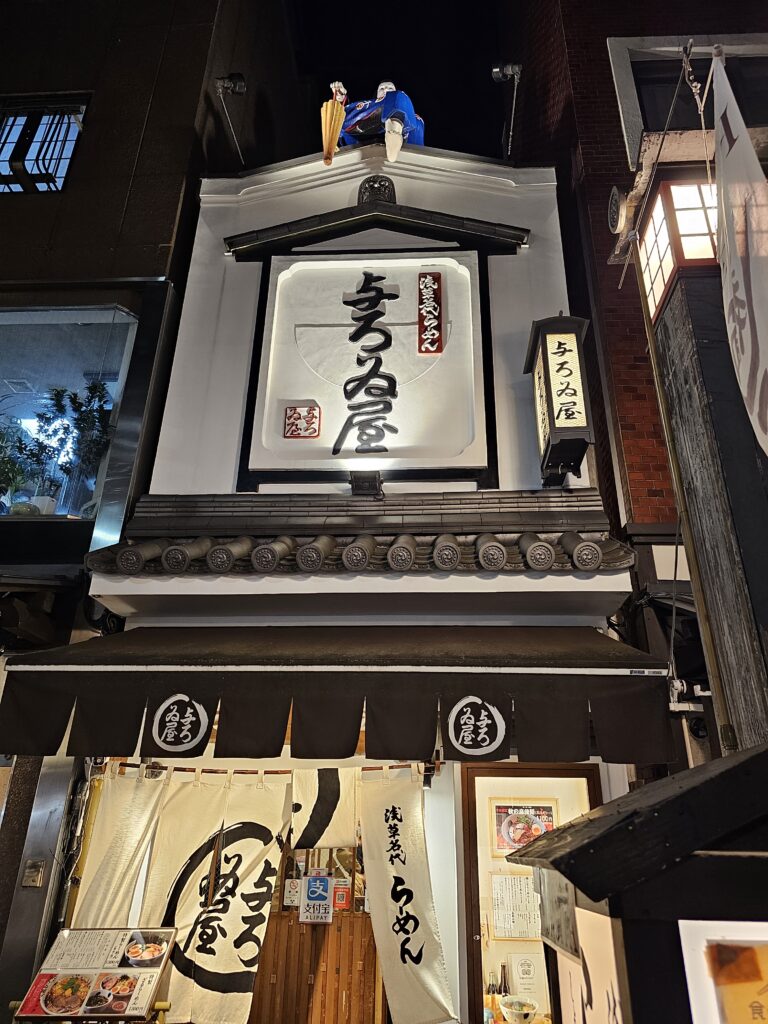
Yoroyiya Ramen 
Overall, a very delicious meal in a small ramen restaurant near Senso-ji temple in Asakusa Tokyo. It’s a perfect place to stop off after visiting the temple or on the way there.
Yoroiya was a definite stand out due to it’s overall delicious bowl of ramen. The broth, the pork, the egg, were all outstanding. This was a bowl of ramen where everything in it was excellent. I can’t say that for every bowl I’ve encounted.
Yoroiya Ramen
1 Chome-36-7 Asakusa, Taito City, Tokyo 111-0032, Japan
-
What Makes Kitakana Ramen Ban Nai’s Broth So Different And Unique
The Background
Kitakana Ramen Ban Nai has deep roots in Japan. First opening its doors in the city of Kitakata back in 1958, its popularity has steadily grown over the past six decades. Now, with 66 locations in Japan, Kitakana Ramen Ban Nai has taken root in the United States as well. Currently, there are seven location in the United States all in Southern California and Illinois. Four of the locations are in Orange County.
Kitakana is, in itself a different type of ramen then the better known Sapporo (miso broth) and Hakata (tonkotsu). The three of these types of ramen comprise the “Big 3” in Japan. Kitakana ramen differs from it’s ramen counterparts due to its broth and noodles. The broth is made from long-simmered pork bones with a shoyu (soy sauce) base. The noodles differ from other ramen due to how flat, wide, and curly they are.
The Experience
Recently, I stopped by the Fountain Valley location for lunch to check it out. I’d been to the Costa Mesa restuarant but this was the first time trying the Fountain Valley spot.
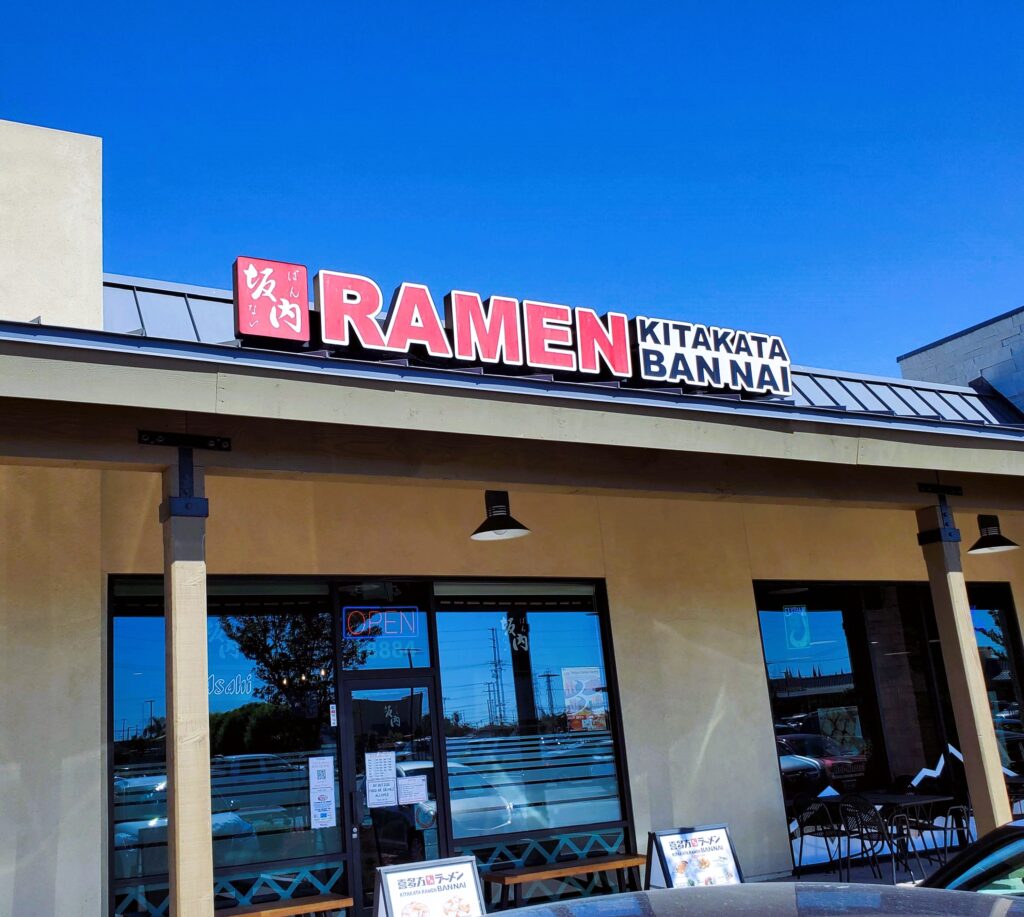
This location is much larger than the Costa Mesa restaurant with ample parking. Both huge positives.
The menu is the same at both locations. There’s actually quite a few diffferent types of ramen offered here.
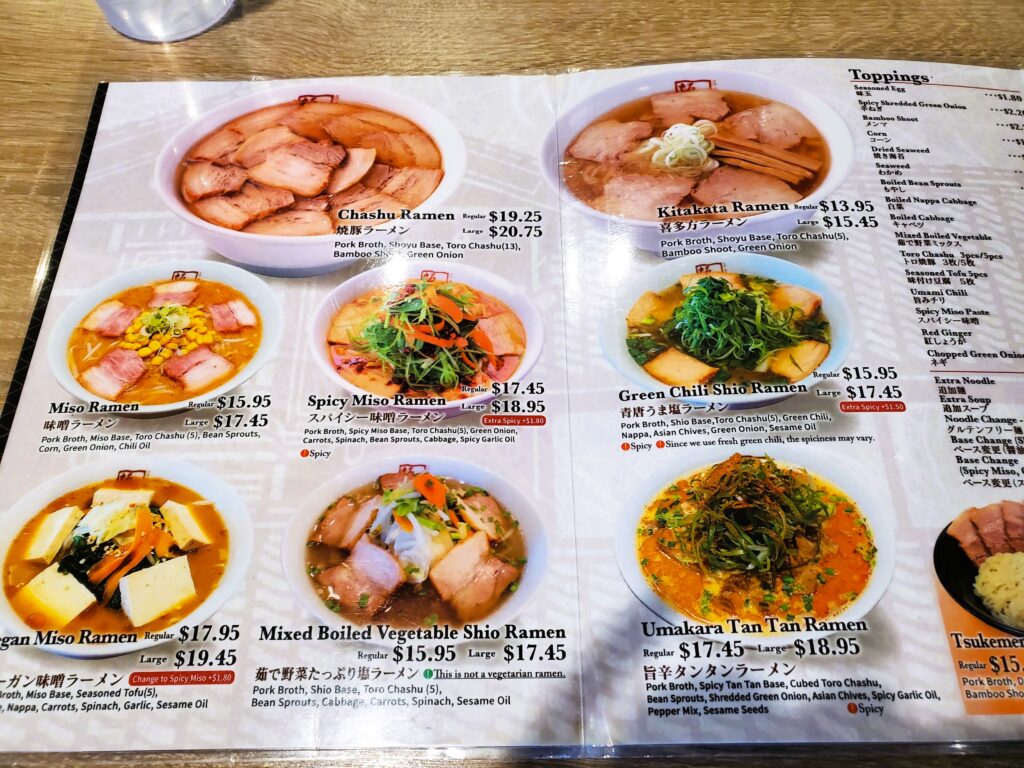
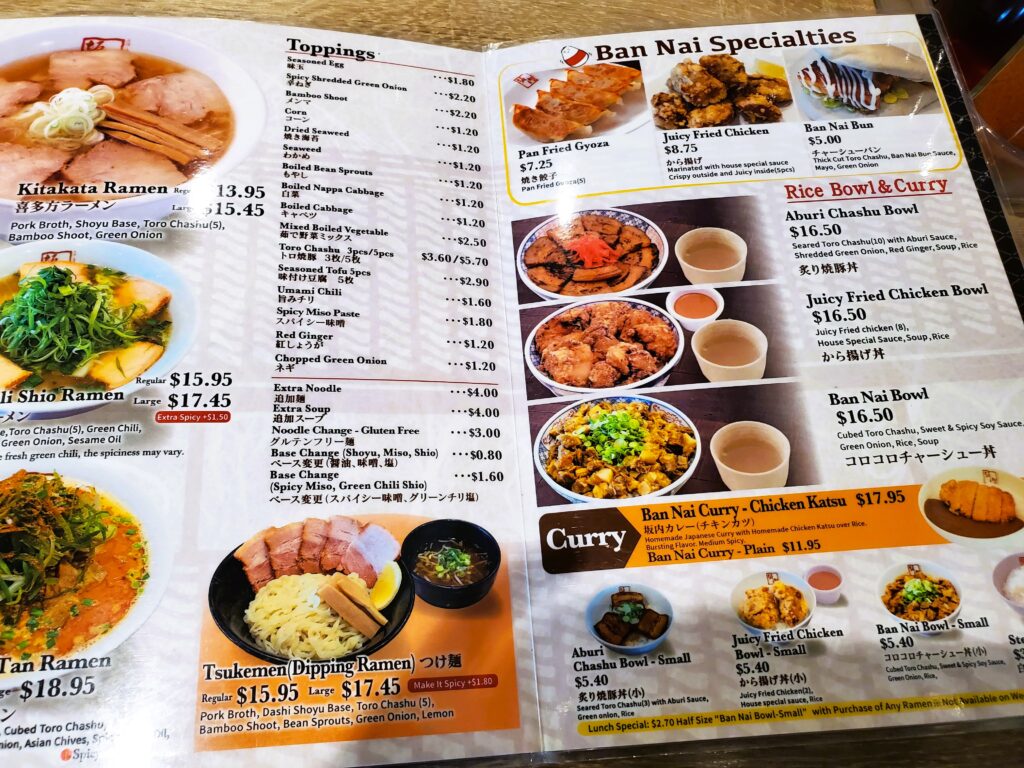
I went with the Kitakata Ramen ($13.95) since I wanted to try the both. I had the Spicy Miso before but hadn’t tried the Kitakata.

The Kitakata Ramen comes with 5 pieces of Toro-Chashu, bamboo shoots, and green onion. As I mentioned previously, this is a pork broth with shoyu (soy sauce) base. Compared to miso or tonkatsu, it’s a much clearer broth.
This broth also stands out from other broths due to how light it is. Like much, much lighter. This doesn’t have that same deep, rich flavor that miso or tonkatsu does. That doesn’t take anything away from this broth, it tastes great and I thoroughly enjoyed it.
You can definitely taste the pork flavor. However, it’s more subdued compared to the shoyu flavor. It’s a great blend and the two flavors certainly mix well together.
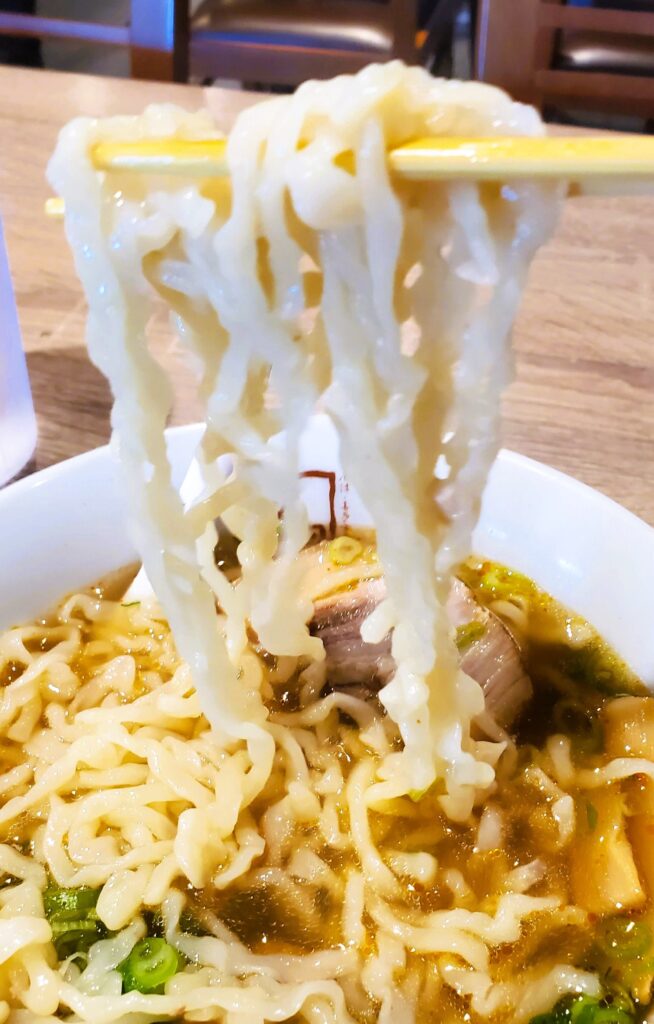
The noodles really stood out to me. These are certainly thicker and quite wavy compared to other ramen noodles. But, what really stood out was how chewy they were. These seemed more in line with udon type of noodles with their chewiness. It was a good surprise!
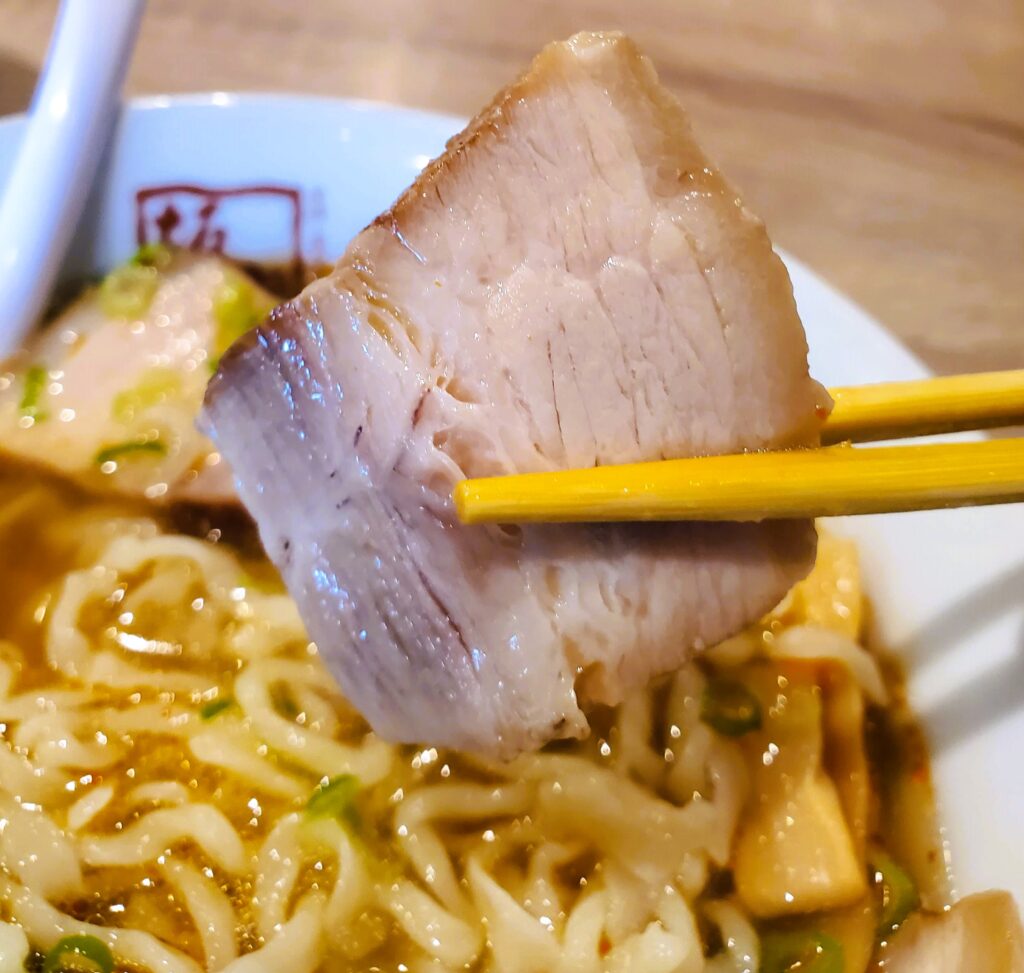
The Toro-Chashu is something unique to Kitakata Ramen as well. Simmered for several hours in their secret sauce, the pieces of chashu here are much smaller cuts than chashu in other types of ramen.
Tender, with some fat, I found the chashu to be quite flavorful. The more pieces I ate the saltier they seemed. But since the broth is lighter it adds a little bit more flavor and didn’t bother me.
The bamboo shoots were a nice touch. They were included in the base ramen, which was great, since I usually order it as a side.
The Verdict
There’s many ramen restuarants in Orange County offering miso and tonkatsu base broths but few, if any, are making the Kitakana style as their main broth.
The lightness of the broth, which still retains excellent flavor, impressed me. The chewiness of the noodles was also very enjoyable and unique. They’re some of the best ramen noodles I’ve had in the Orange County area.
If you’re in the mood for a lighter kind of ramen, Kitakana Ramen Ban Nai is an excellent option!
Address: 18884 Brookhurst St, Fountain Valley, CA 92708
Hours:
Thursday 11 AM–3 PM, 5–10 PM Friday 11 AM–3 PM, 5–10 PM Saturday 11 AM–10 PM Sunday 11 AM–9 PM Monday 11 AM–3 PM, 5–10 PM Tuesday 11 AM–3 PM, 5–10 PM Wednesday 11 AM–3 PM, 5–10 PM Phone: (714) 884-3124
-
Zabon Ramen: Checking Out The Anaheim Packing District Location
Zabon Ramen At The Anaheim Packing District -The Background
First established in Tokyo, Japan in 1978, Zabon Ramen opened up its first location in the US in Torrance in 2016. In 2022 it opened its second location in the popular Anaheim Packing District.
Zabon Ramen is known for it’s broth which is unique since it consists of a combination of Tonkatsu (pork), chicken broth, and soy sauce. They expanded the menu at the Anaheim location adding sushi rolls.

The Experience
Zabon’s is located on the second level at the Anaheim Packing District, right across from the bar. It’s easy to spot if entering from the main entrance. There’s no sit down area specifically for Zabon but seating can be found outside, right behind Zabon, or along the counter space overlooking the first floor.
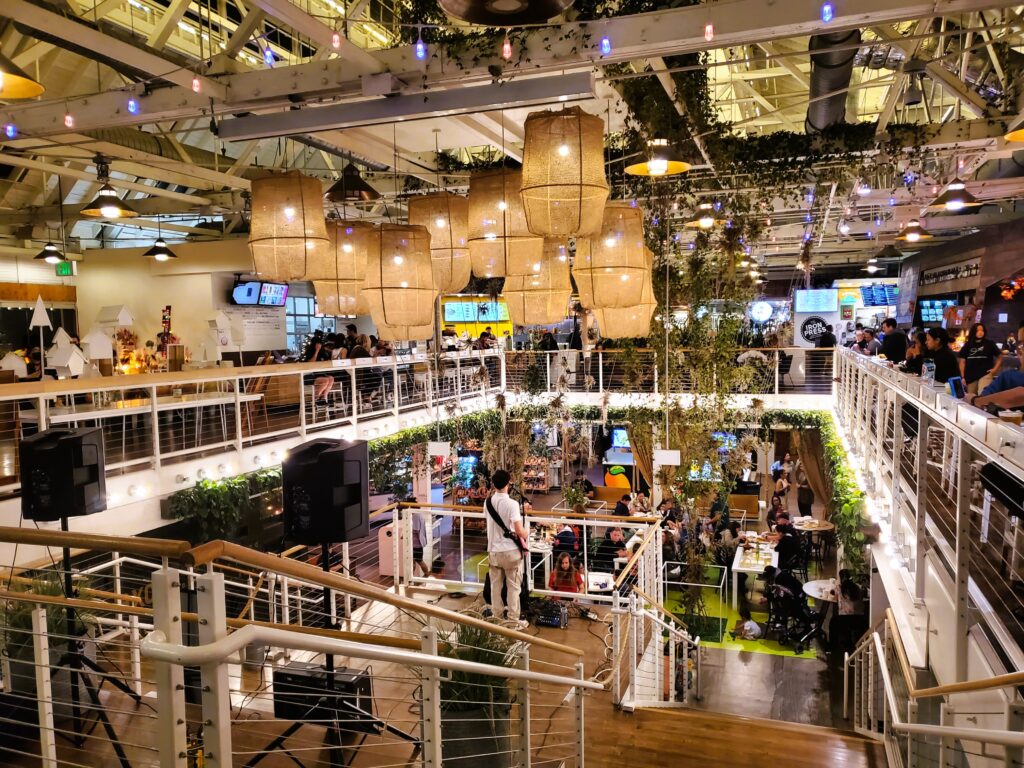
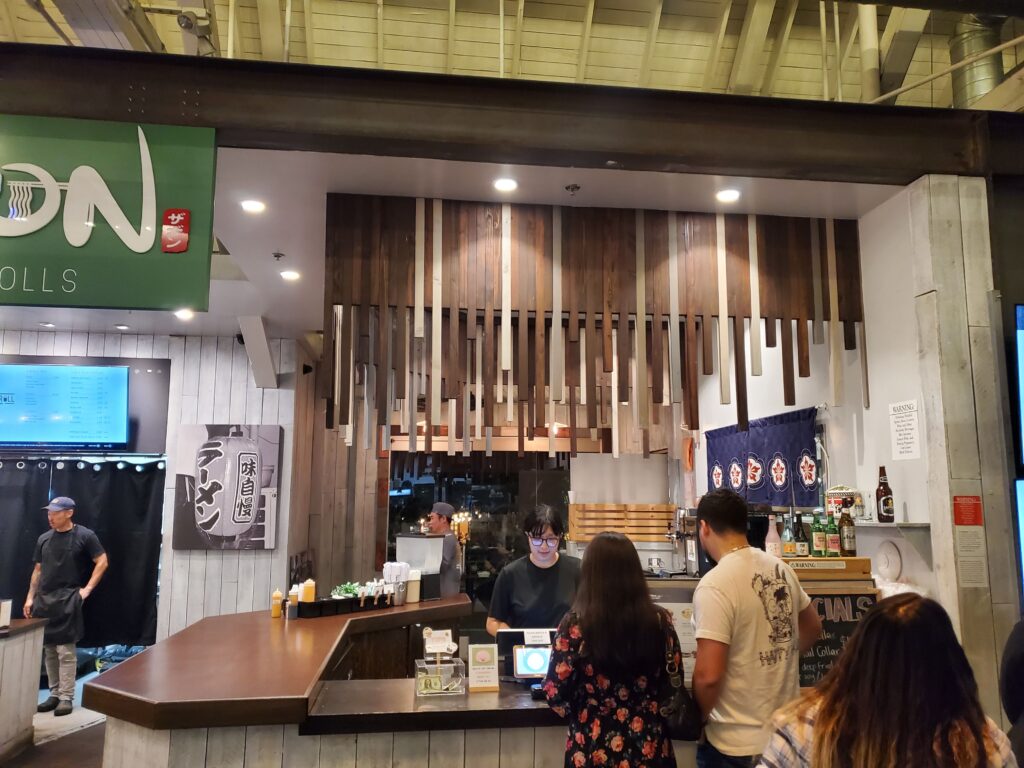
The menu is short and sweet with three types of ramen to choose from – the Zabon, Miso, and Vegan. A handful of appetizers and rice bowls complete the ramen portion of the menu.
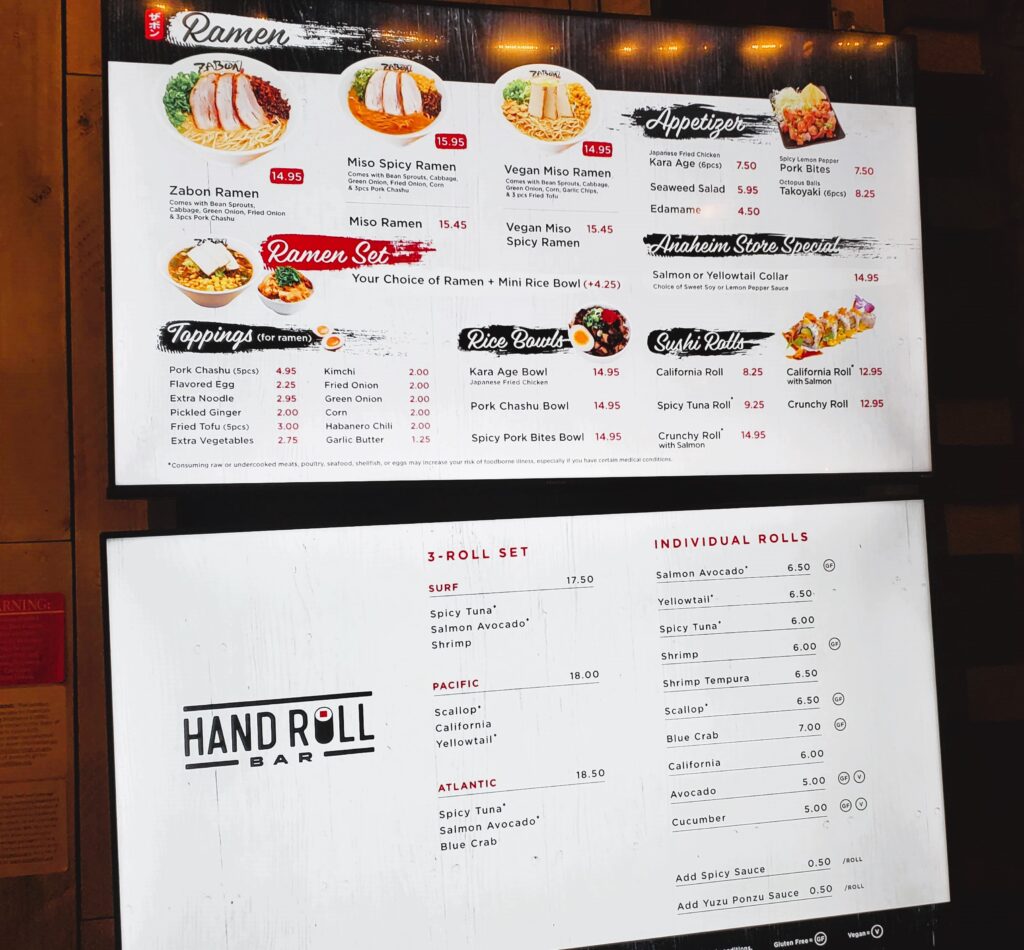
I decided to go with the Zabon Ramen ($14.95) since I wanted to try the base broth. The toppings included bean sprouts, cabbage, green onion, fried onion, and 3 pieces of pork chashu.
The ramen set seemed like a good deal -an extra $4.25 for a mini rice bowl – so I decided to get the chashu bowl.
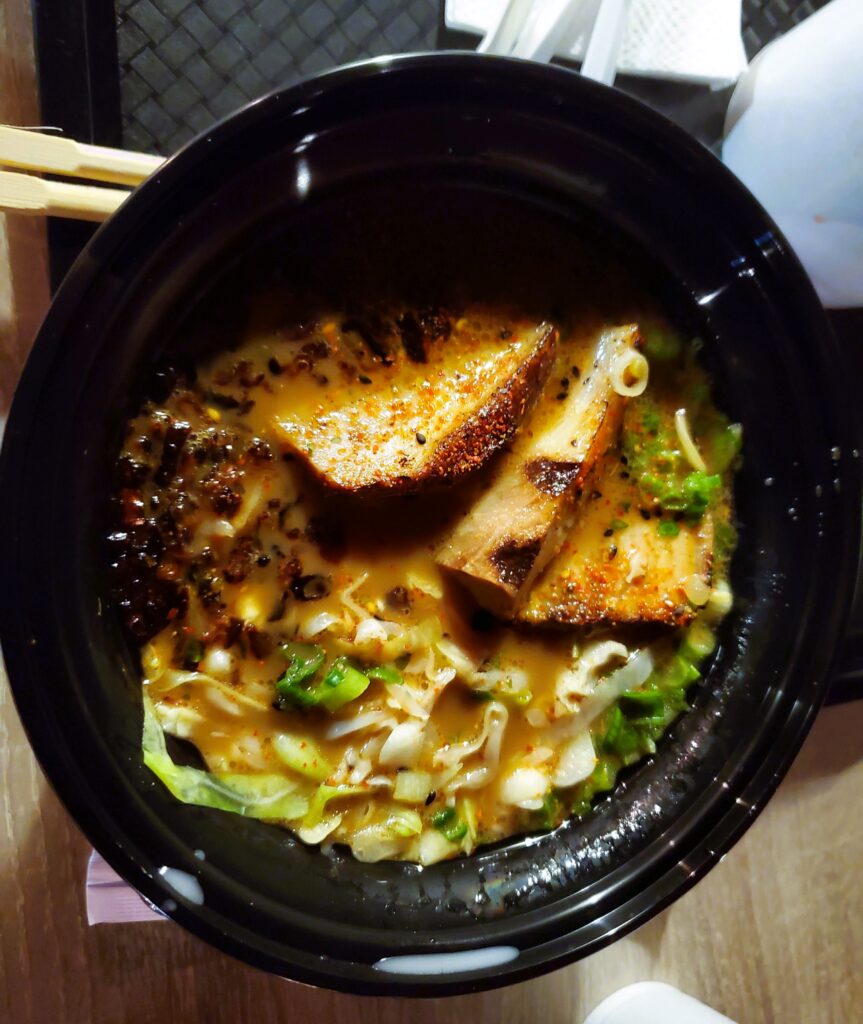
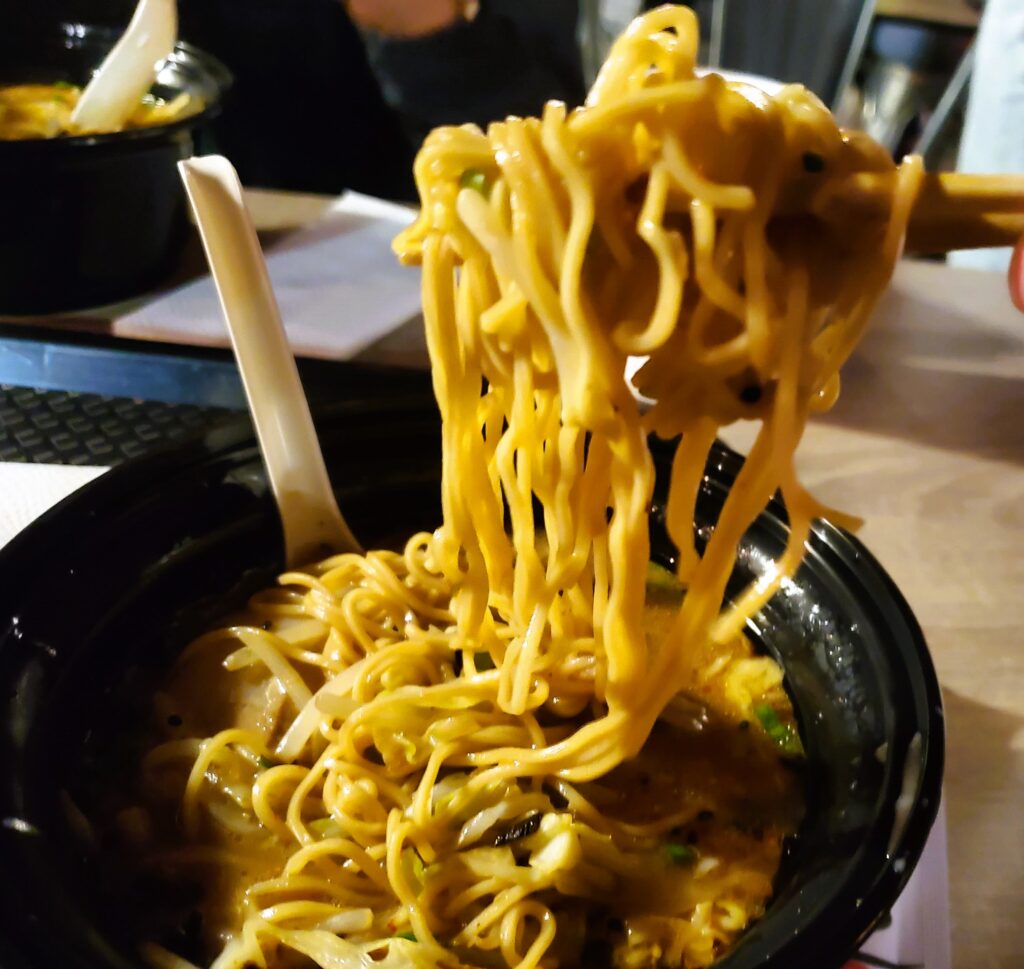
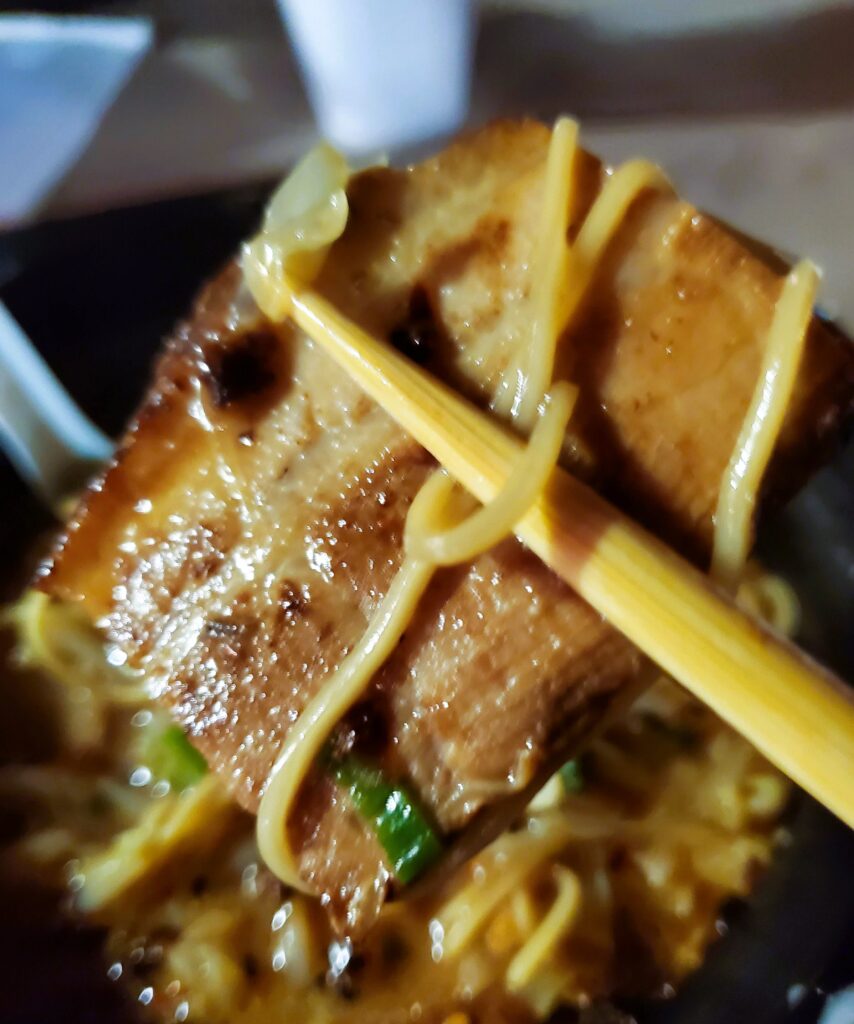
Zabon Ramen
Starting with the ramen. The presentation is great. 3 large, thick slices of chashu, the fried onion, cabbage, and green onion add vibrant color to the rich, brown broth. I was looking forward to dig into it.
The broth was a little underwhelming. It looks rich but lacked that deep, rich flavor you really savor with each spoonful. To me it tasted more like a seasoned broth packet from an instant ramen.
The noodles were just alright. A little too firm for my liking. They lacked real bounce or freshness to them.
Finally the chashu. Kind of on brand with the overall bowl, it was a little tough. It had pretty good flavor to it but I didn’t find it to be very tender.
I did enjoy the crunch of the cabbage in the ramen. I thought it went well within this particular bowl of ramen.
Chashu Bowl
Next up was the the chashu bowl. The bowl had cubed chashu with green onion , ginger, and a teriyaki type sauce drizzled over the top. The rice soaked up the sauce nicely and was well coated throughout the bowl. There was a good amout of food here for a mini bowl.
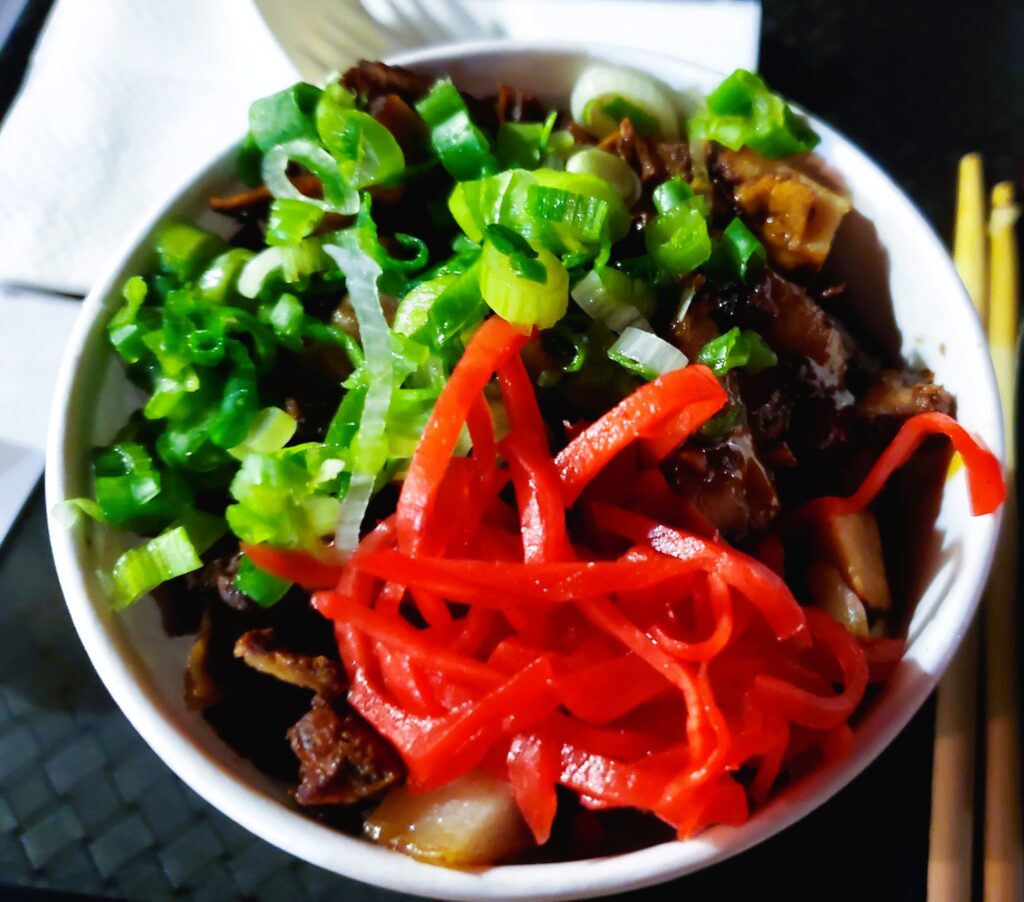
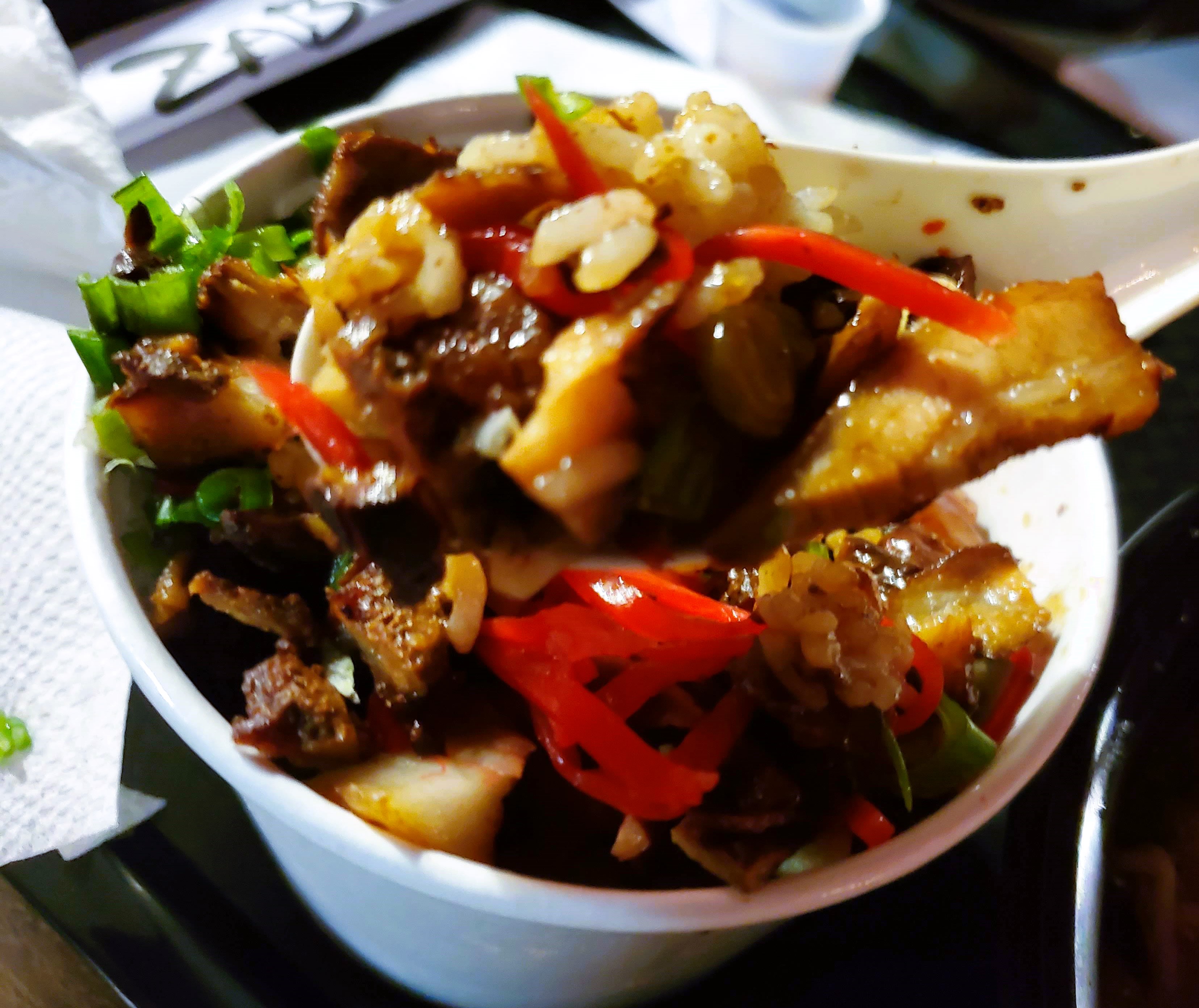
The chasu bits were more tender then the pieces in the ramen and there was a generous amount in this bowl. The sauce, green onion, and ginger all meshed well together and helped to enchance the overall flavor. This was pretty decent but I wouldn’t go out of my wayt to get it again.
The Verdict
Zabon Ramen located in the Anaheim Packing District is more akin to a fast food style ramen. It fits into the vibe and flow of its surroundings, but just doesn’t pack that authentic ramen style restuarant punch to it and the food is reflective of that. The ramen and chasu bowl wouldn’t be enough to bring me back soley to eat at this location. For the amount of food you get, the ramen set deal is pretty solid though.
-
Hakata Ikkousha Tonkatsu Ramen In Costa Mesa
The Background
The first Hakata Ikkousha hails from Fukoaka, Japan and first opened in 2004. It now has a number of restaurants thorughout Japan and can also be found in Singapore, Indonesia, China, Taiwan, Hong Kong, Australia, USA, and Canada. A pretty incredible expansion within a fairly small time frame.
When you break down the name it means one (Ichi) happy (ko) space (sha). A great combination of words to name a ramen restauarant since a nice hot bowl of ramen should indeed make for a “one happy space”.
Fortunately (for me), the three US locations are all located in Southern Calfornia. I went and checked out the Costa Mesa restaurant recently.
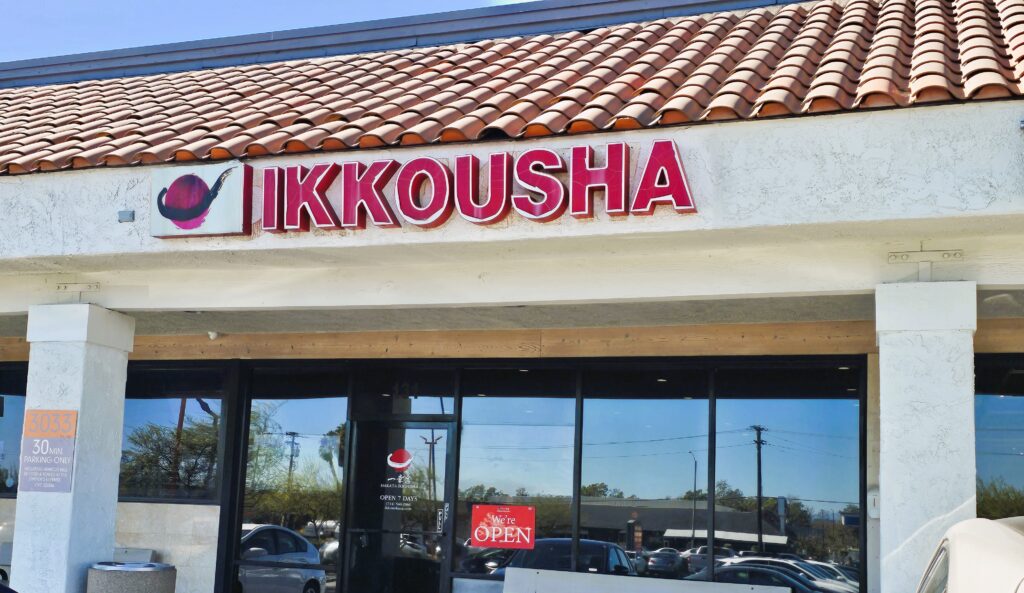
The Experience
The restaurant is in very busy center in Costa Mesa. It can become a parking nightmare at dinner time so I went for lunch. I got here about ten minutes after it opened (11:30 am). It’s a pretty small place. It started getting busy during the lunch rush and was filling up quickly.

The menu had quite a few different types of ramen broths to choose from. The Black Tonkotsu, God Fire, Mentai, and Black Devil Ramen all sounded super interesting.
When I go to a new ramen spot I always like trying their signature ramen, what they’re known for. It’s generally the Tonkatsu ($14) so that’s what I went with. They have a solid lunch combo menu where you can add a side dish for a little extra so I went with the 1/2 fried rice. All in all a pretty solid deal ~ $17.50.
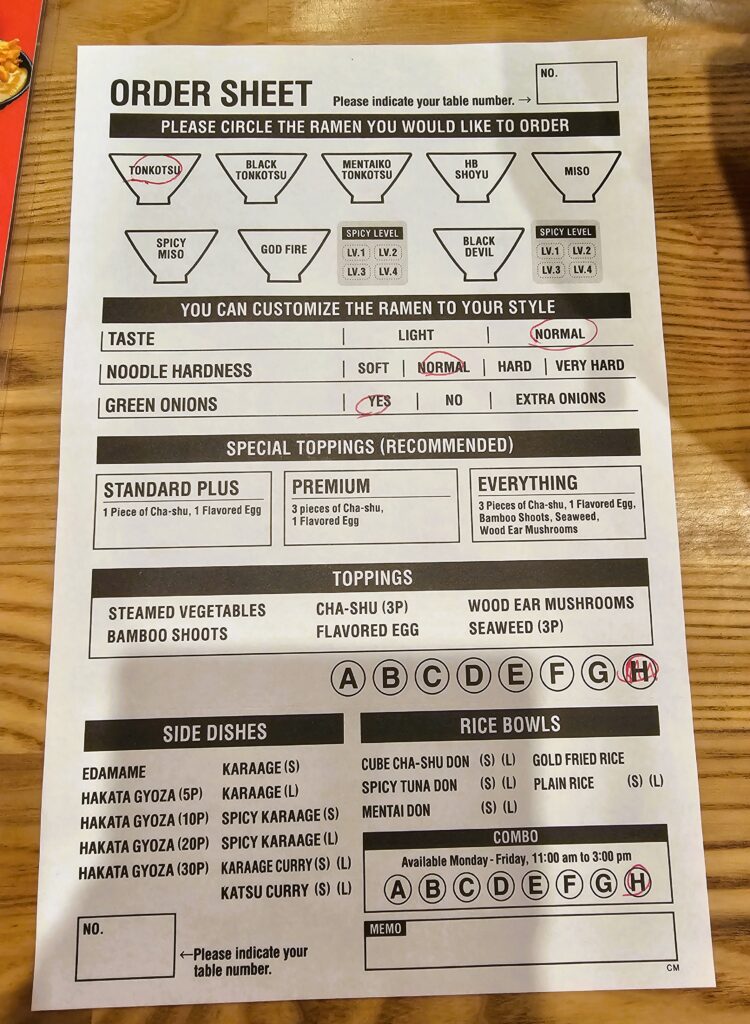
You fill out the order sheet and it gets picked up by the server 
The lunch combo menu Service was very attentive and the food came out within 10 minutes.
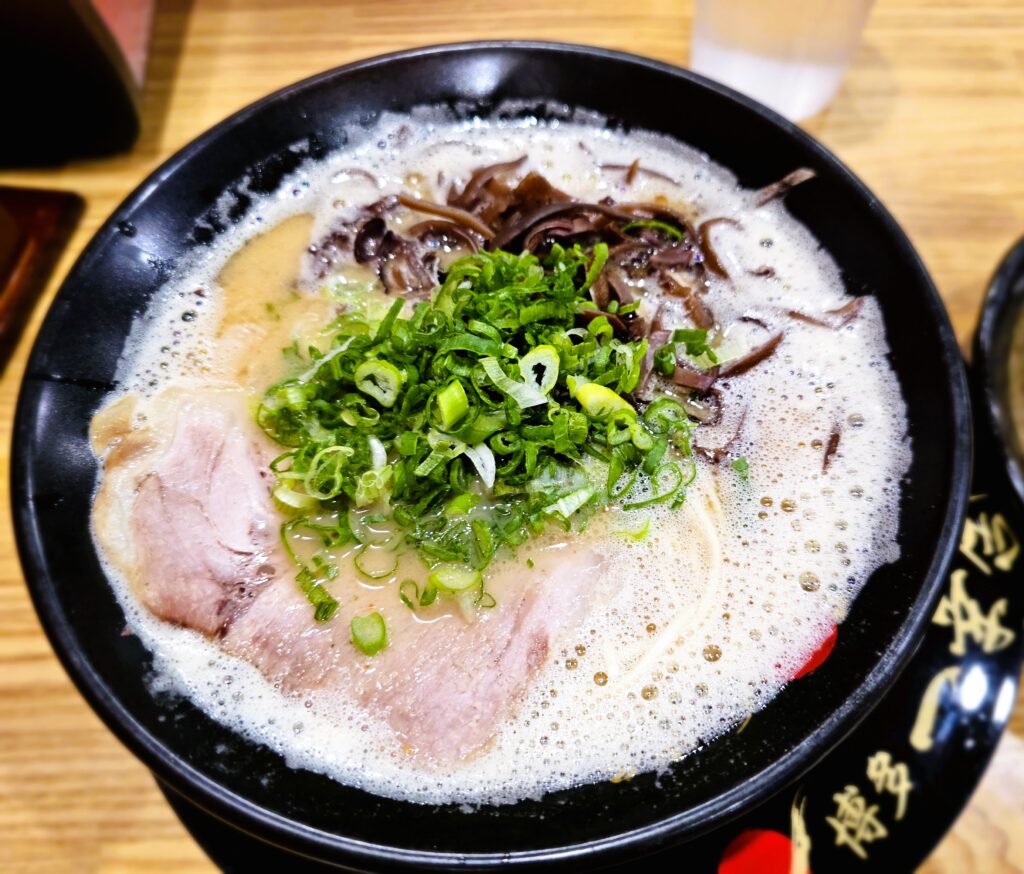
The Ramen
Like the best tonkotsu broths, Ikkousha’s broth is extracted from pork bones over 30 hours long. This bowl comes a with a piece of pork chashu, black fungus, and spring onions.
I don’t ever recall seeing Tonkatsu ramen coming out so frothy like this before. The broth is rich, with a light umami taste. This doesn’t have a really deep flavor and isn’t overly rich for a tonkotsu broth though. It’s nice middle of the road flavor.
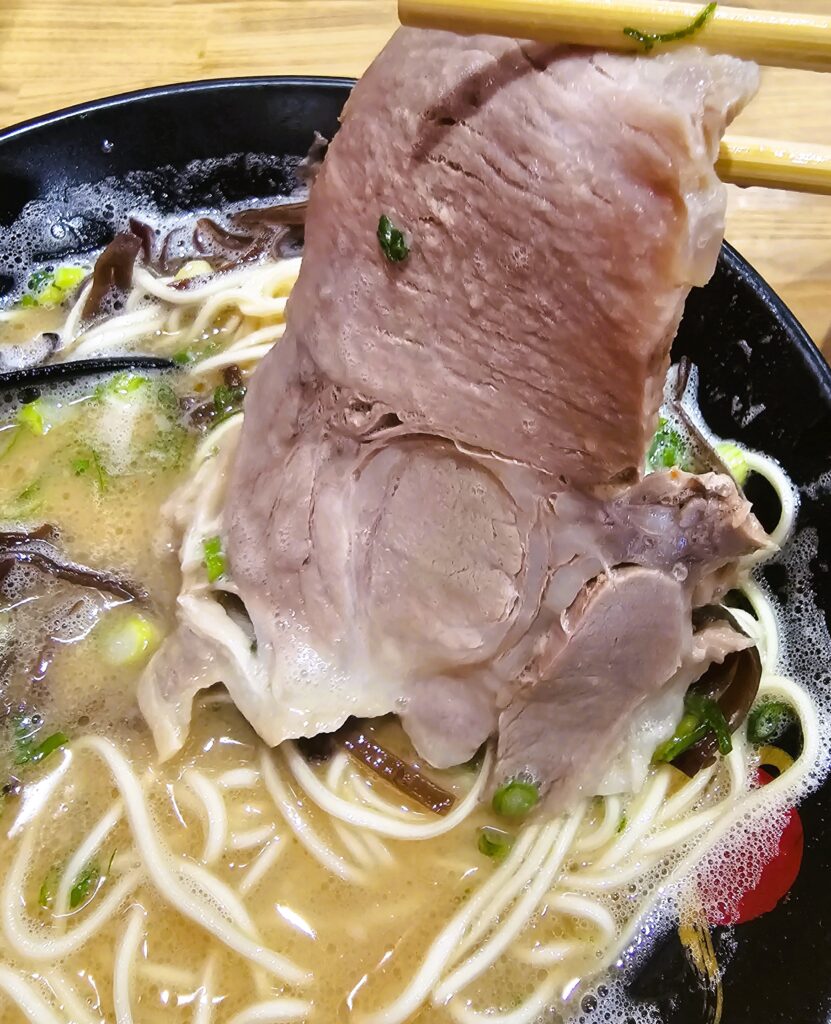

Only one piece of chashu comes with the ramen. It’s a good sized piece, but it’s disappointing that you need to shell out more money for an additional piece or two. The chashu itself was good. It was tender with good flavor.
The noodles here a very thin but definitely have a freshness to them and are tasty. I got the normal firmness and it was a little too firm for my liking. The next visit I’d definitely get soft, but that’s obviously a personal preference..
The black fungus mushroom shreds add a welcome different kind of texture to the ramen. They didn’t really have any kind of taste to them, purely provided texture to the bowl. Something that’s always welcome.
The Fried Rice
The fried rice had bits of pork in it with egg, onion, and green onion. The pork bits had great flavor and the fried rice had a bit of a charred bbq taste to it. There’s definitely a lot of onion pieces in here. I enjoyed the abundance of onion initially but got a little tired of it the more I ate. Overall an enjoyable fried rice!
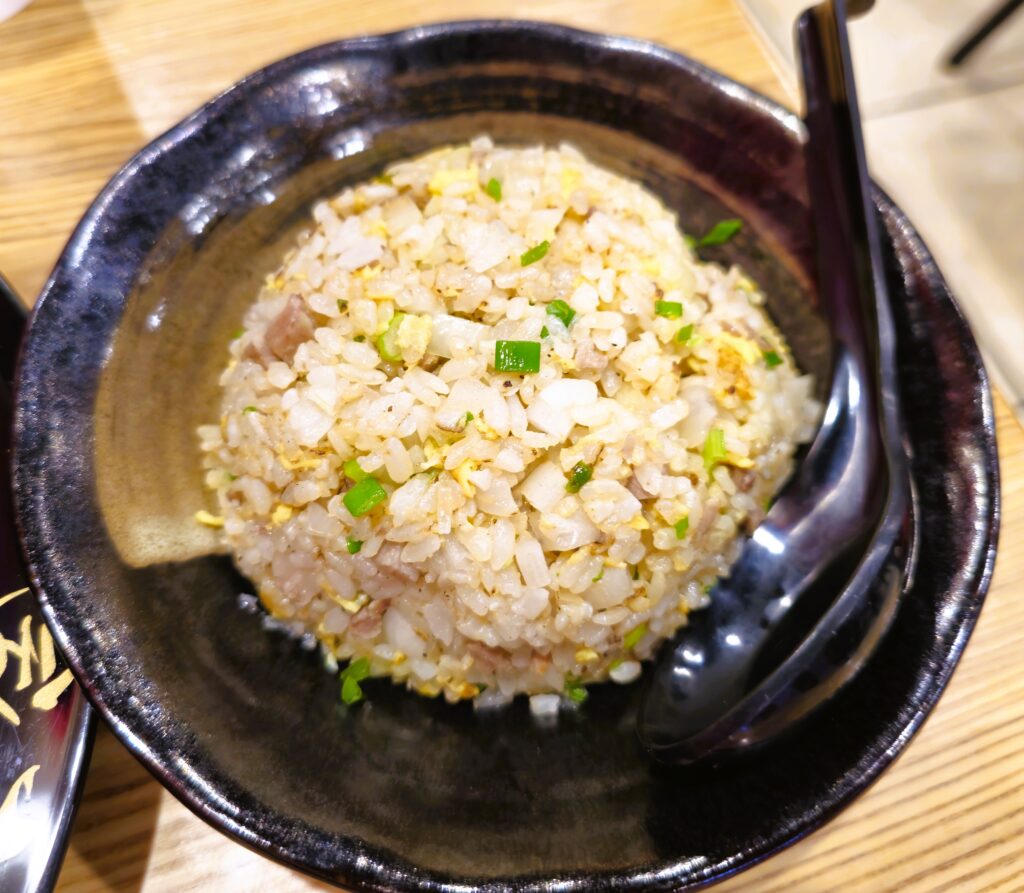
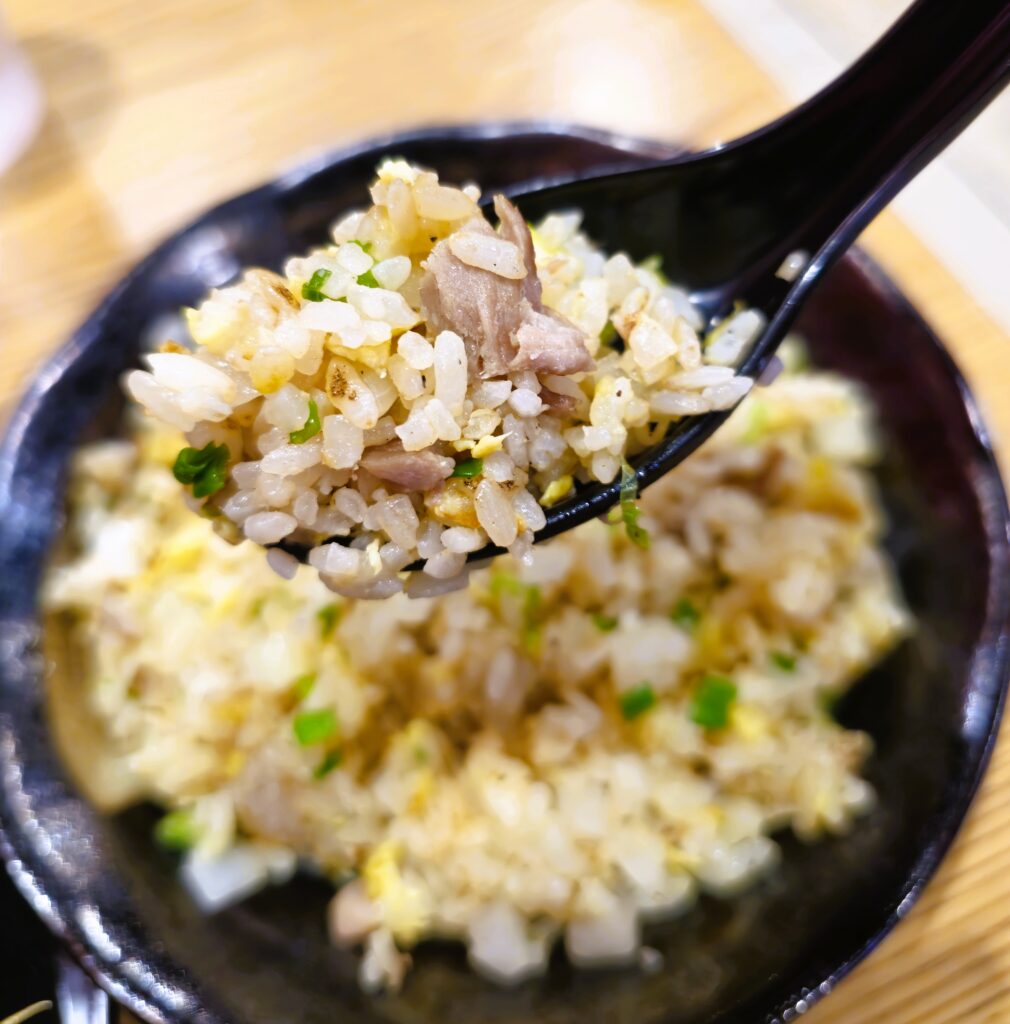
The Verdict
There’s many many ramen options in Orange County and it’s hard to standout with so many delicious places to choose. Hakata Ikkousha Tonkatsu Ramen is a solid ramen option.
The tonkatsu broth is on the lighter side yet remains flavorful. It’s a good tonkatsu broth if you’re wanting something that’s not going to put you in a coma after.
I wouldn’t put Ikkousha at the top of my favorite ramen places I’ve visited in Orange County. But it’s certainly a nice change of pace and provides a good ramen option in the Costa Mesa area.
-
HiroNori Craft Ramen – Irvine, CA | Authentic Broth And Sauce With Fresh Ramen Noodles
The Background
HiroNori opened their first restaurant back in 2017 and have now expanded to 13 locations throughout California, primarily in Southern California. The popular ramen restaurant has received numerous awards from local food critics since its opening. Notable awards include being selected to join the 2019 Michelin Guide and most recently being named a Michelin Guide Bib of the Week in 2023. In other words, this place serves some quality ramen!
HiroNori has three different types of ramen: Tonkotsu Ramen, Shoyu Ramen, and Vegan Ramen. The best known is the Tonkatsu Ramen. The Tonkatsu broth is made in a traditional Japanese manner, prepared with simmered pork bones as its base. The broth takes 24 hours to prepare. The quality and depth of flavor is a positive reflection of this broth preperation.
The Experience
The location I went to was the original restaurant in a small shopping center off Michelson Drive in Irvine. It opens up at 11am so I got there around 11:15am on a Thursday to grab a bowl of Ramen for lunch. One side note here: parking gets really bad in this center during peak hours. It’s a small parking lot for so many restuarants and shops.
On this day, at this time, parking was not too bad. HiroNori itself can get very busy at dinner. It’s a rather small space, so it fills up rapidly. By the time I got to the restaurant, there was no line, but the restaurant was already half full.
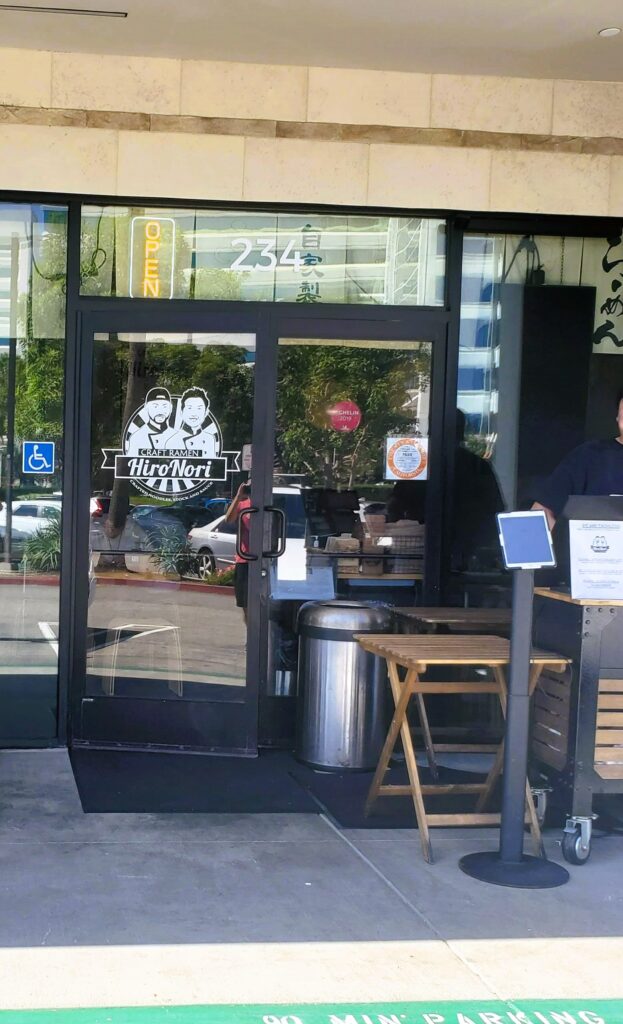
There’s no sign above the restaurant. You’ll hvae to find the HiroNori logo on the door. Or just follow the line 
In addition to the ramen HiroNori offers a few rice bowl selections and sides. As mentioned above, there’s three different types of ramen here: Tonkatsu, Shoyu, and Vegan. Tonkatsu ($16.30) was a no-brainer selection for me.
A nice touch here as I waited for my ramen was the water. Yes, I know water is generally an afterthought, but here the water was infused with watermelon, lemon, and mint. Quite refreshing on a summer day!
After sipping on my water, the ramen came out shortly thereafter. Superb service!
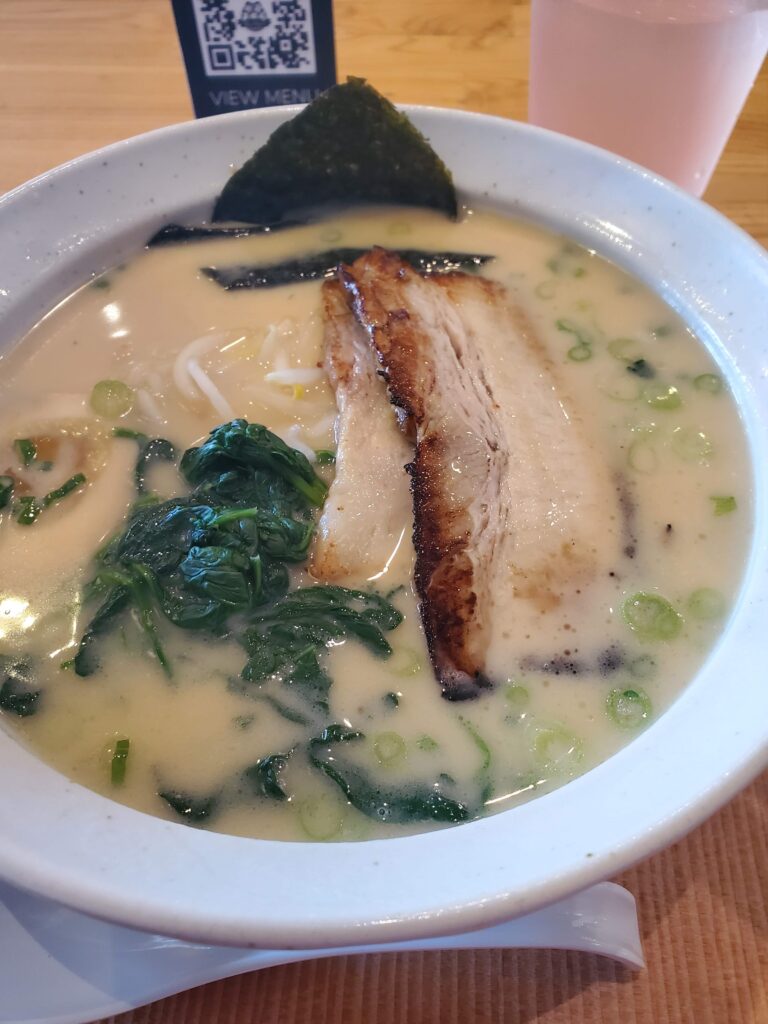
Topped with two pieces of pork chashu, green onion, spinach, seaweed, bean sprouts, and a half egg ,this ramen had a lot going on. Just by looking at the hue of the broth, I could tell this was going to be extremely rich.
The broth was indeed very rich and provided quite a unique flavor. Because of its richness, this broth carried more weight than other Tonkatsu broths. With the broth taking 24 hours to prepare there’s a distinct, deep porky flavor, which I haven’t experienced elsewhere. It’s a VERY flavorful Tonkatsu broth.
The pork chashu is very tender and nearly falls apart when picked up. Nicely grilled with fantastic char flavor, this was some good pork chashu. I loved the fat to meat ratio on the two pieces as well!
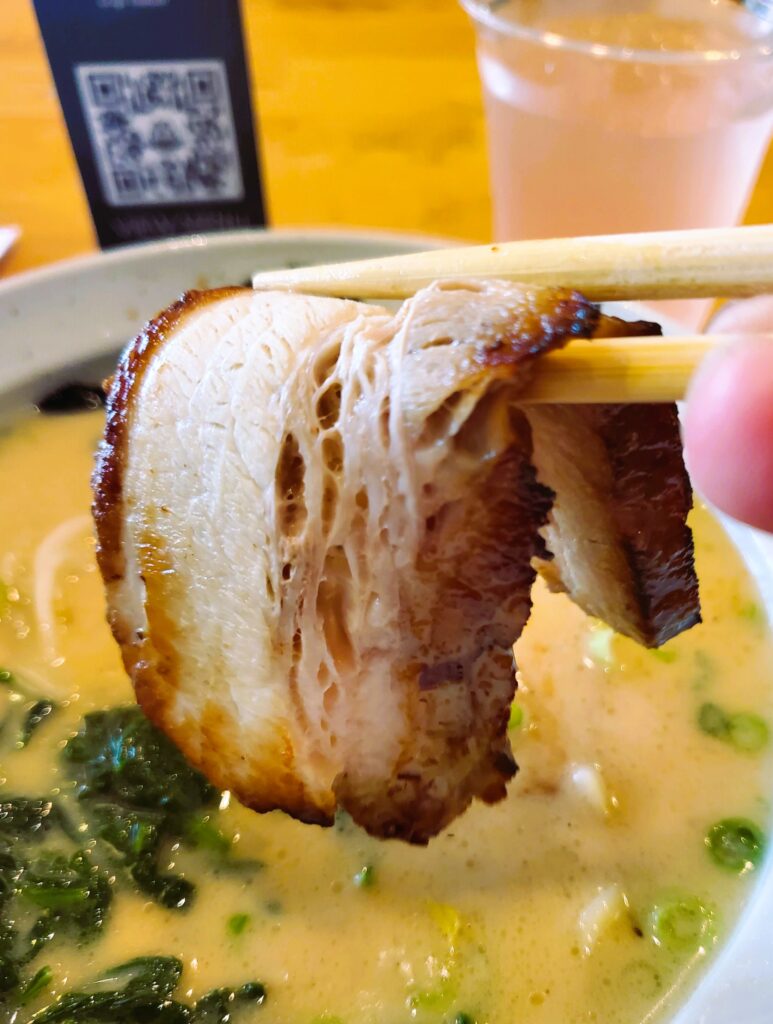
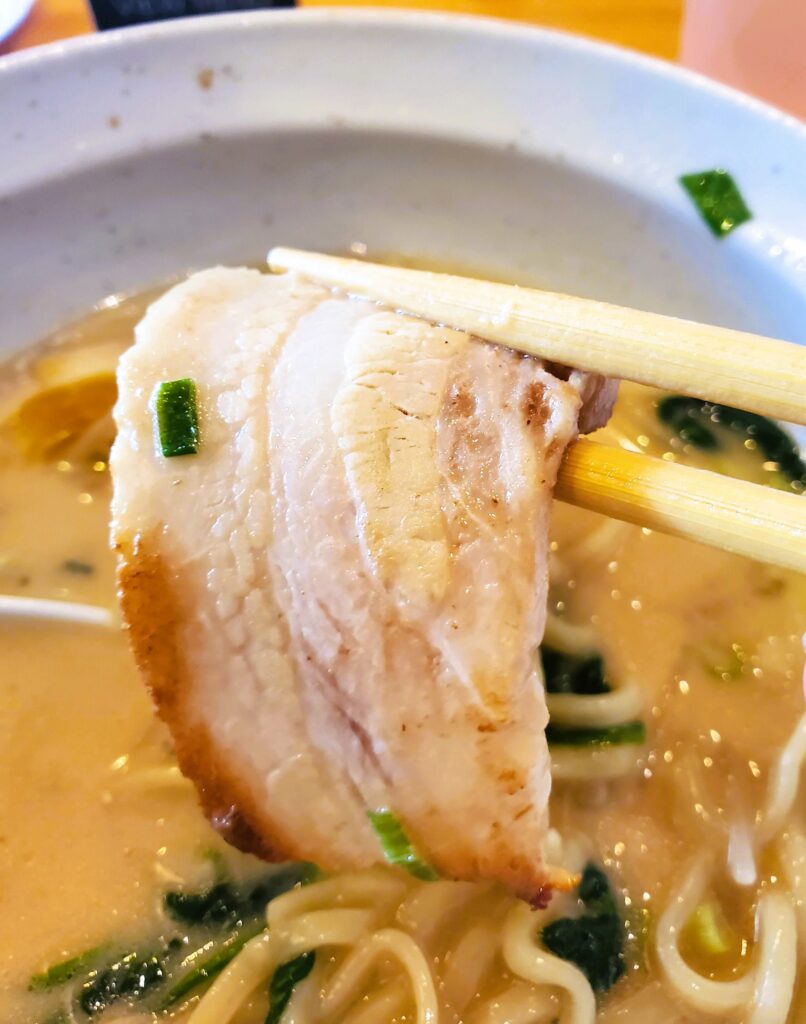
HiroNori makes fresh noodles daily and it’s readily apparent in both texture and flavor. The noodles are al dente, with great springiness, and are a little thicker than other ramen noodles.
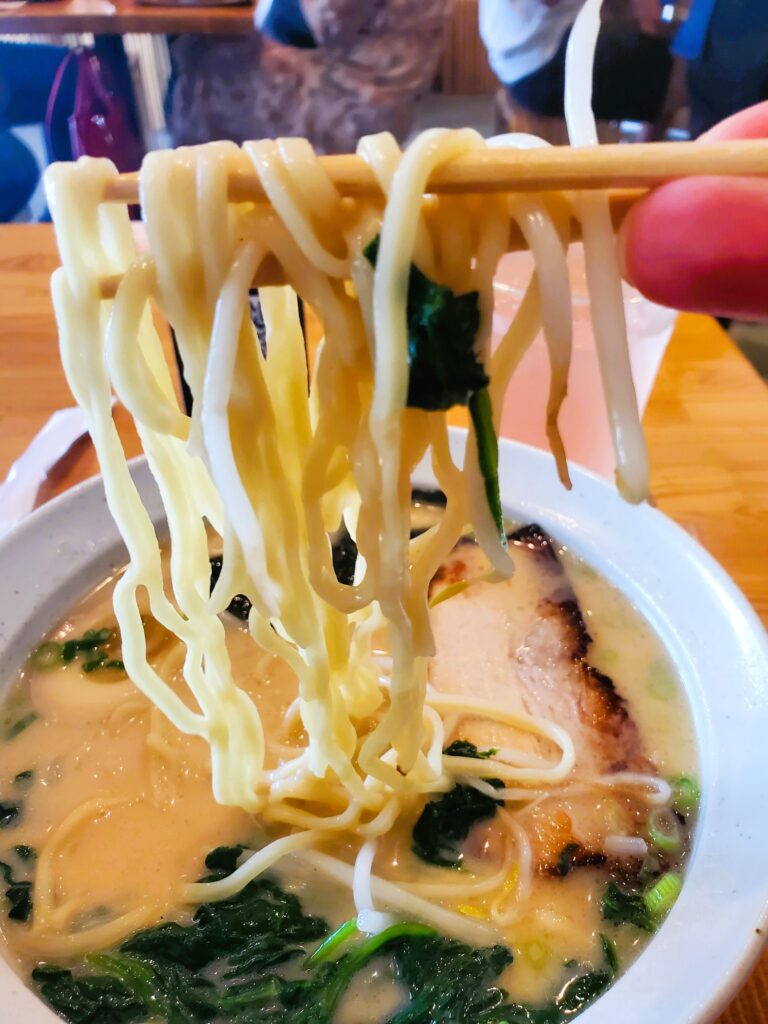
The half egg was great as well. Somewhat between a hard boiled and poached egg. The yolk was very creamy and tasty.

Every bite of the ramen contains multiple layers of textures to enjoy from the noodles, to the pork, the egg, the spinach, seaweed, and green onion. Washing it down with some of that flavor filled broth was truly satisyfying.
The Verdict
HiroNori Craft Ramen offers a unique Tonkatsu Ramen experience. The broth has such a deep, pork infused flavor compared to other Tonkatsu Ramen broths. It’s a real standout. Combined with the freshly made noodles, tender pork chashu, and veggies, it all adds up to one tasty bowl of ramen.
HiroNori stands toe to toe with some of the best ramen locations in Orange County, of which there are many. If you’re in the area of one of their many locations it’s definitely worth a try!
